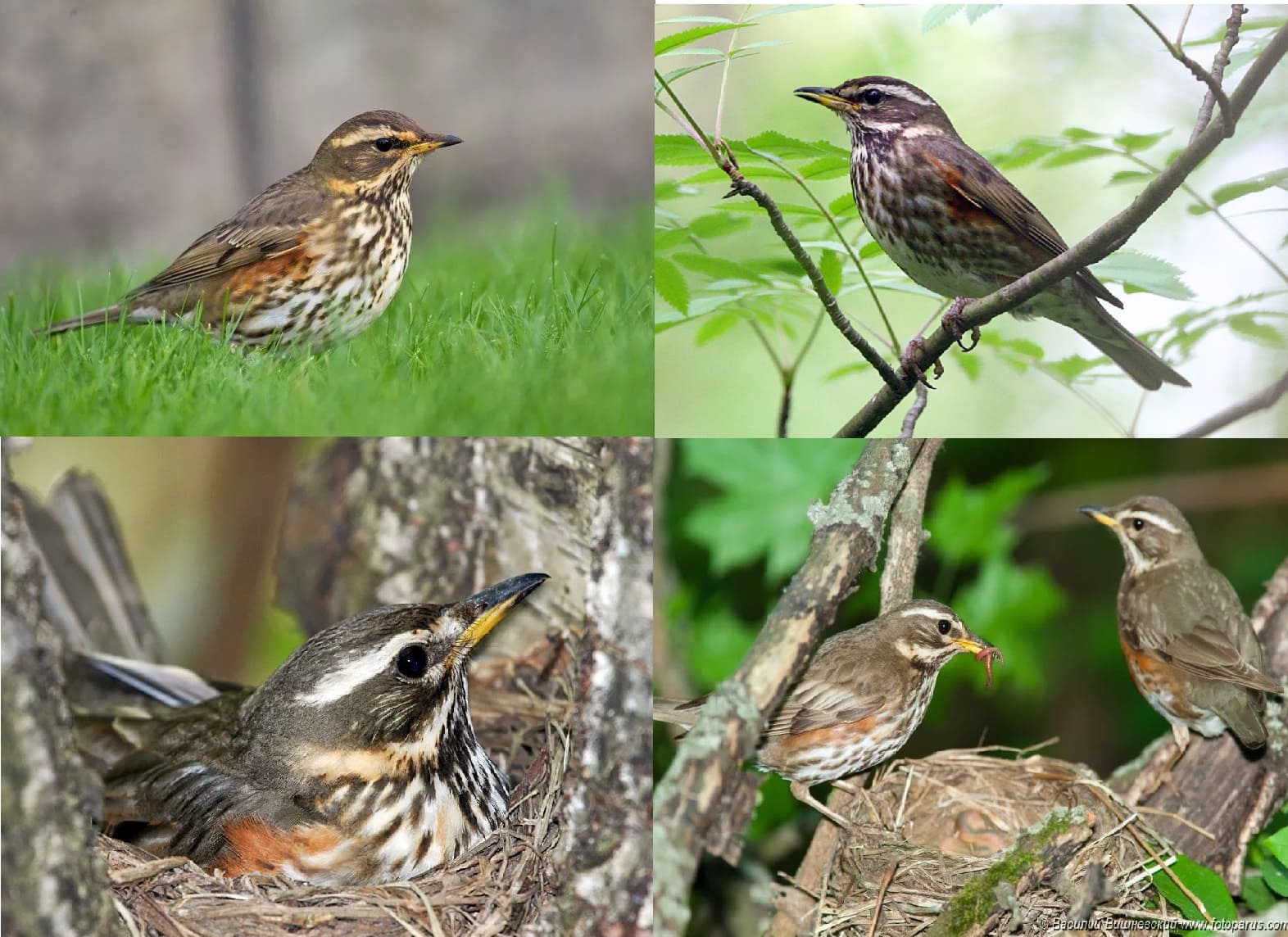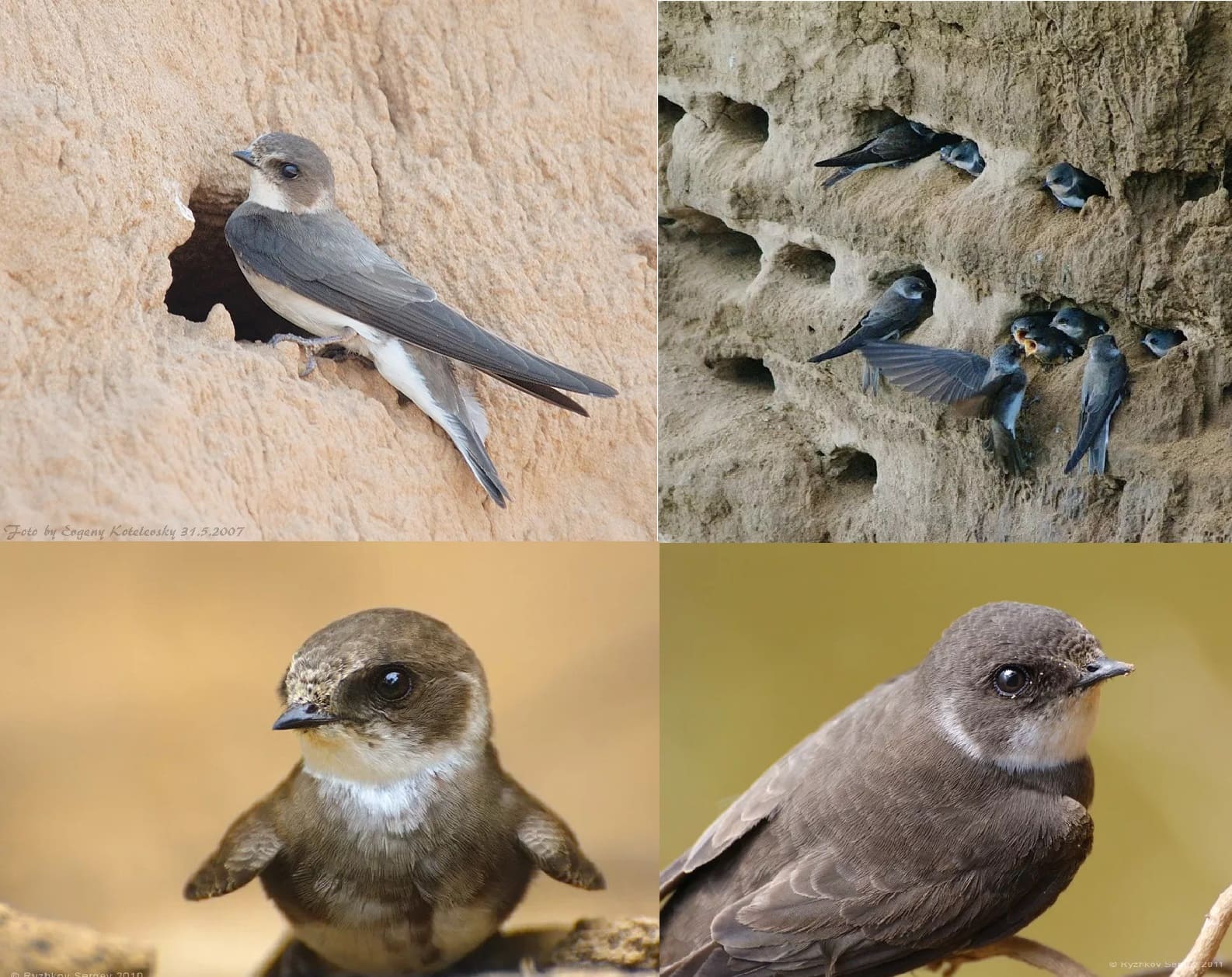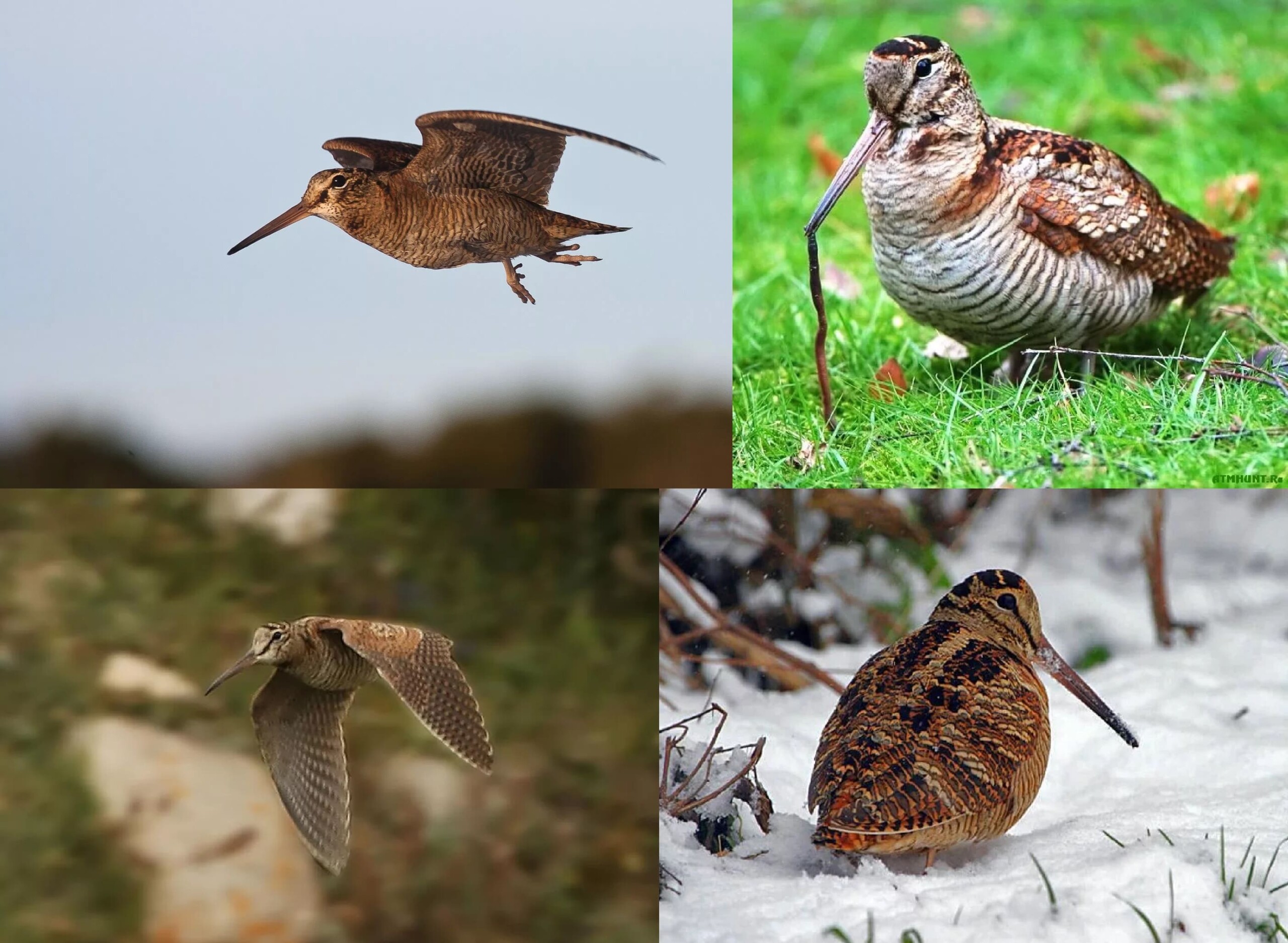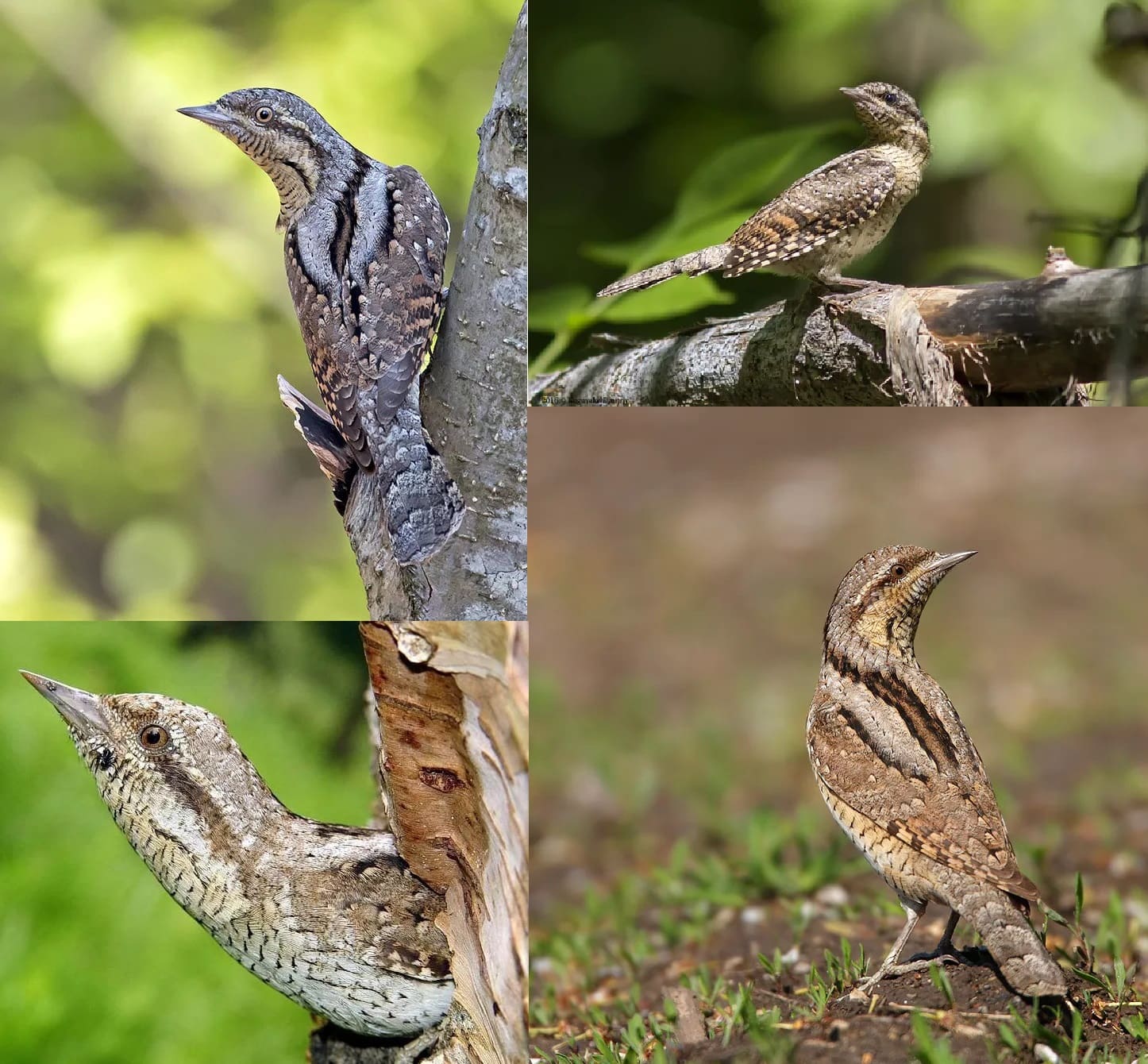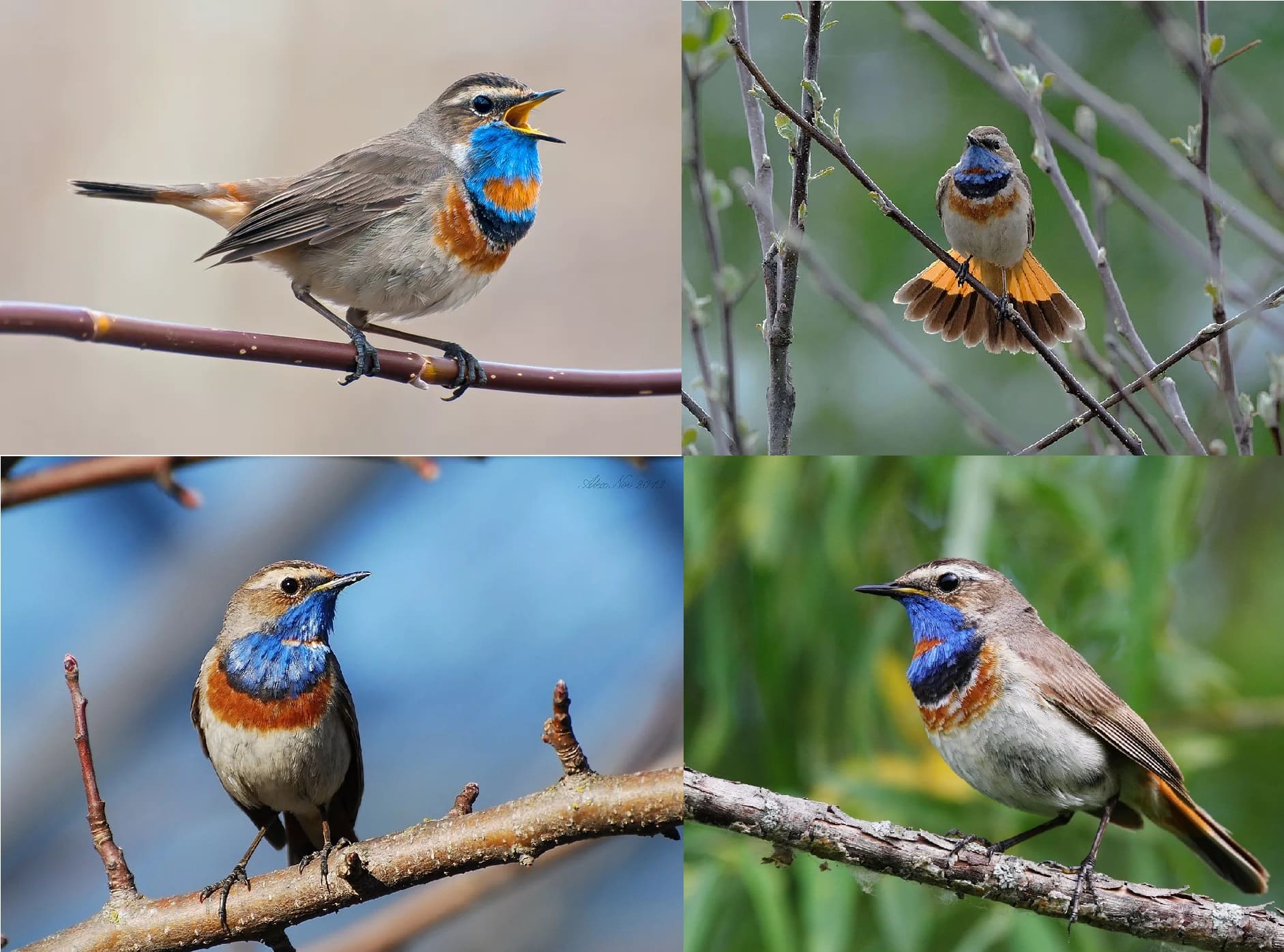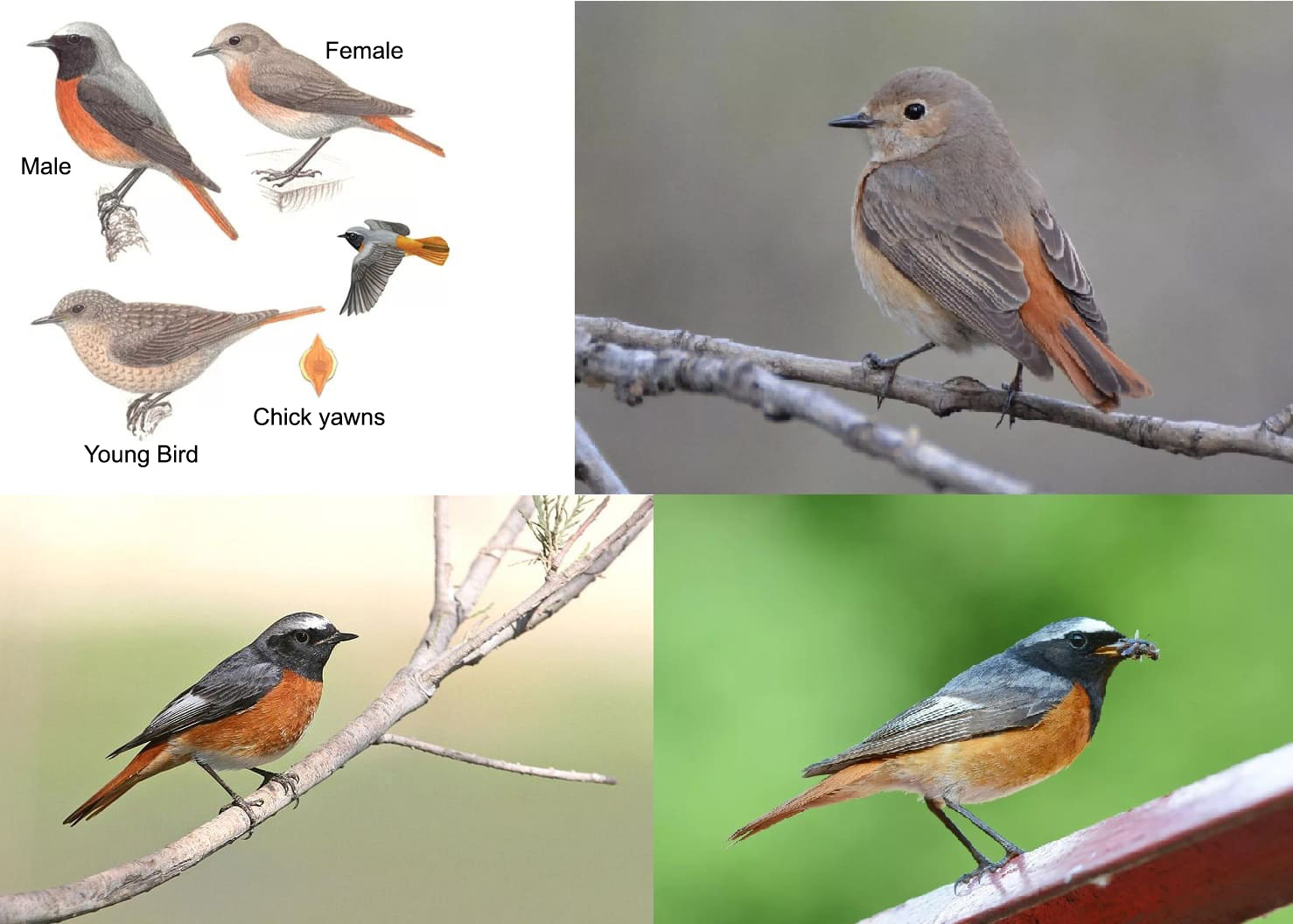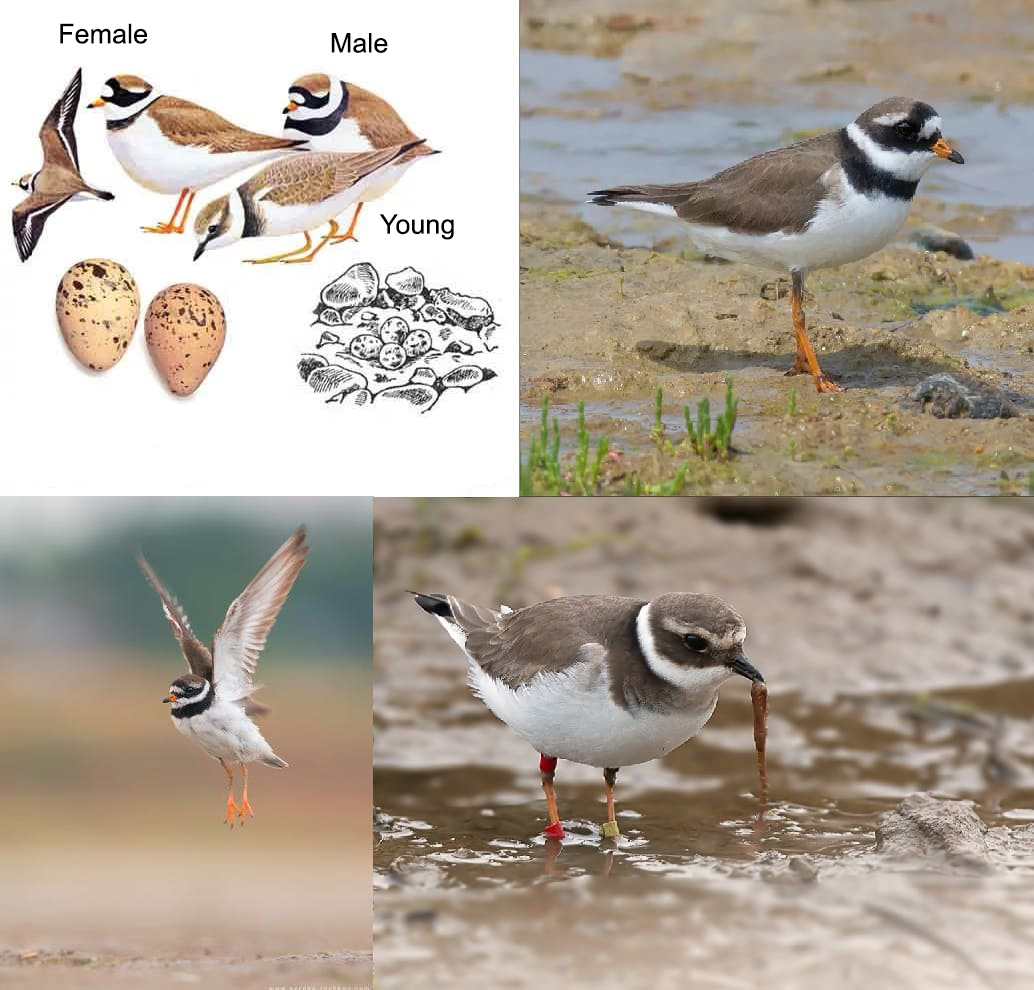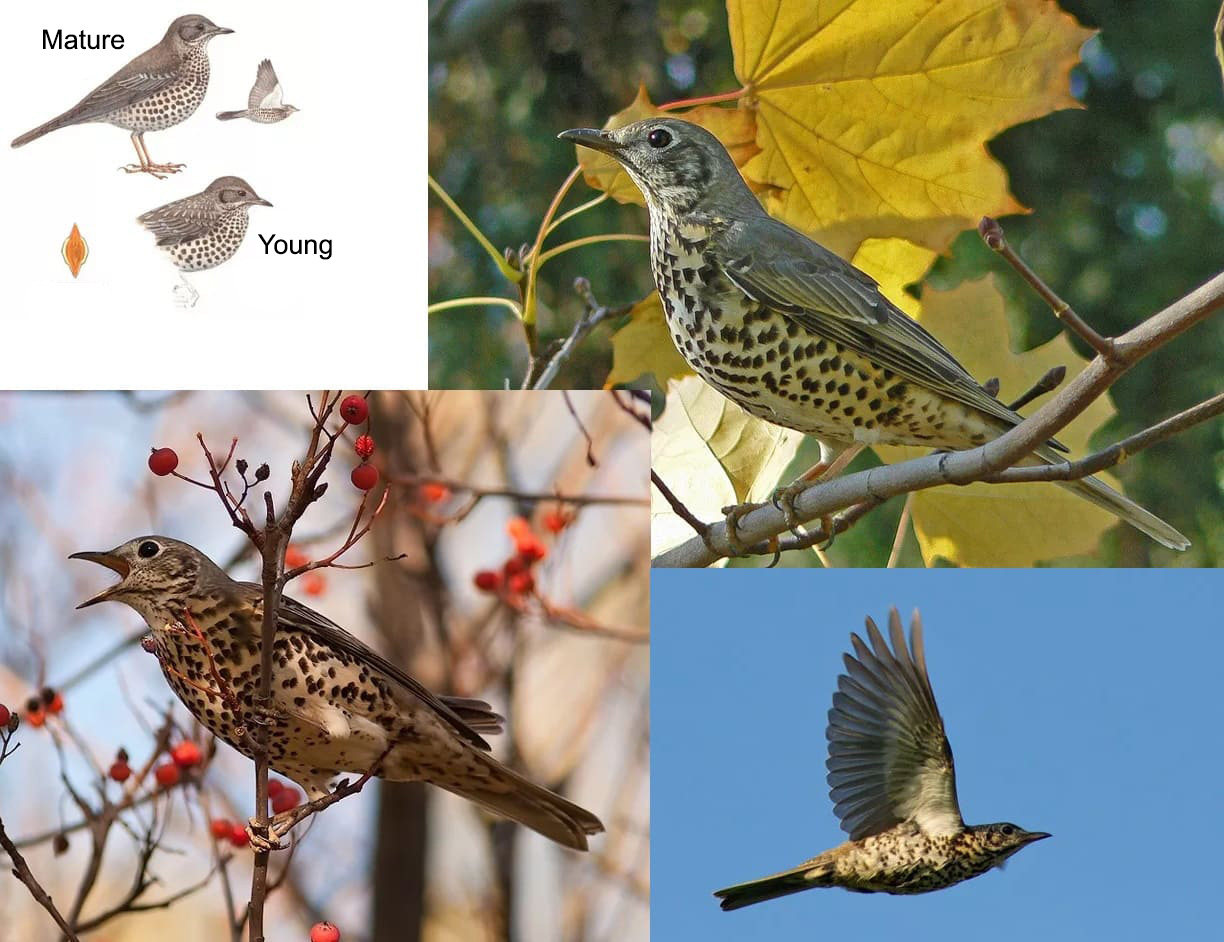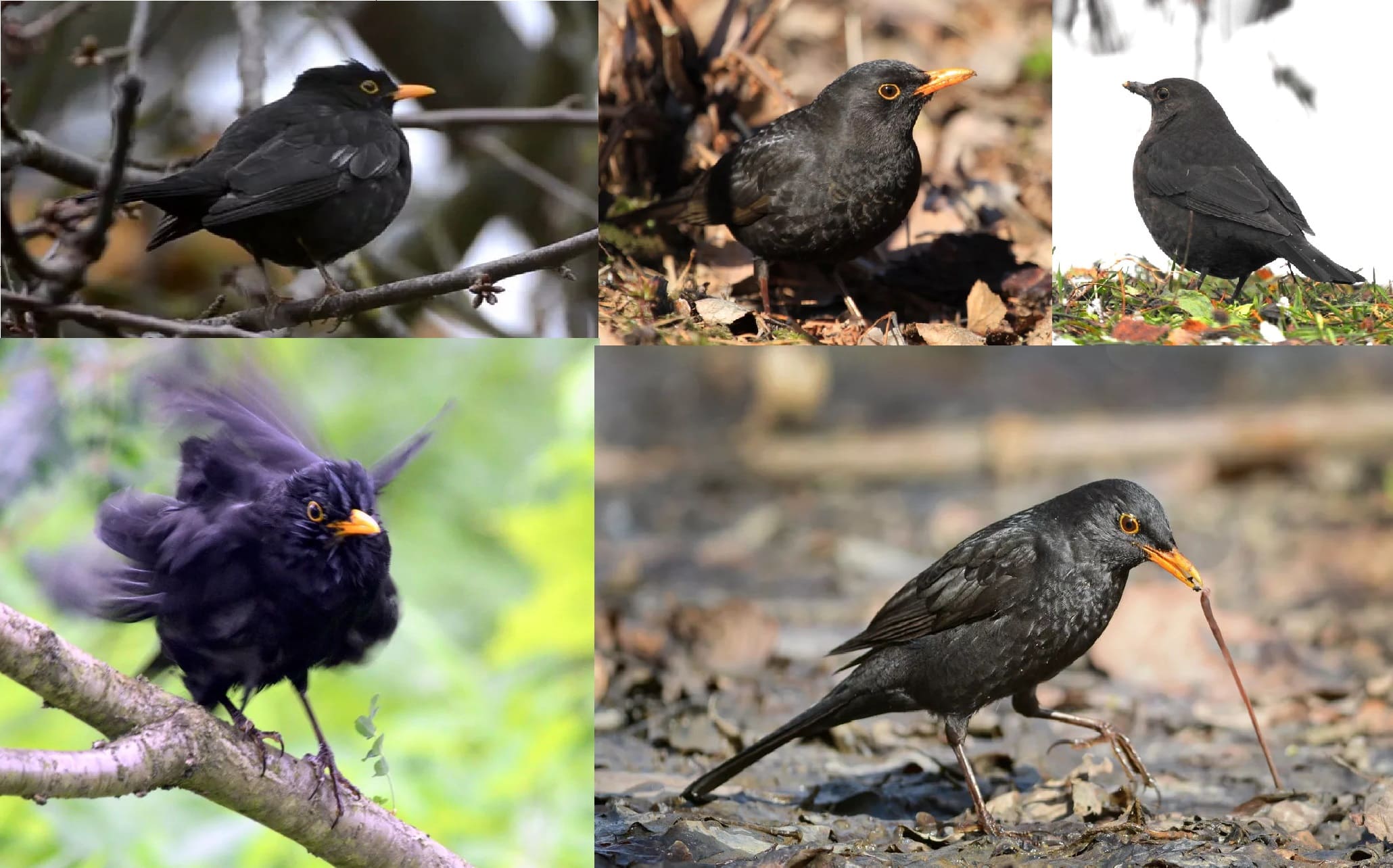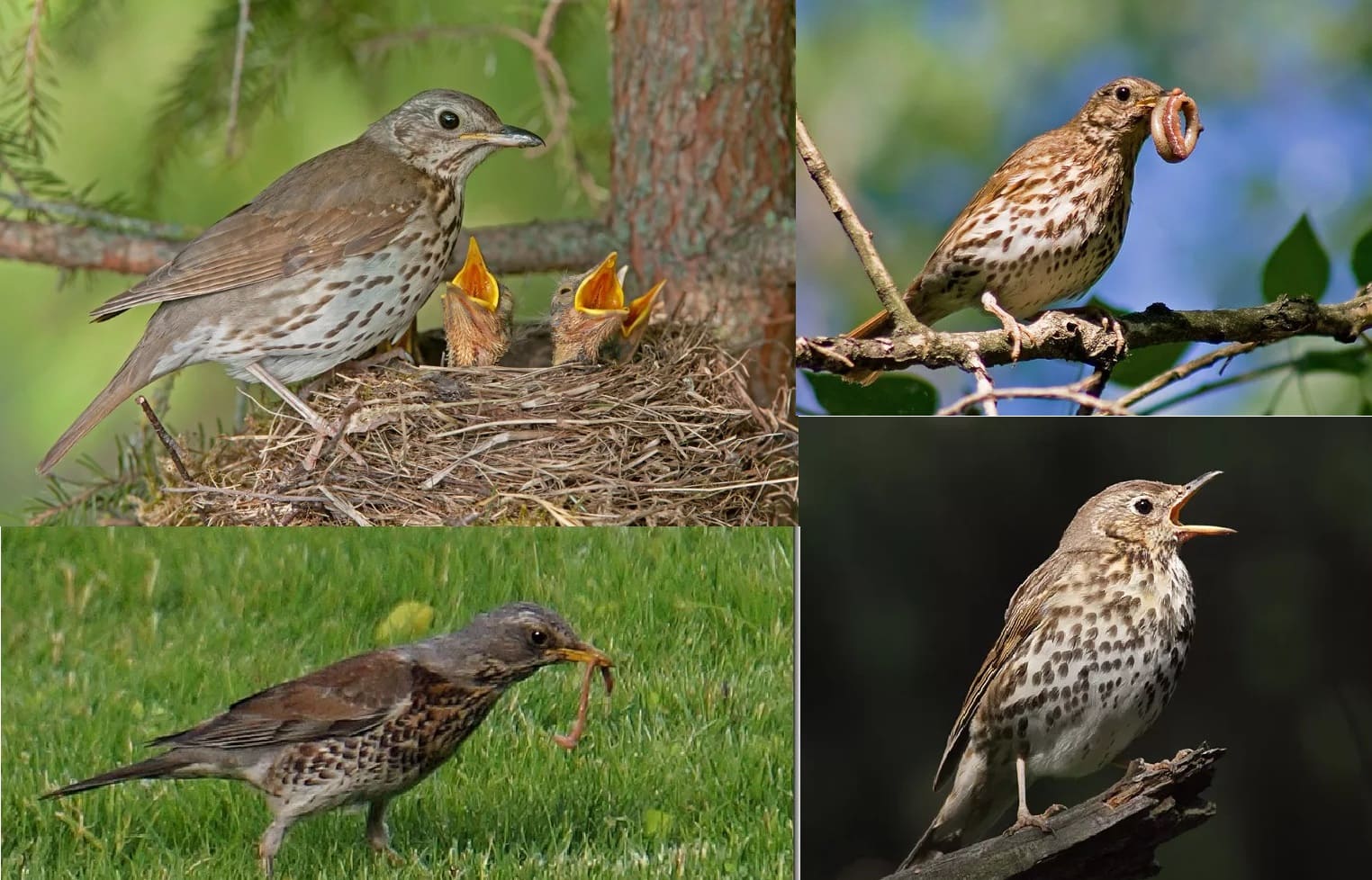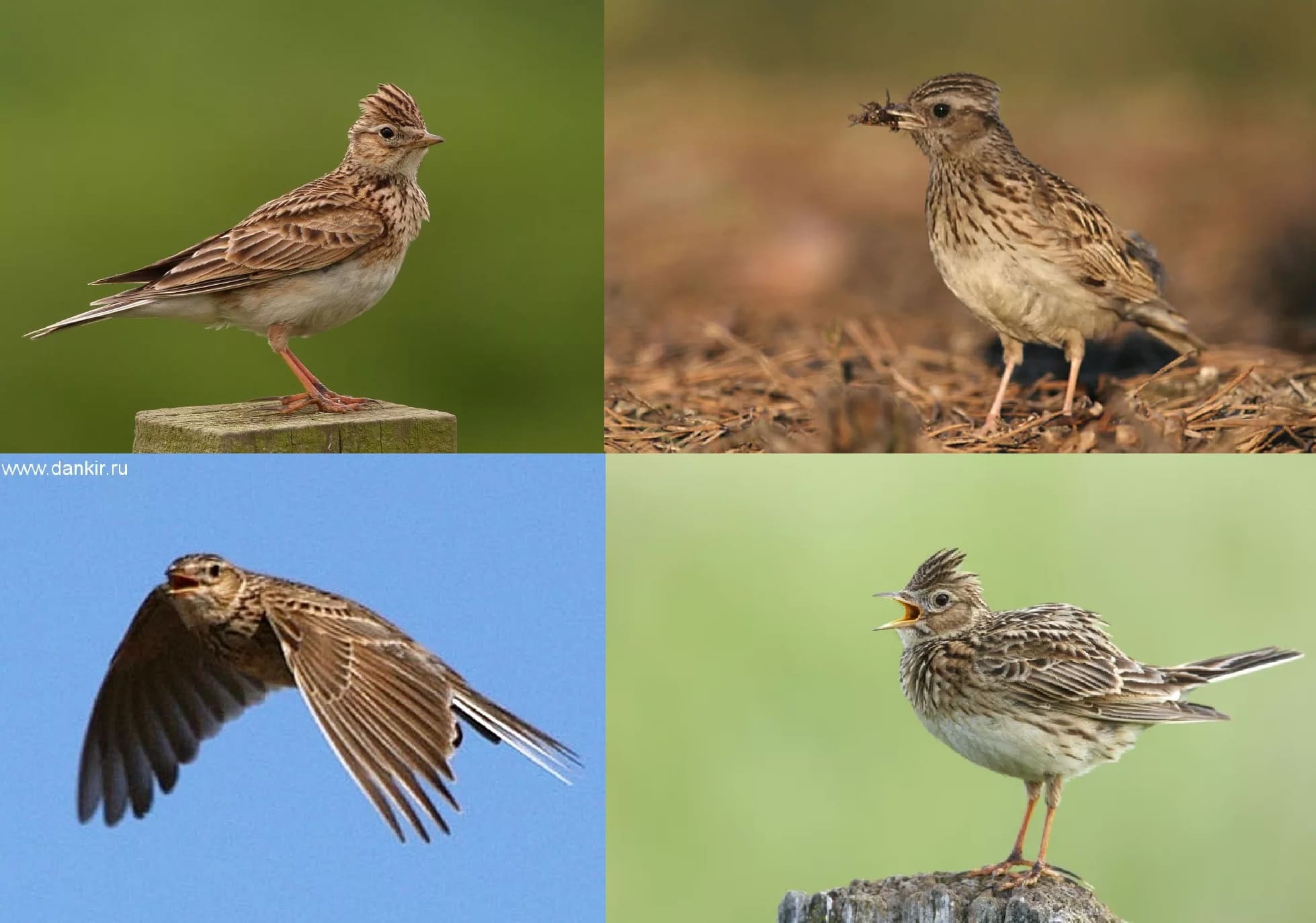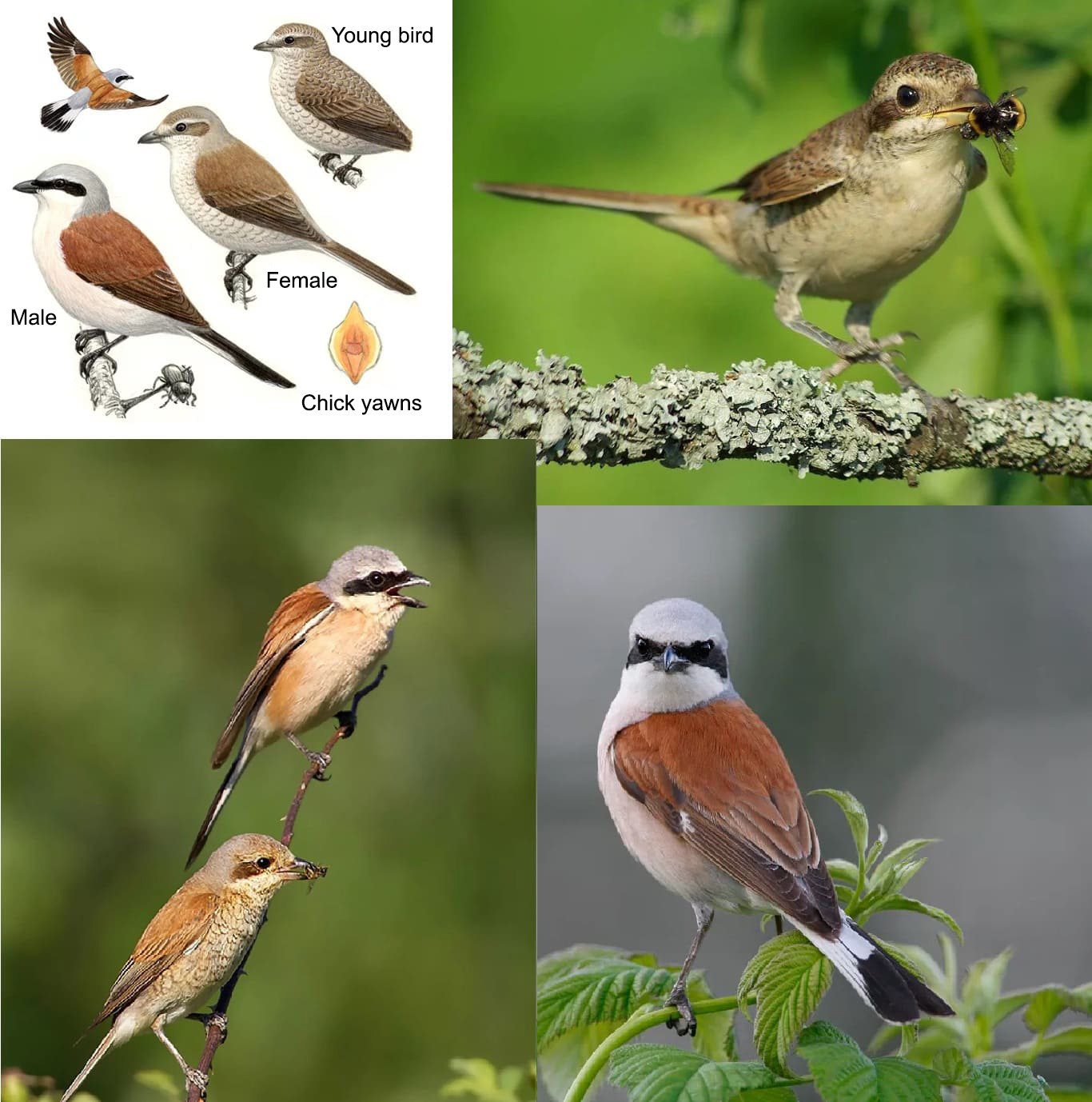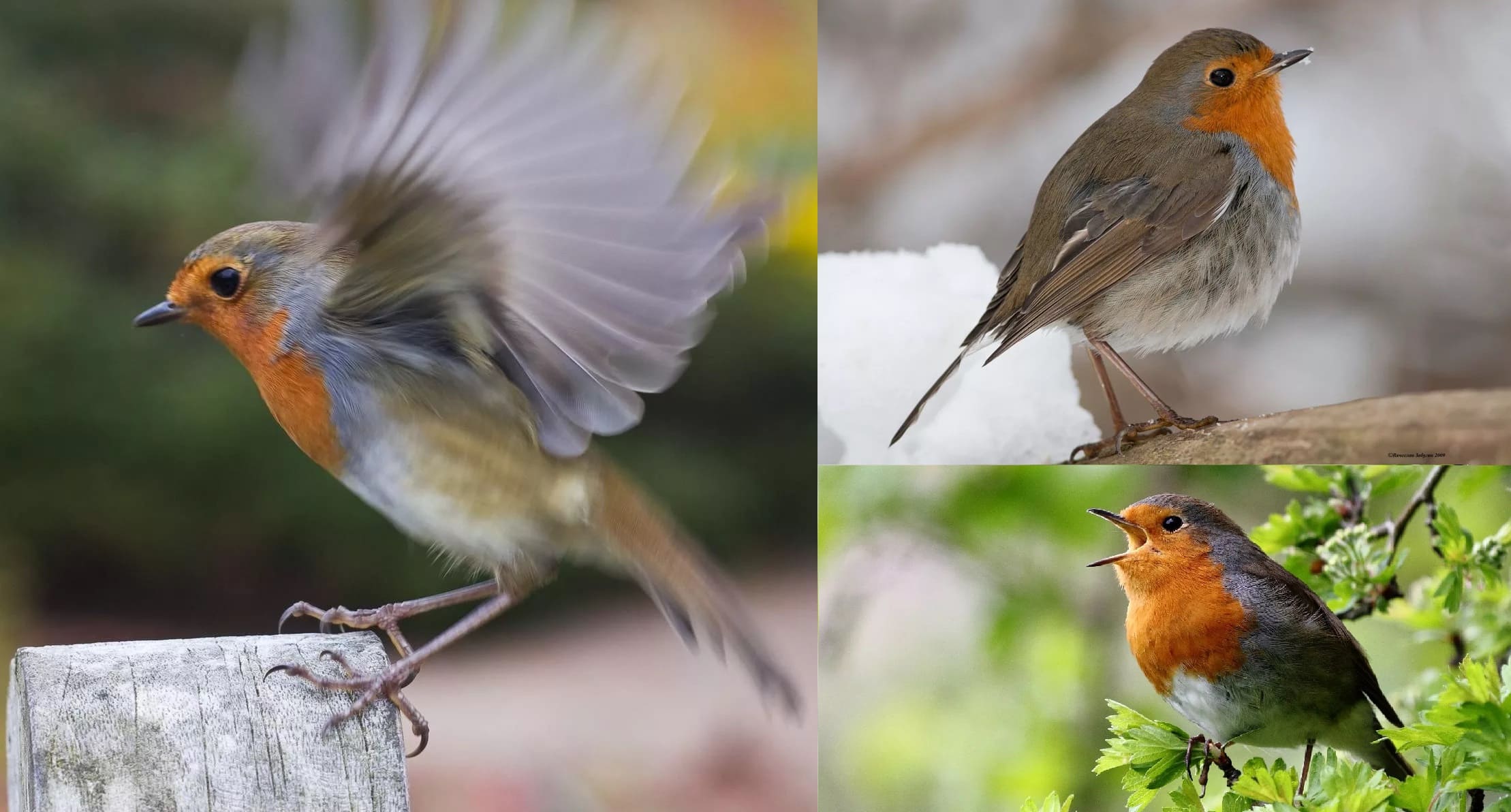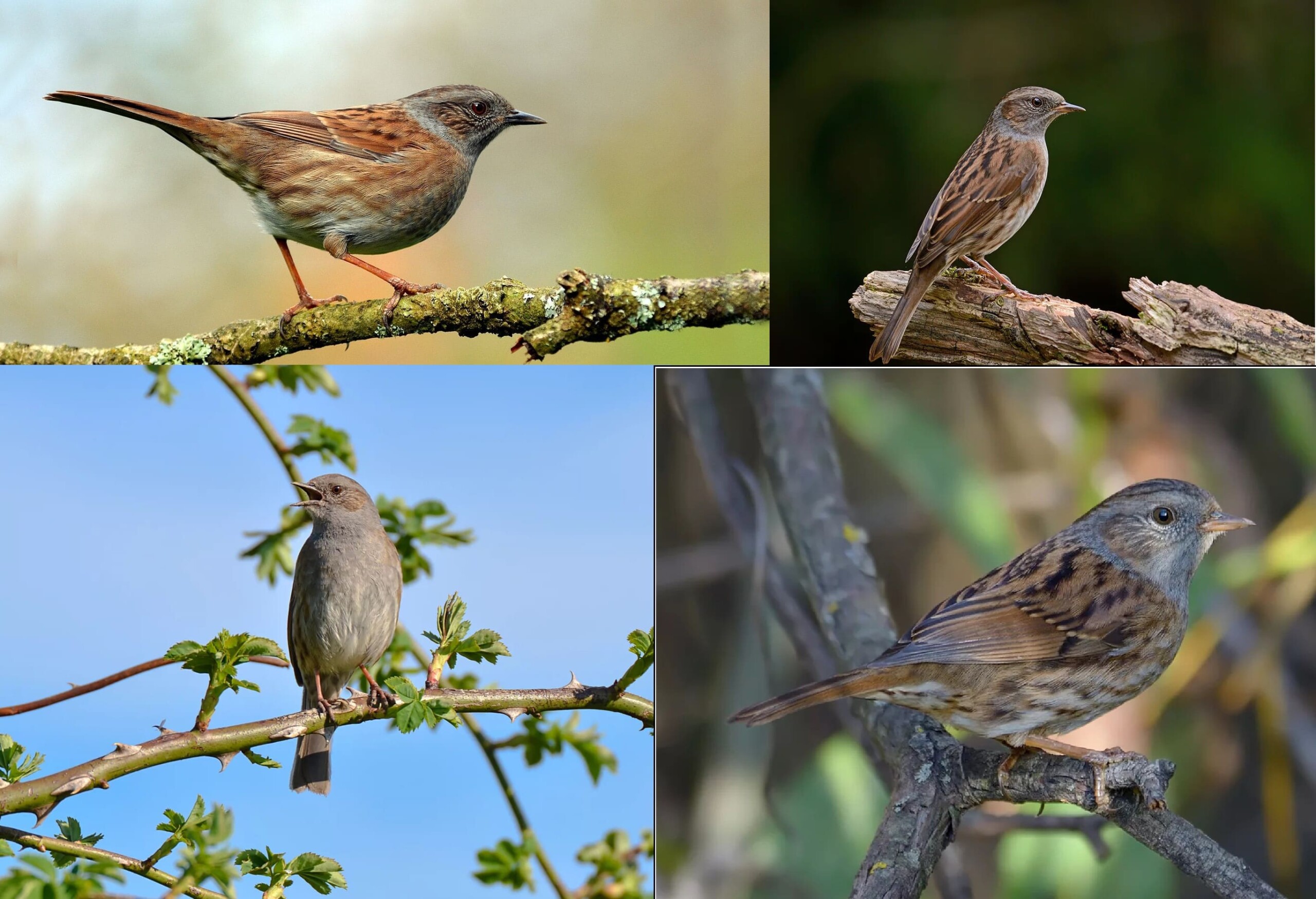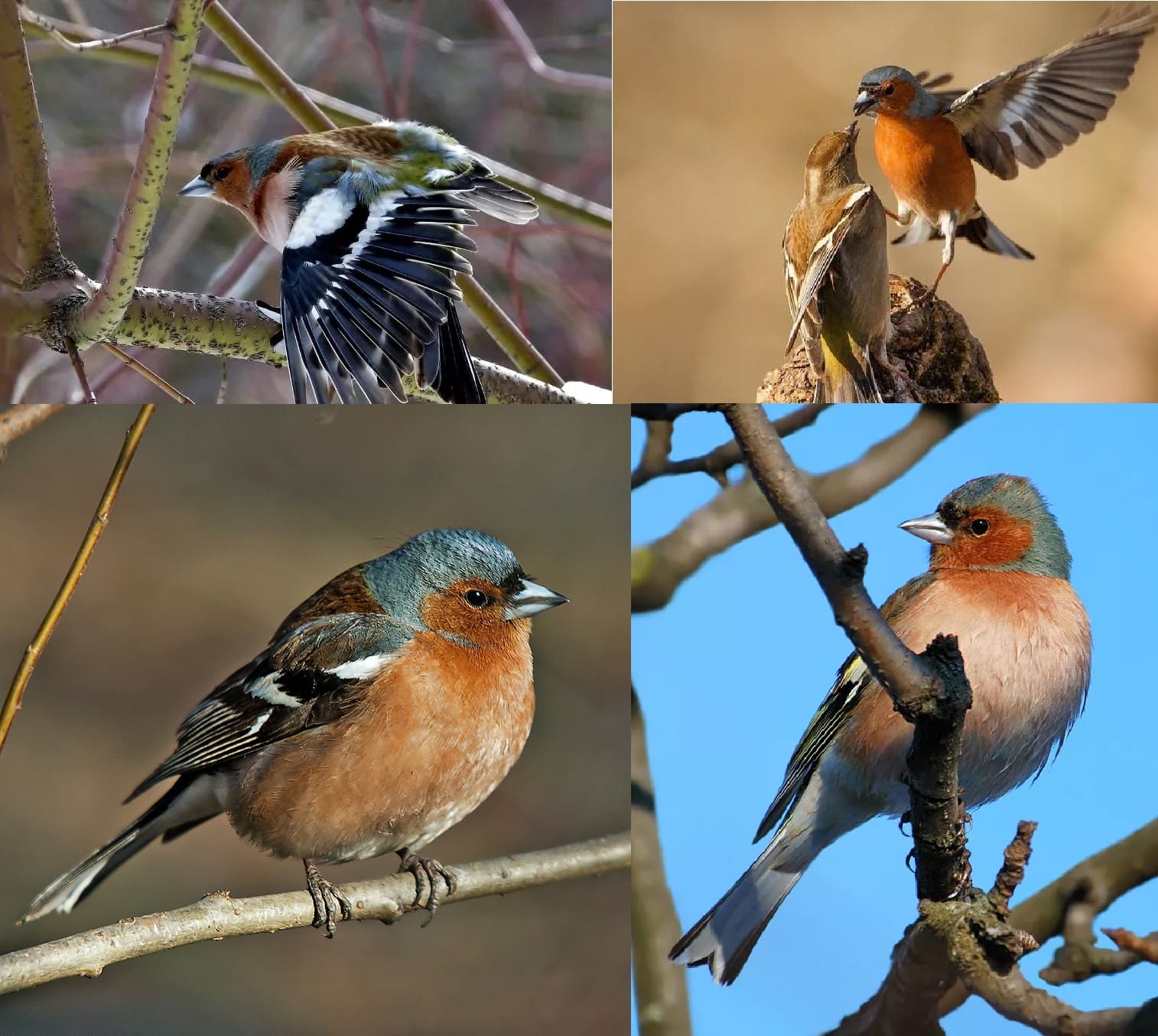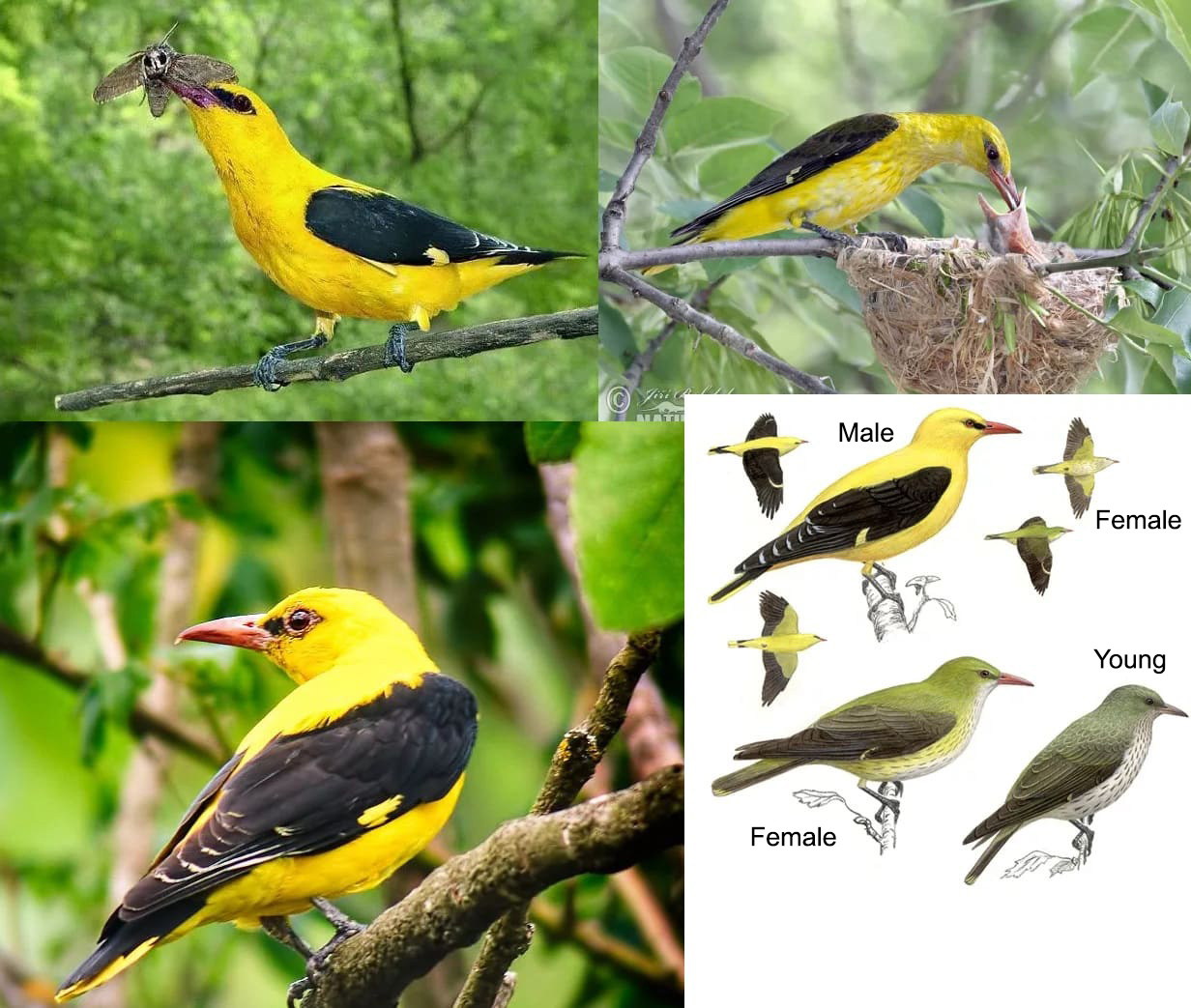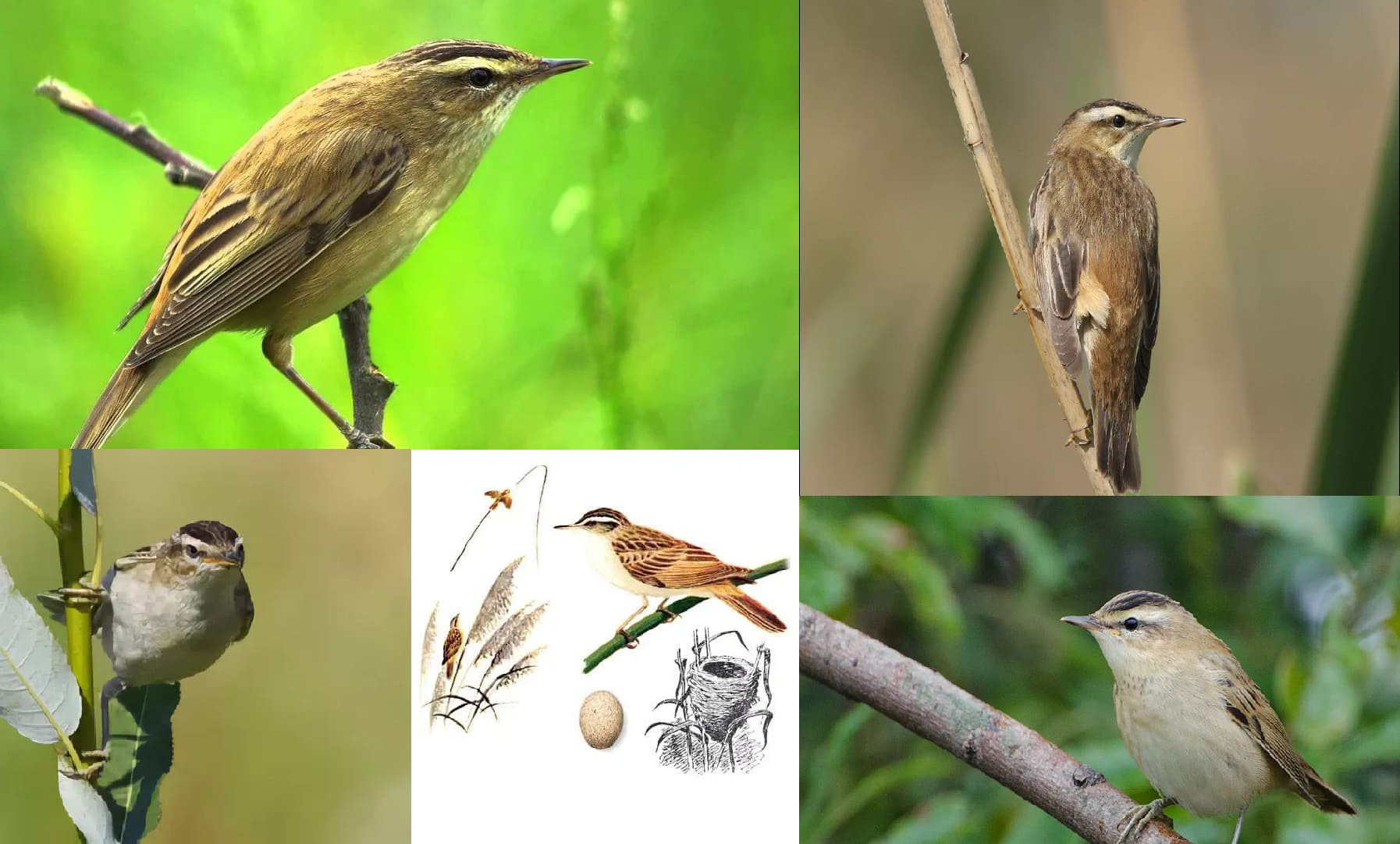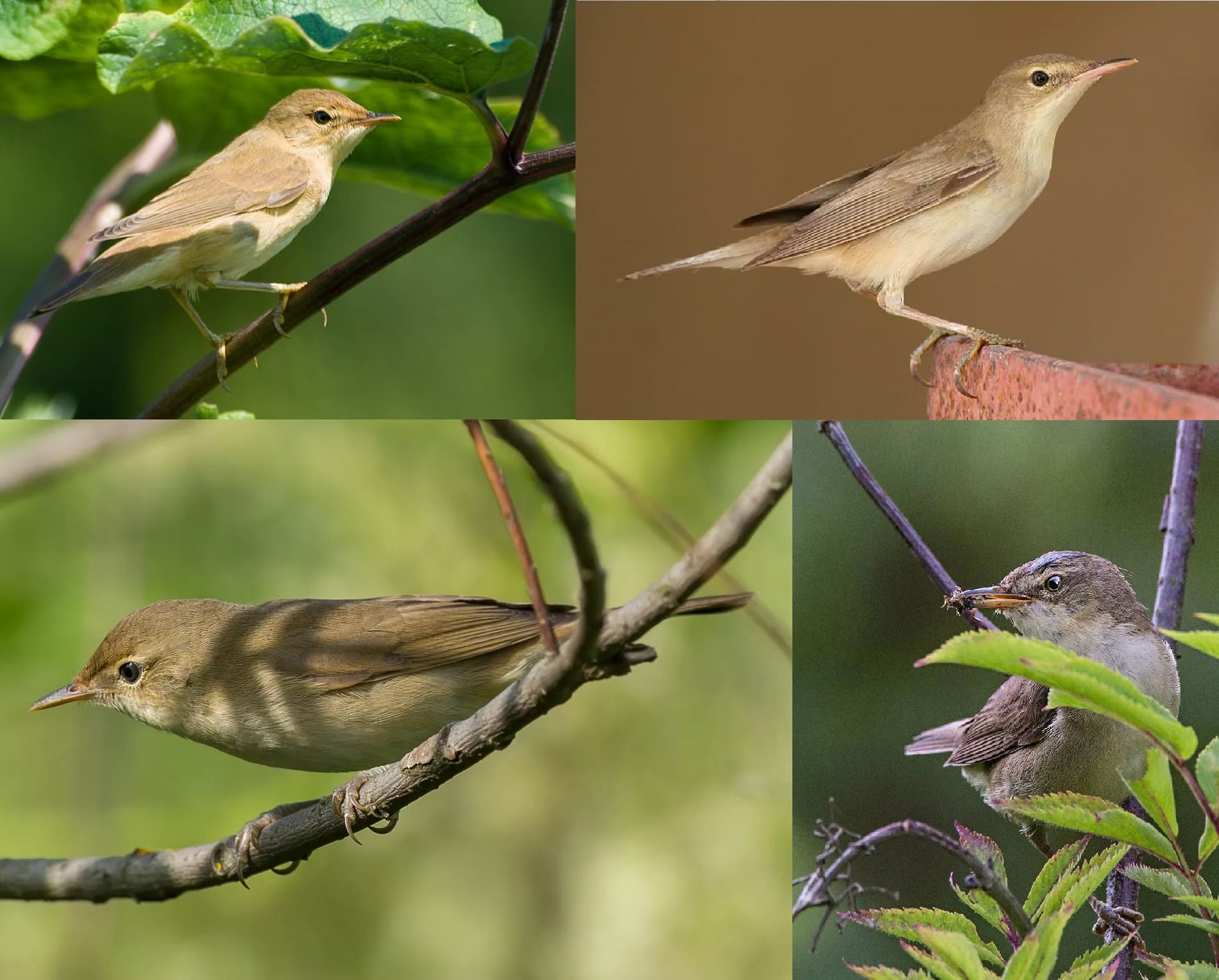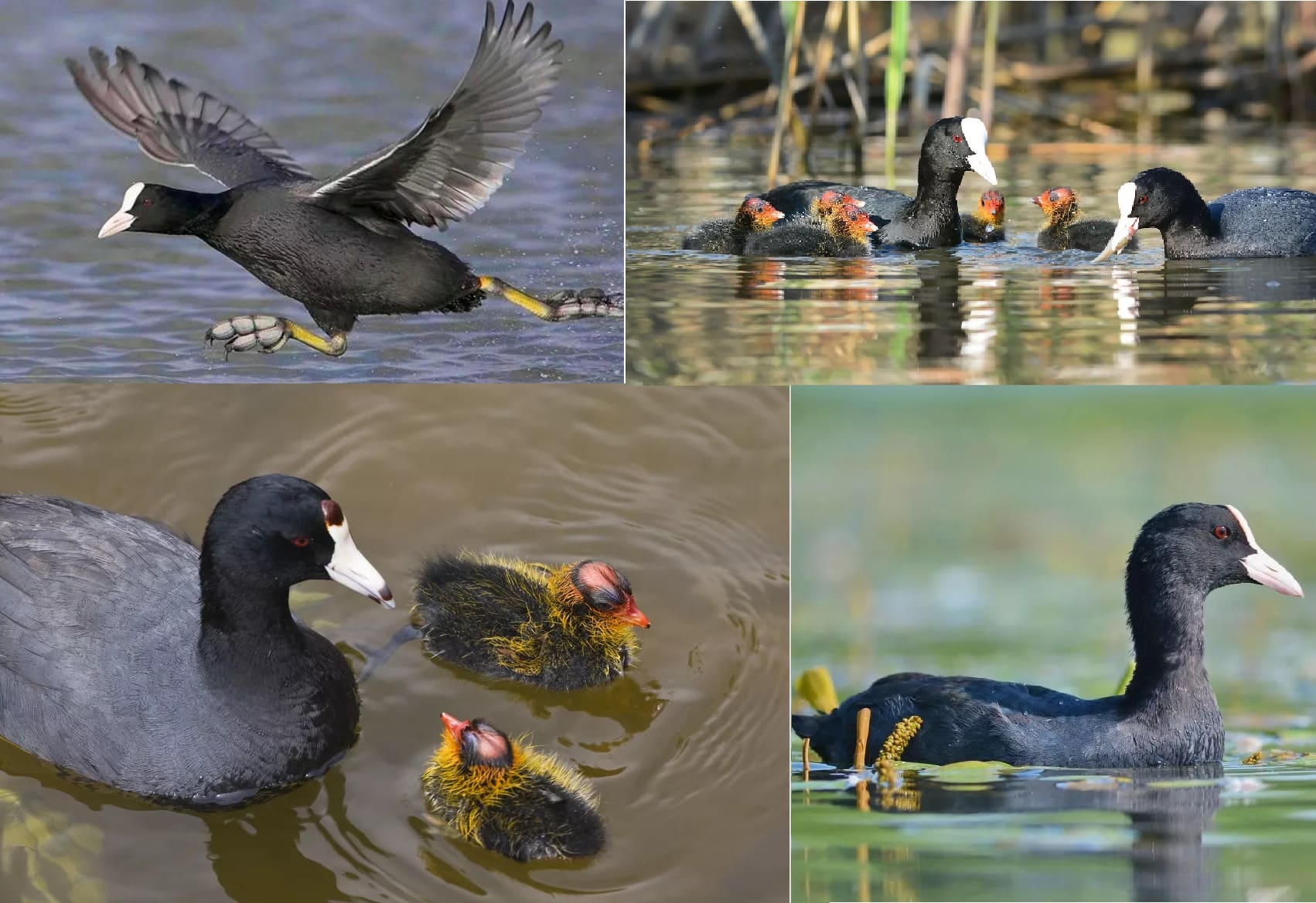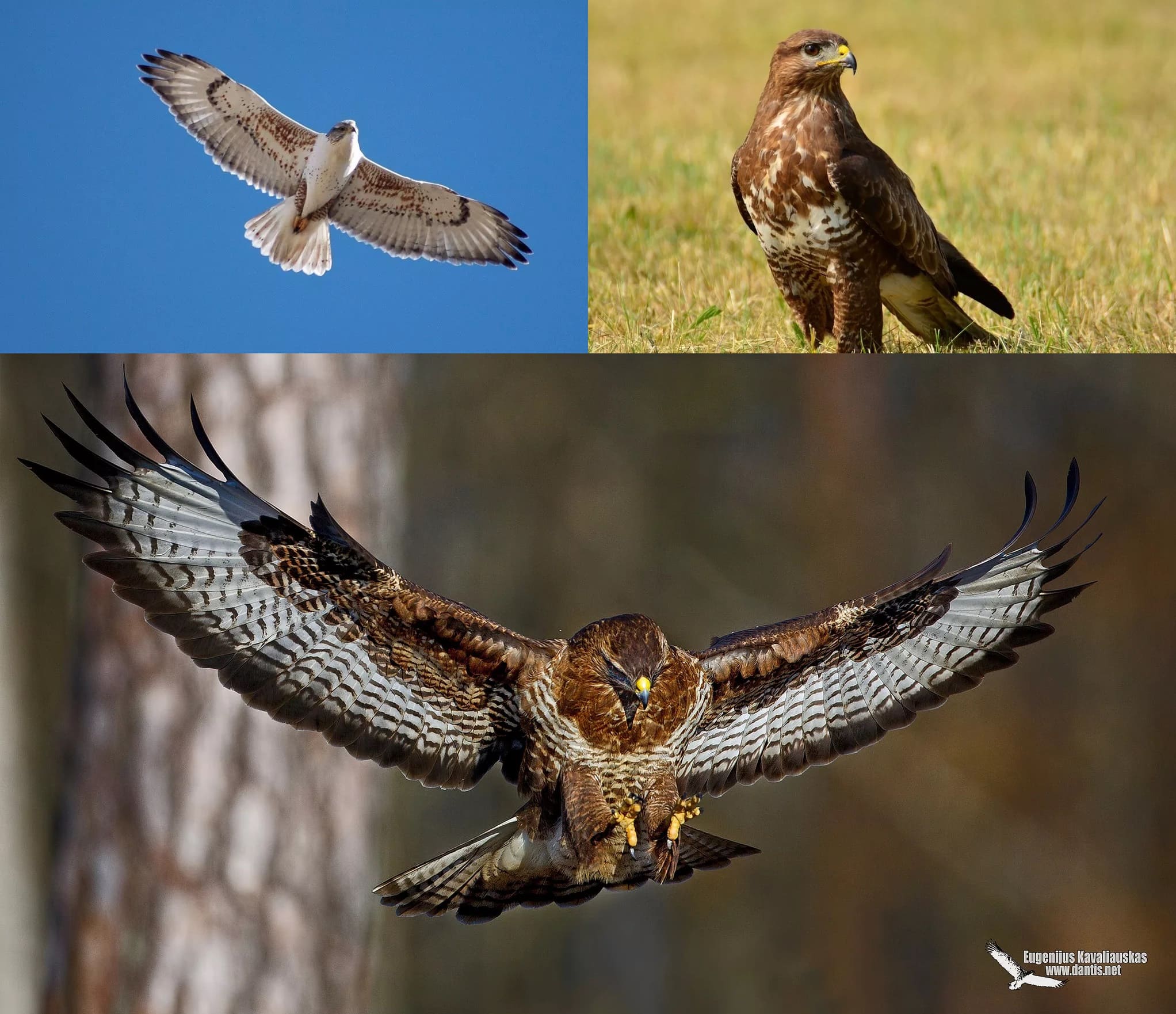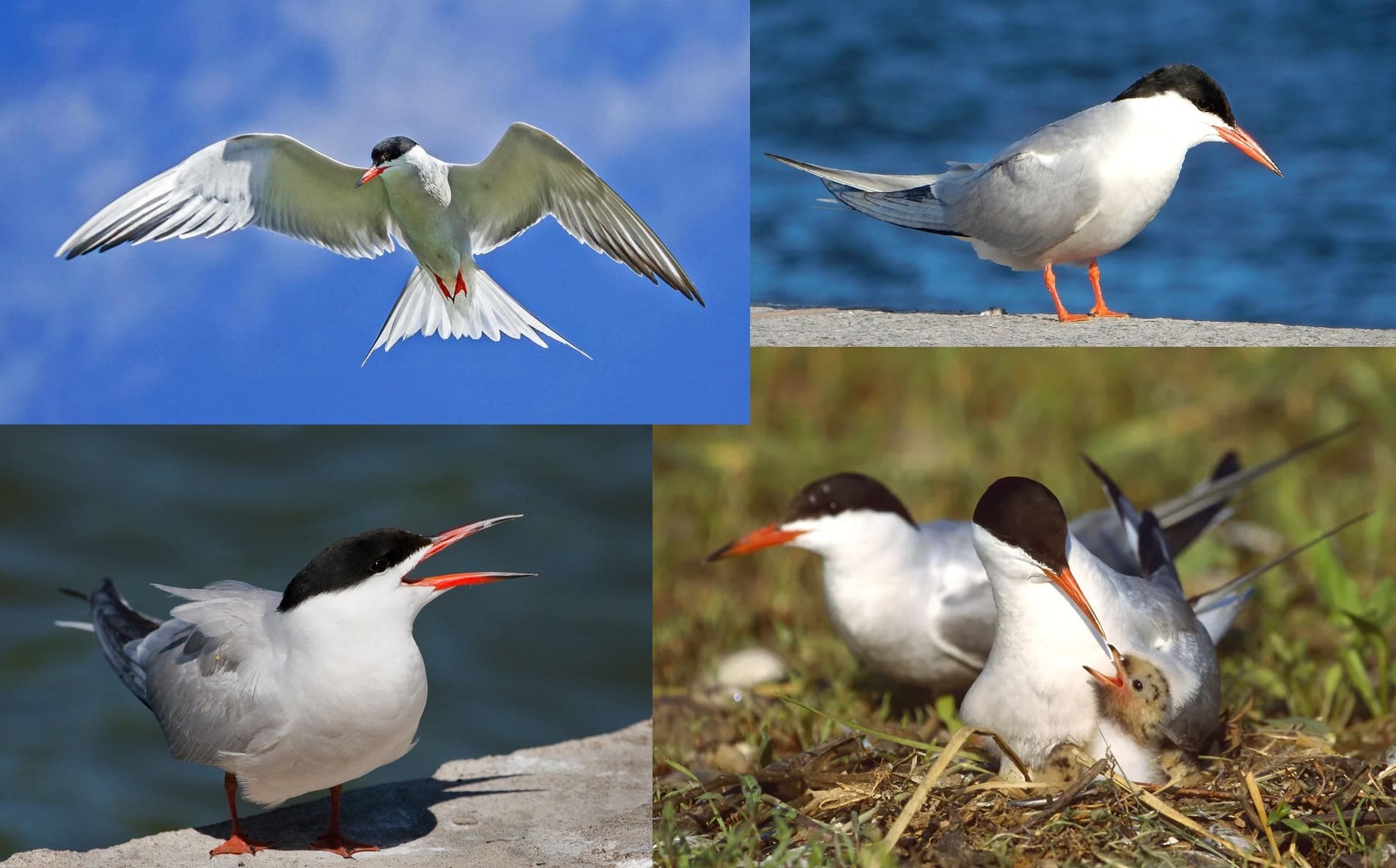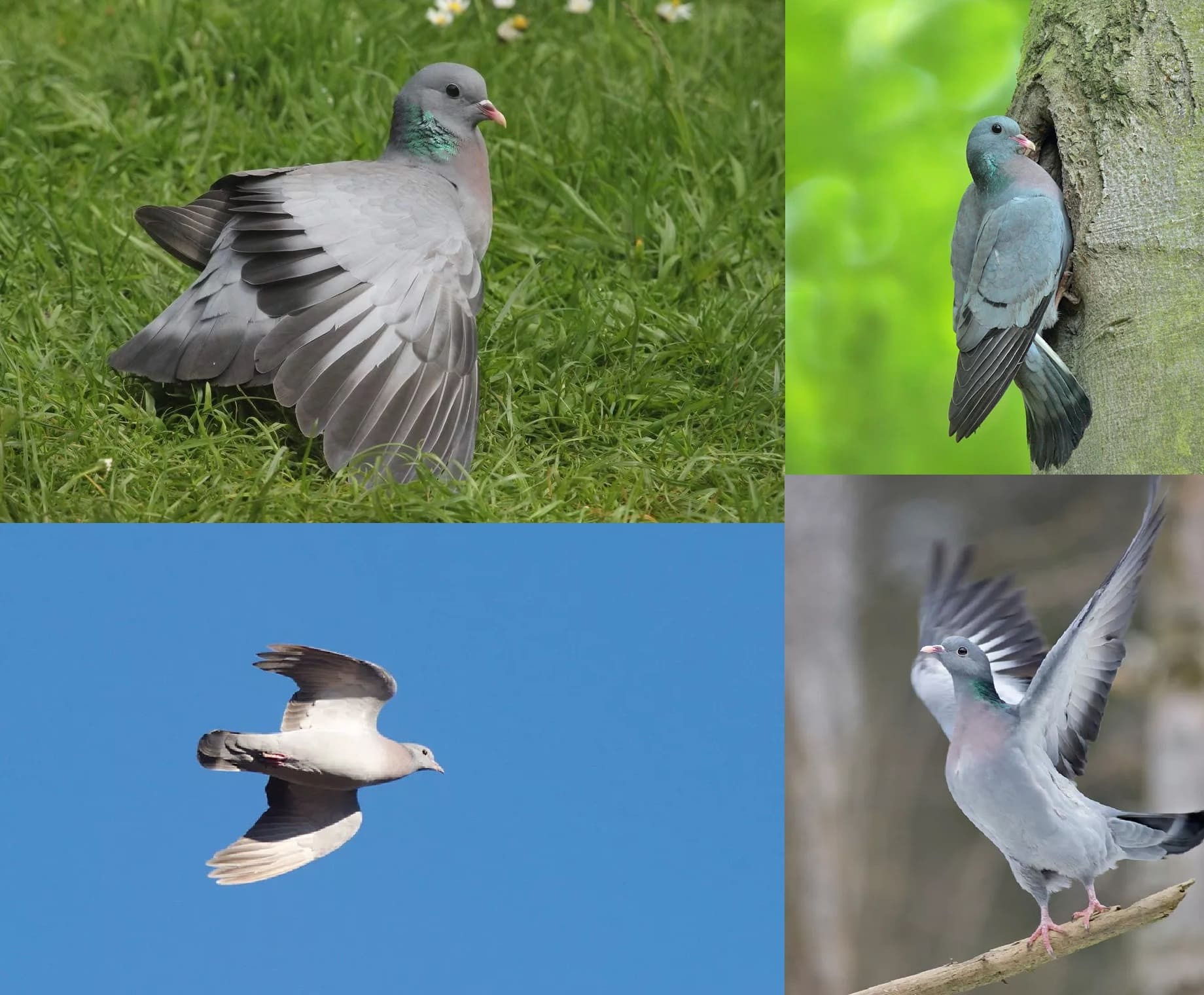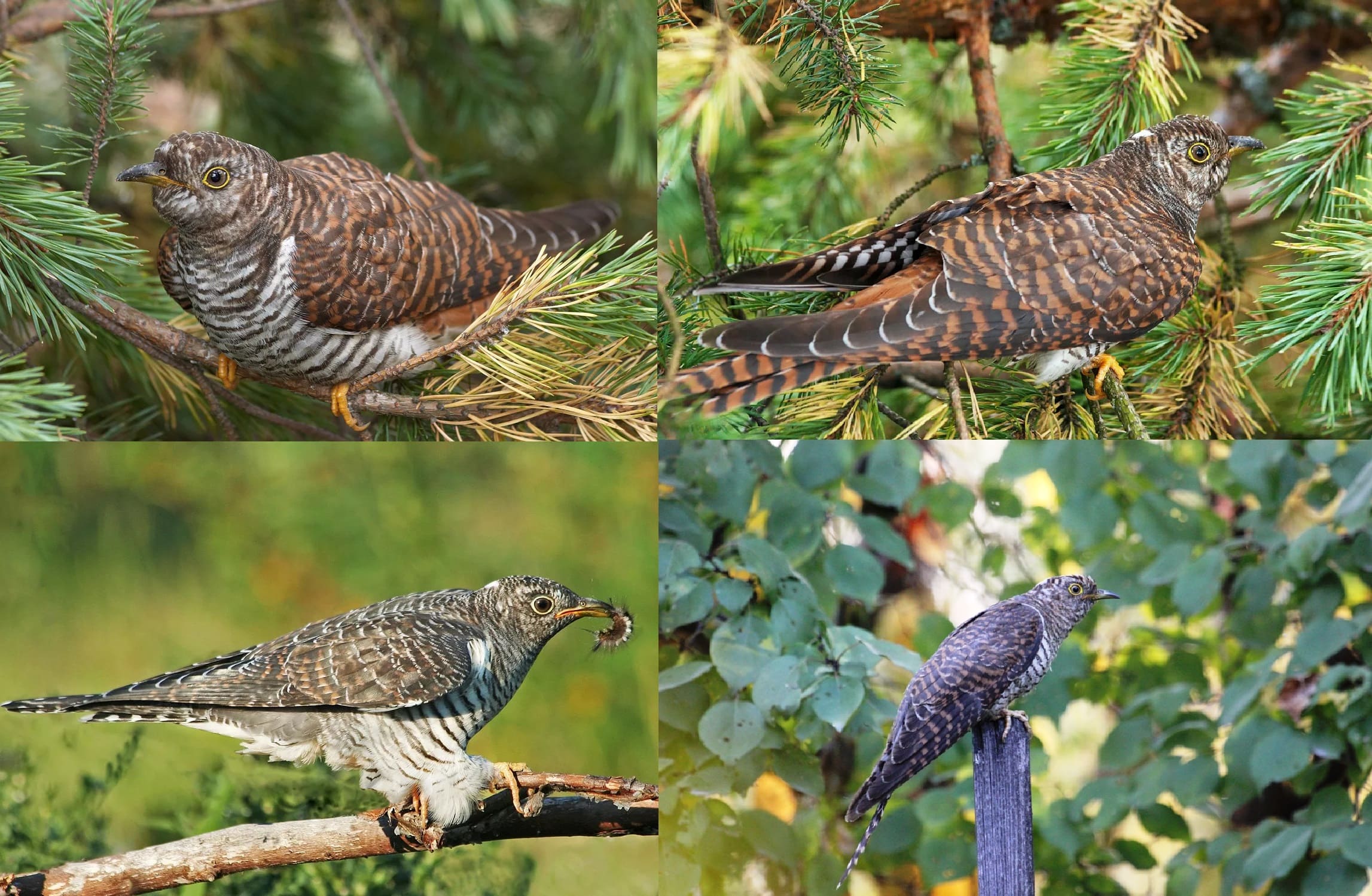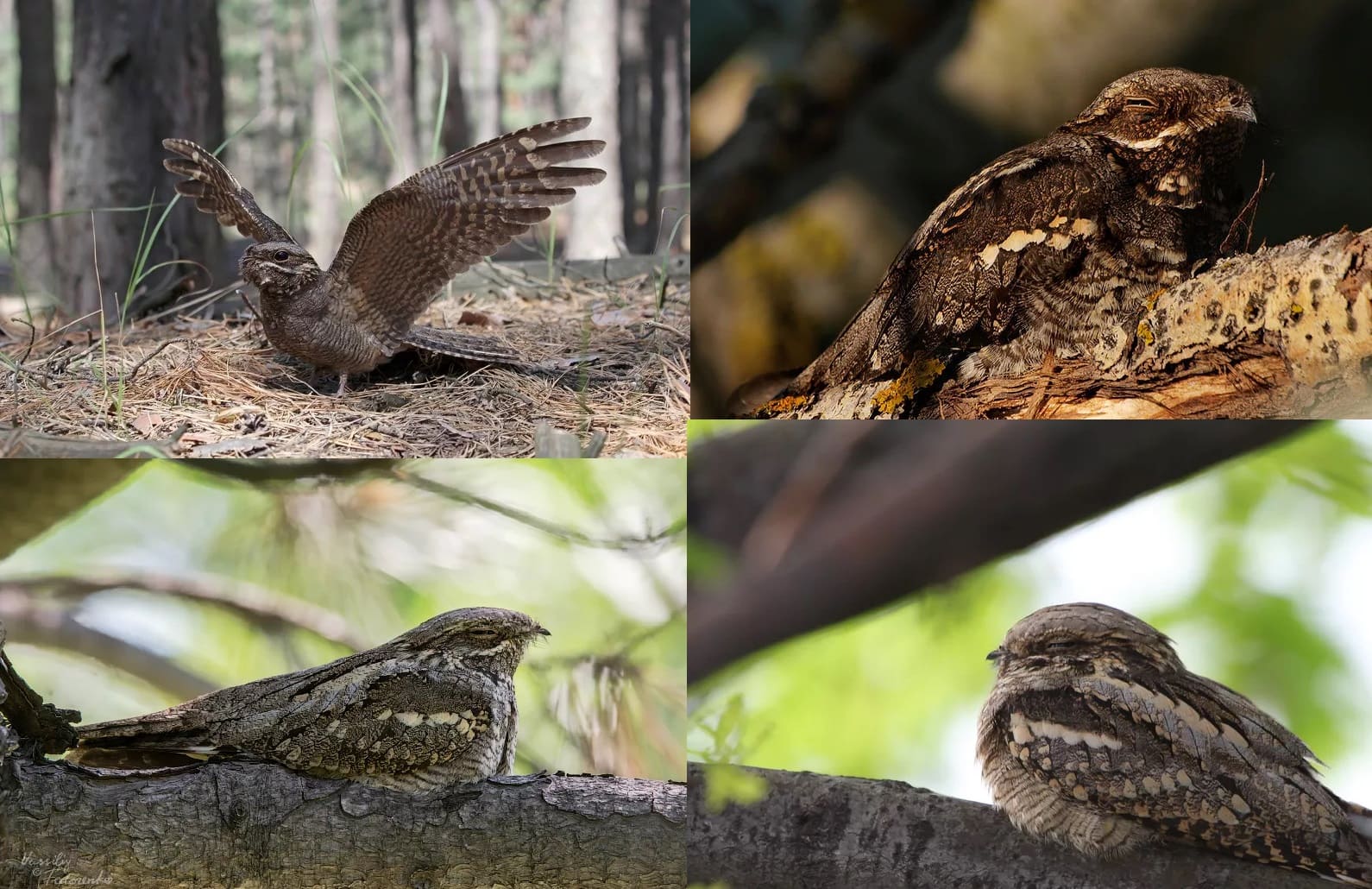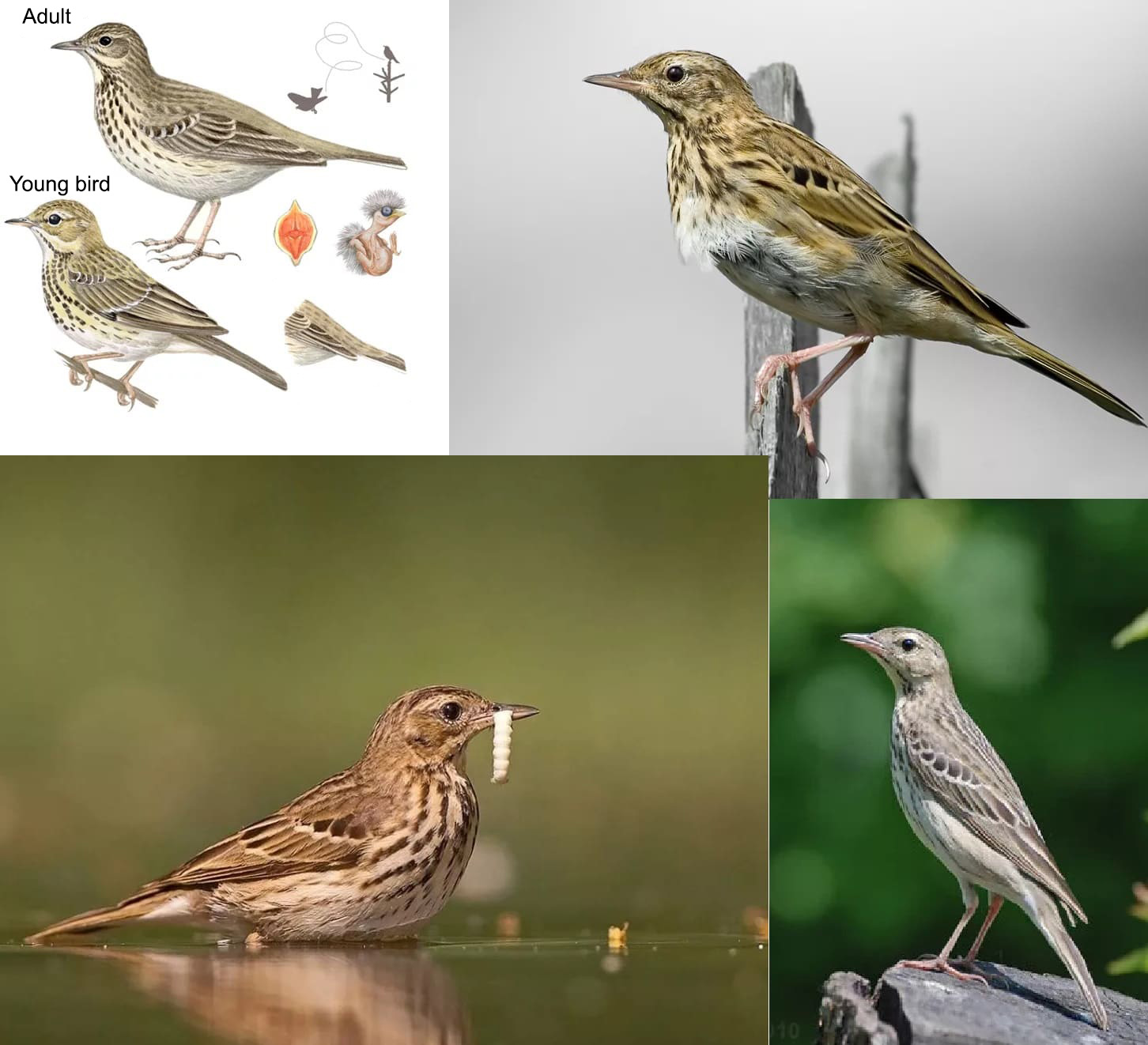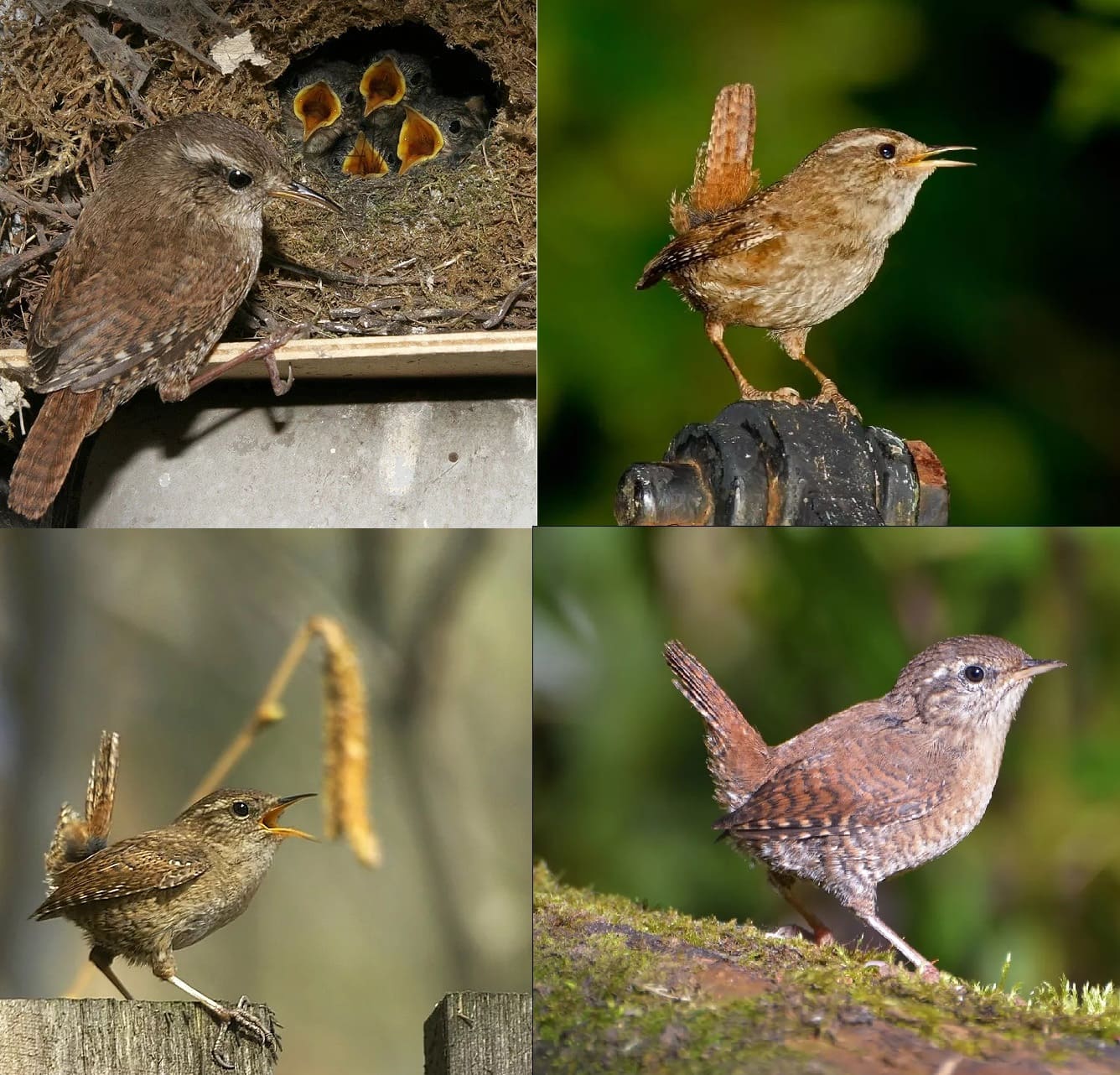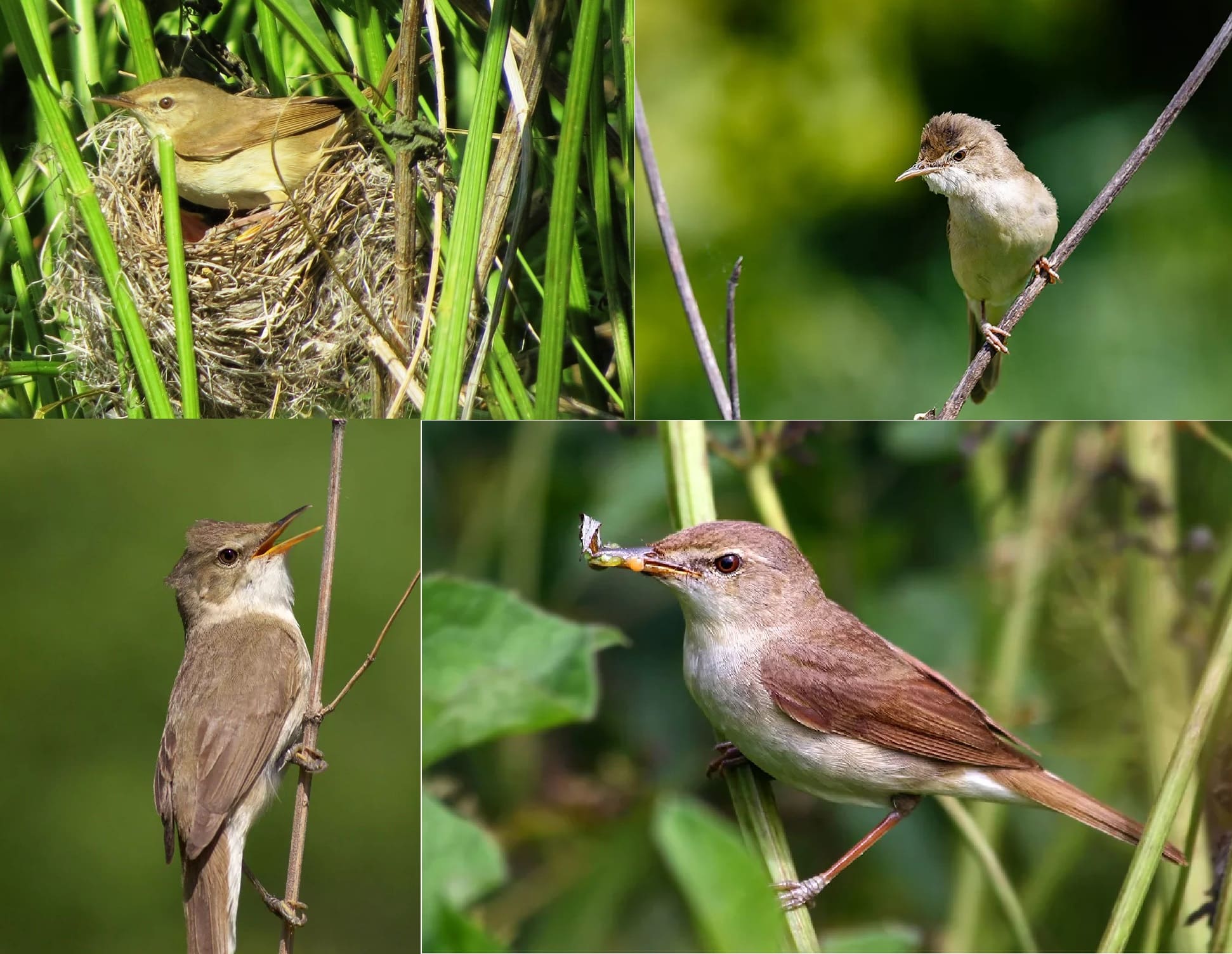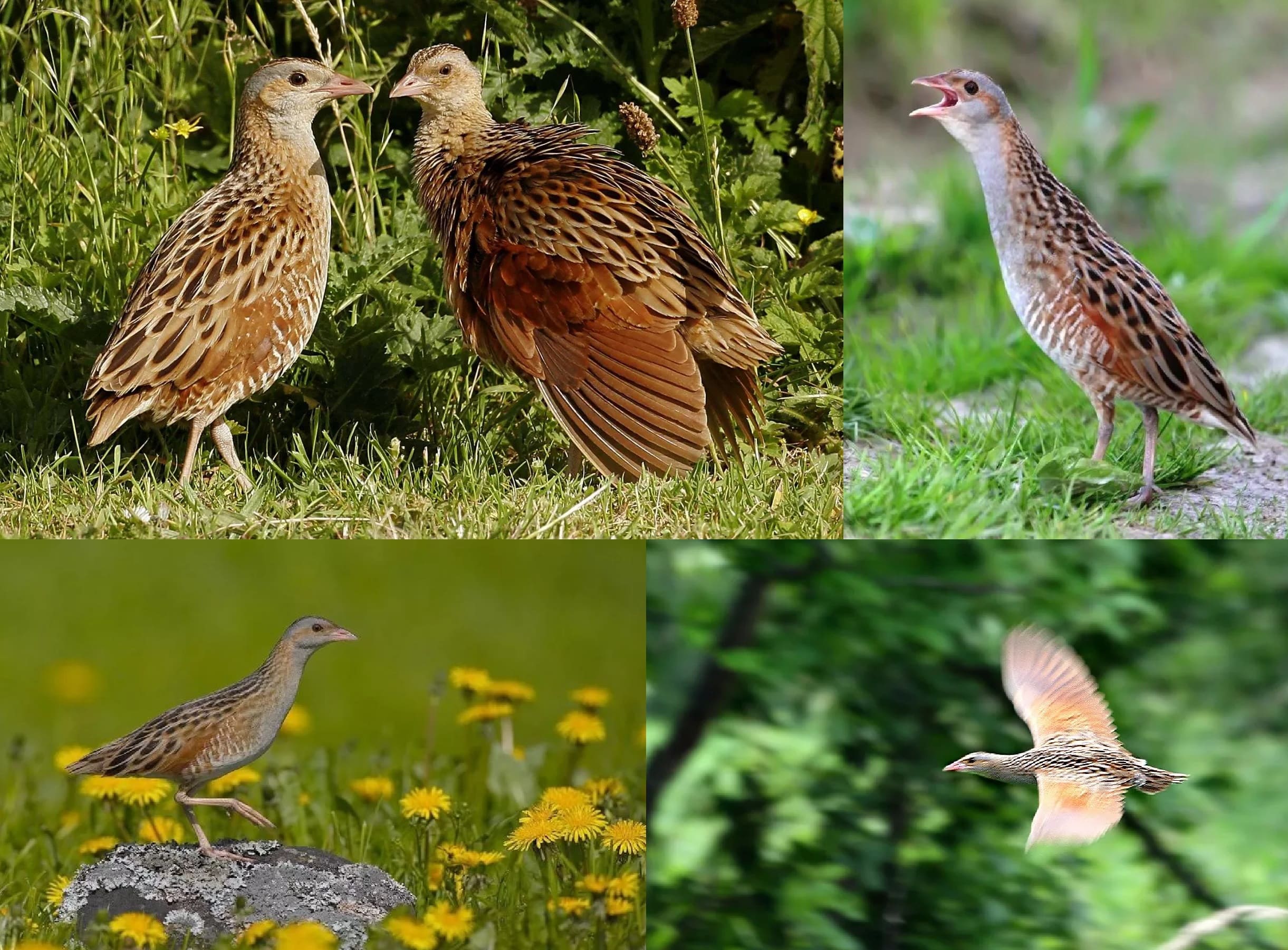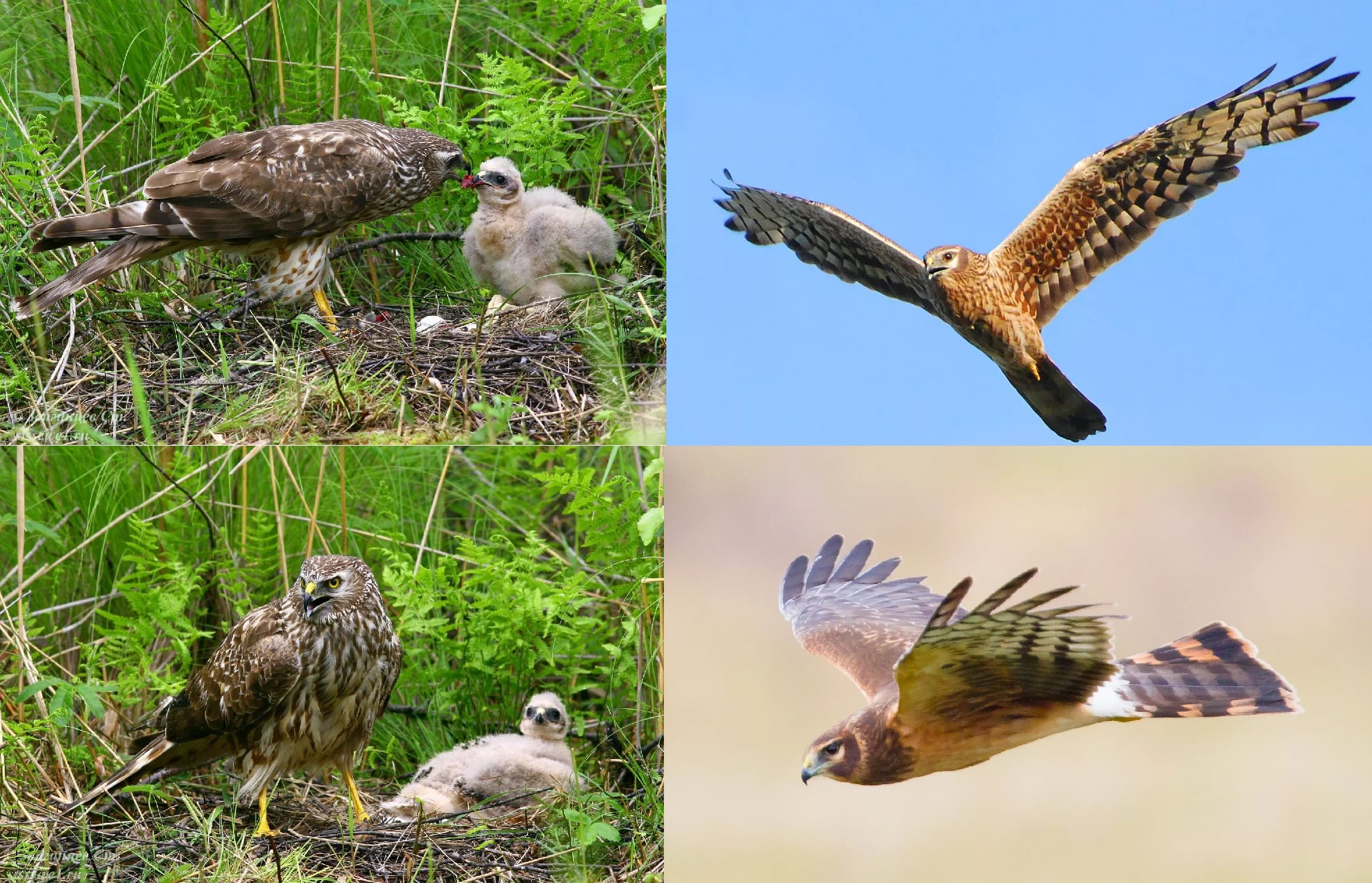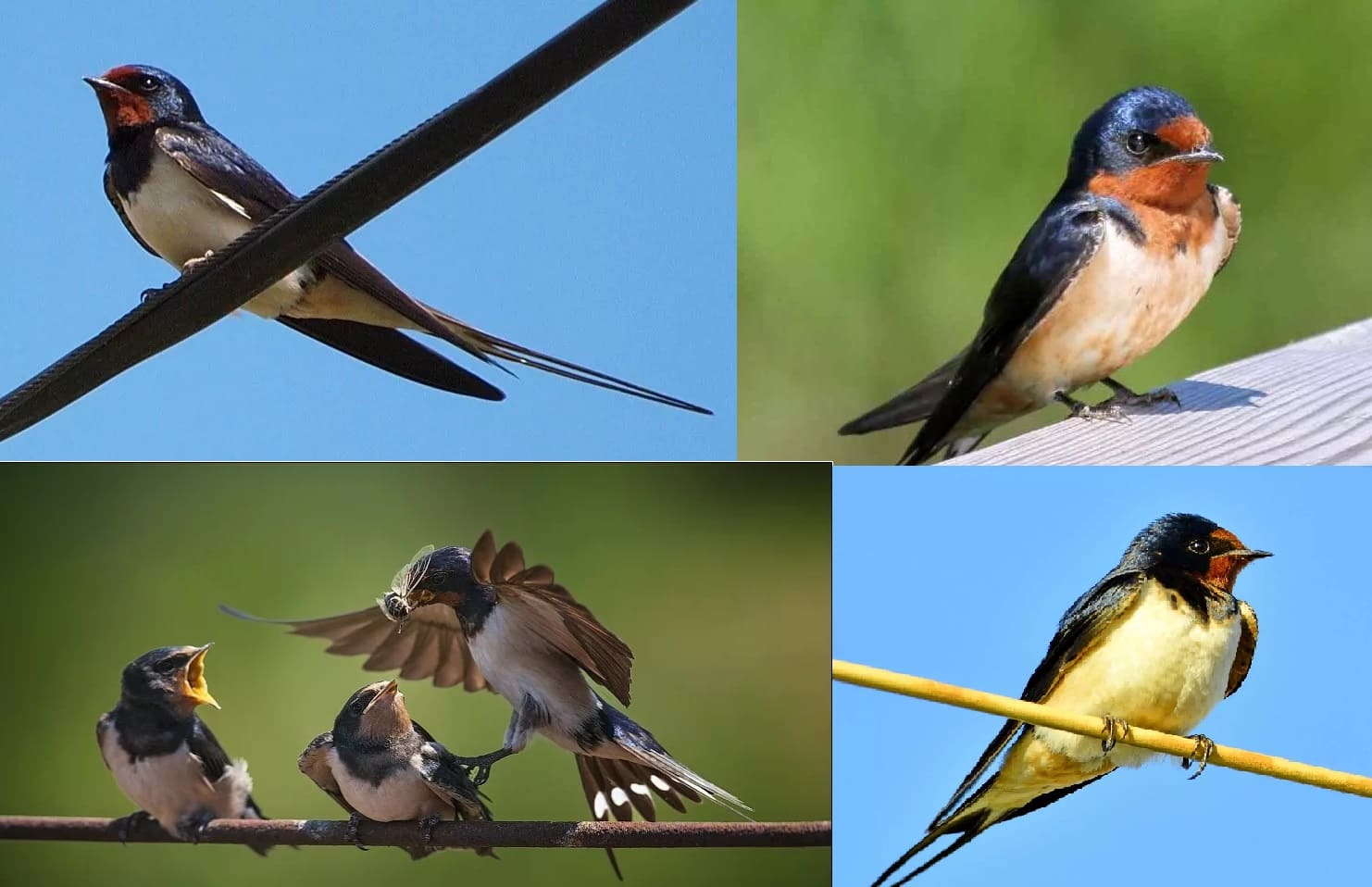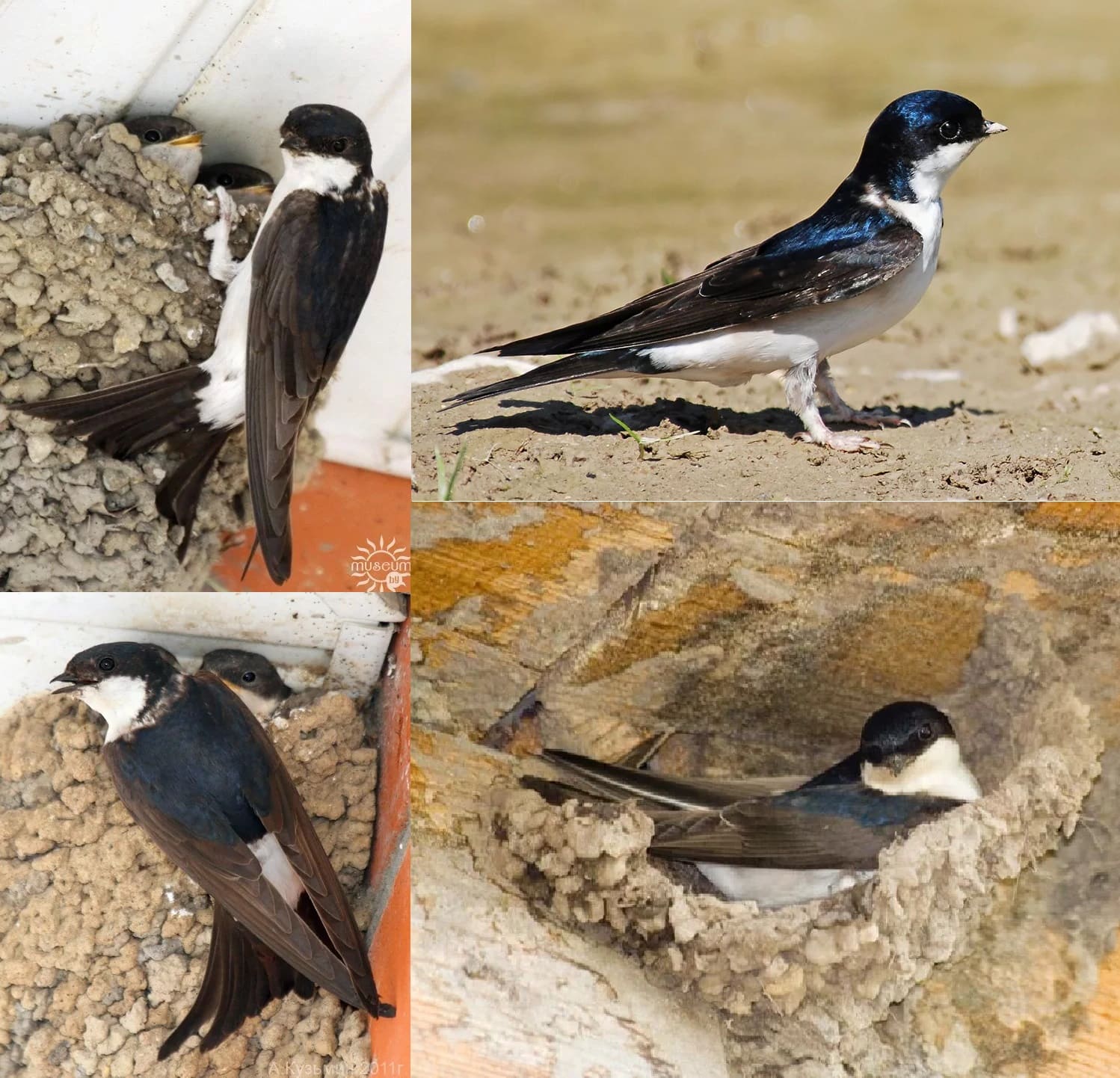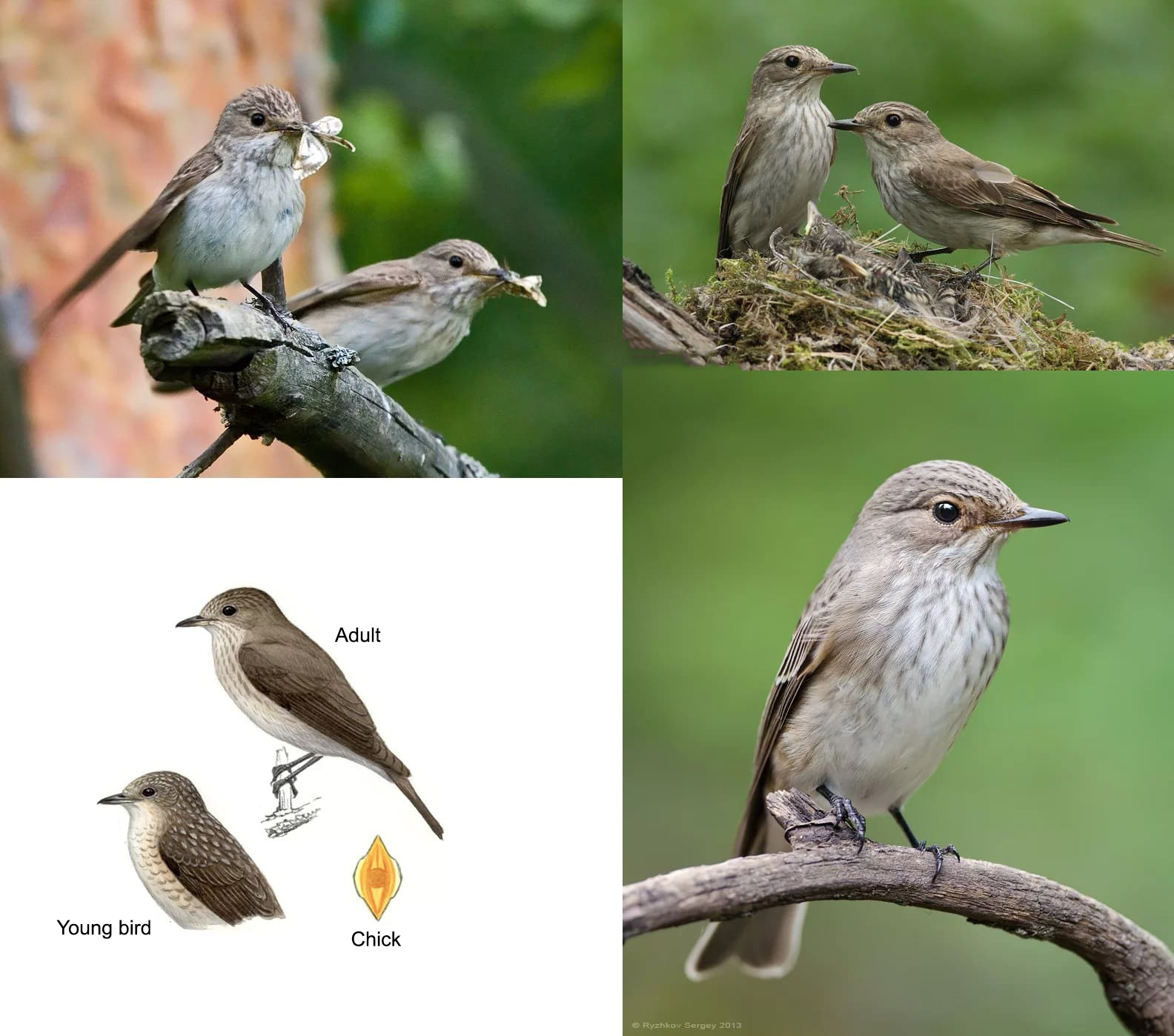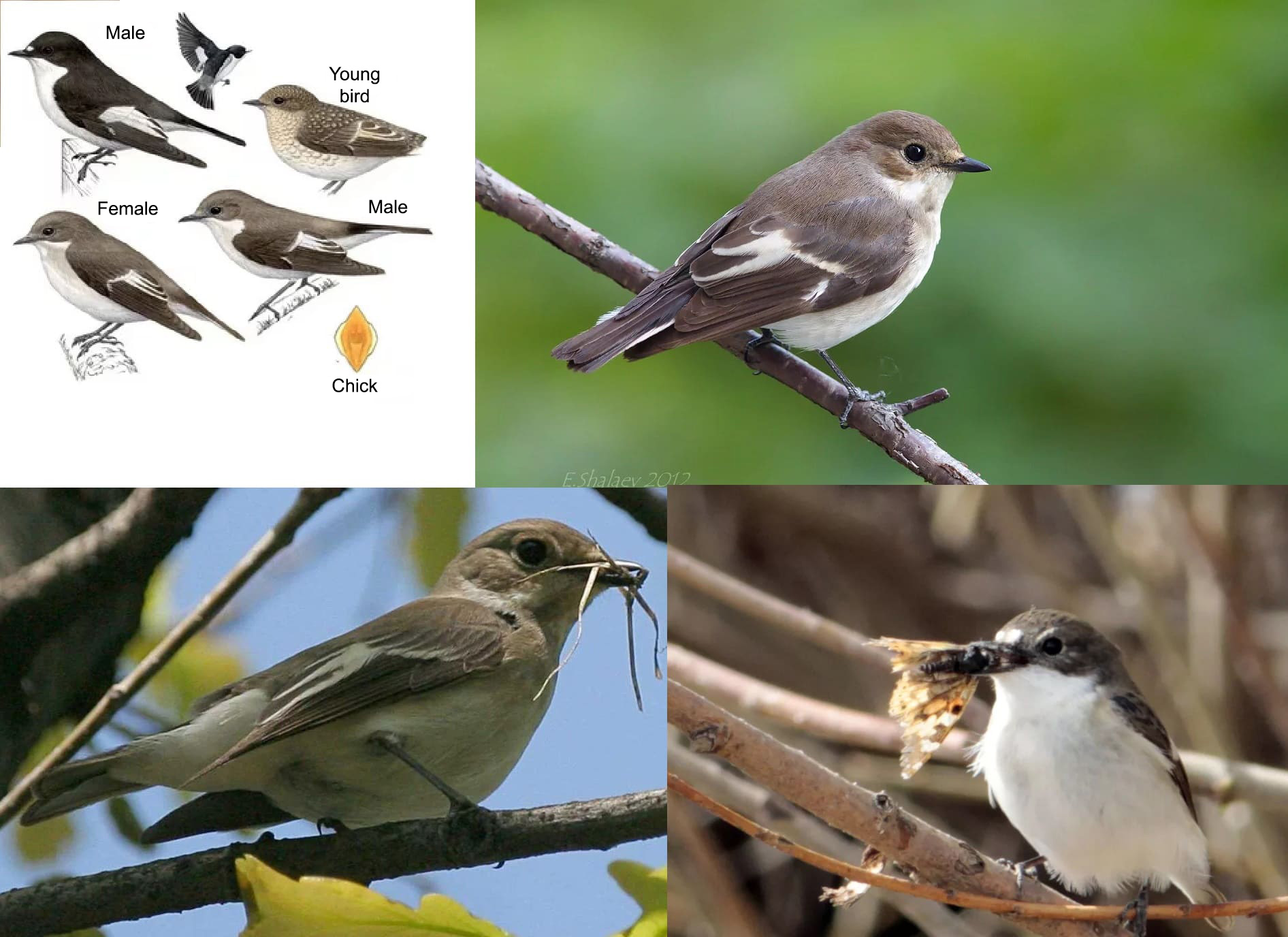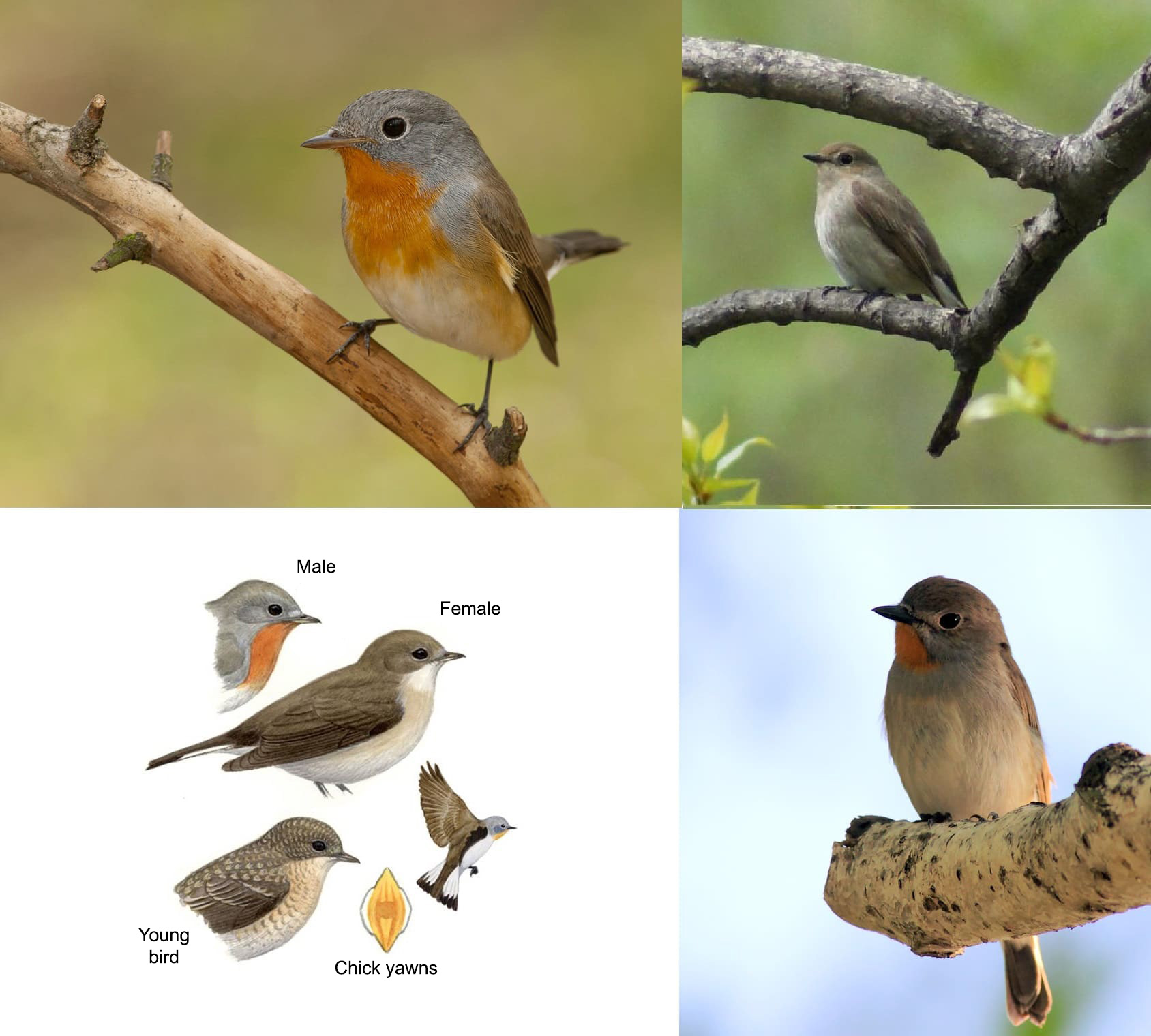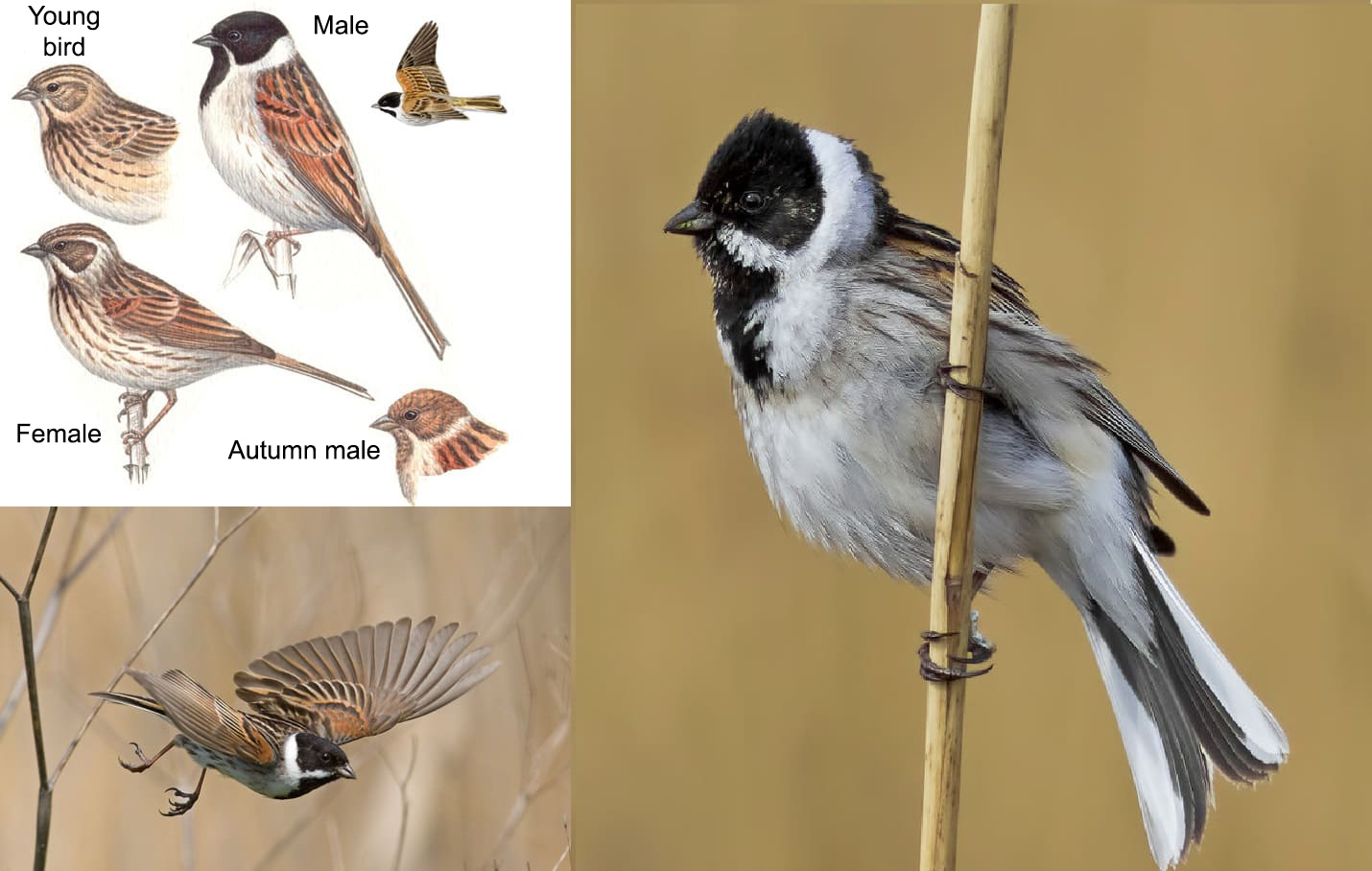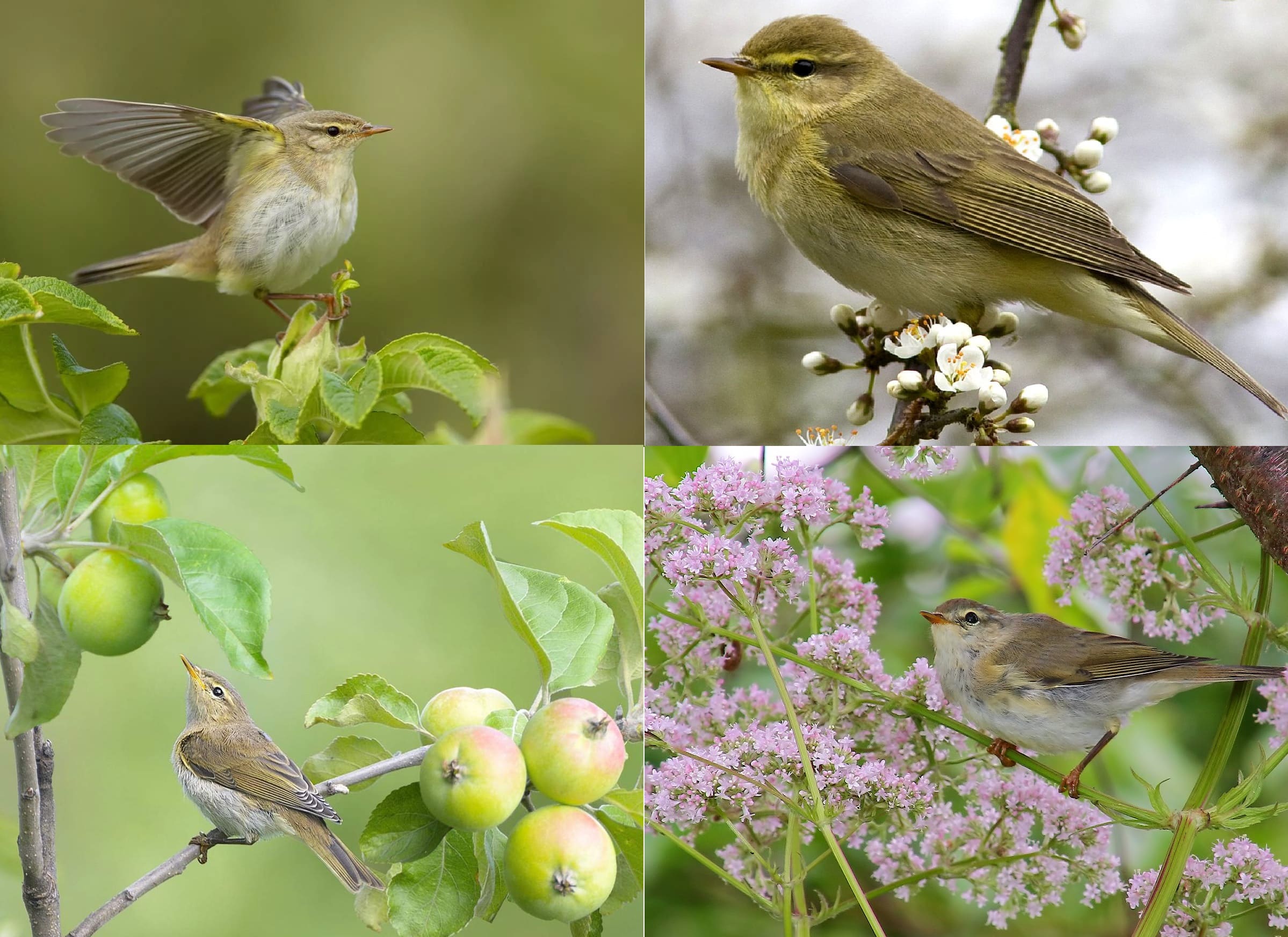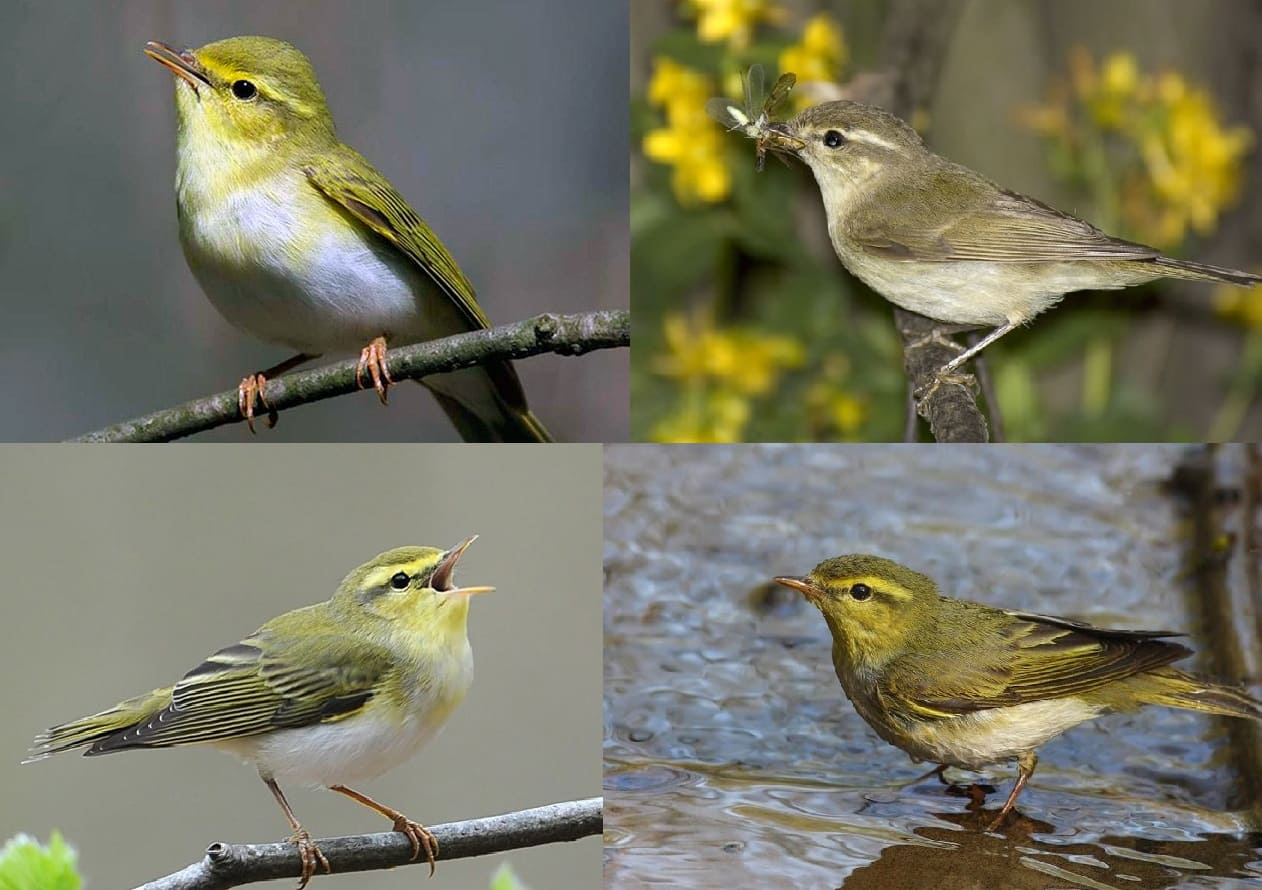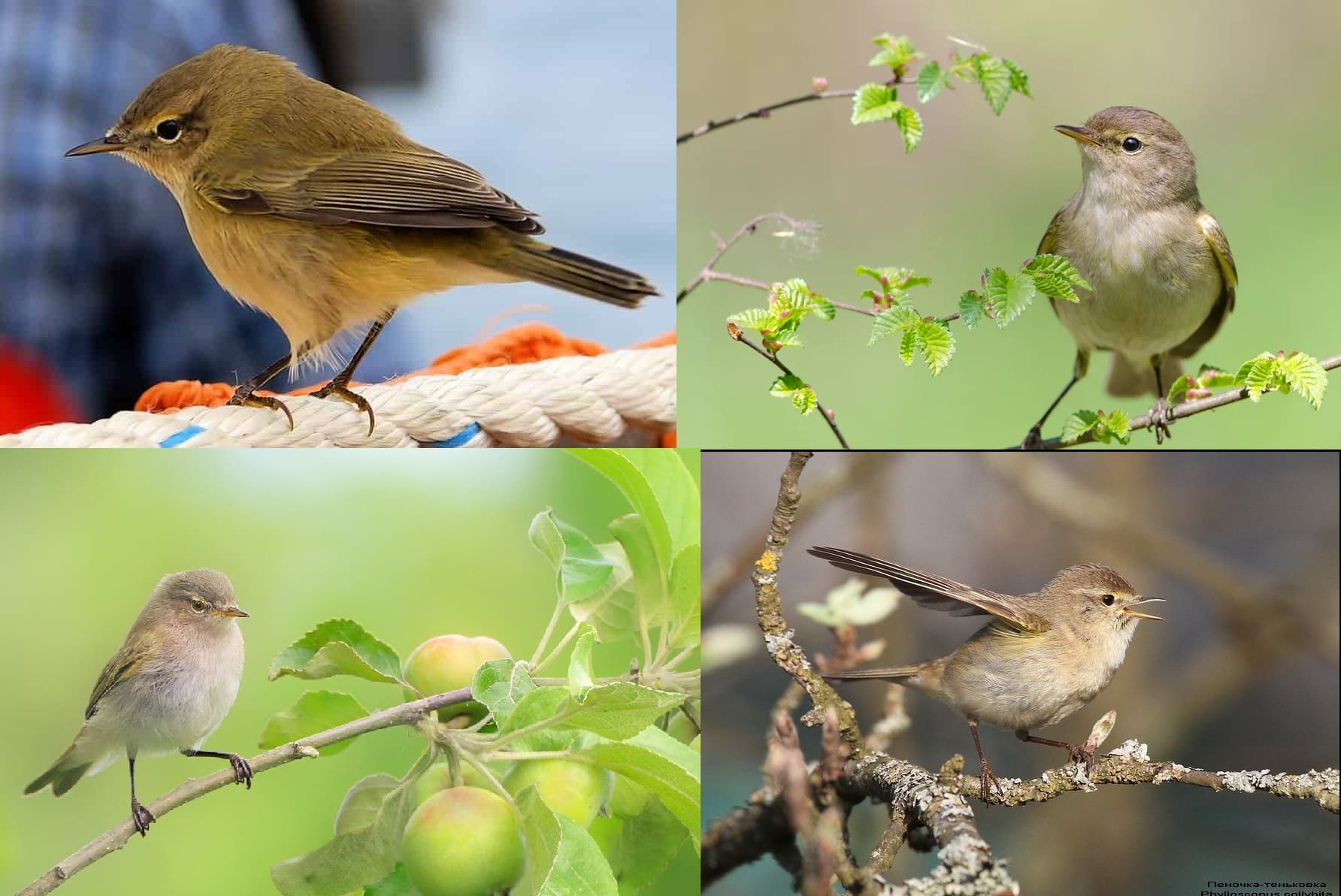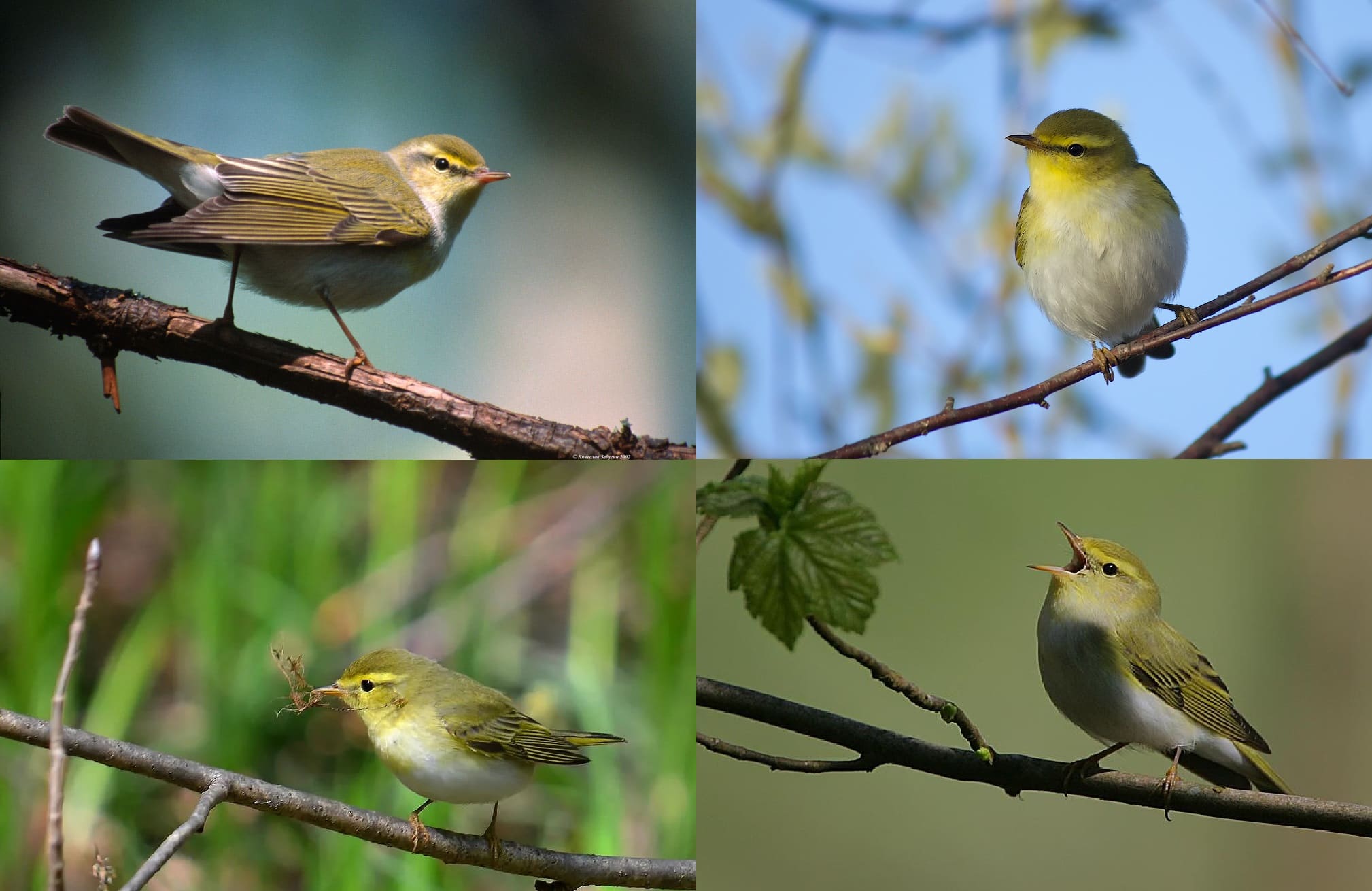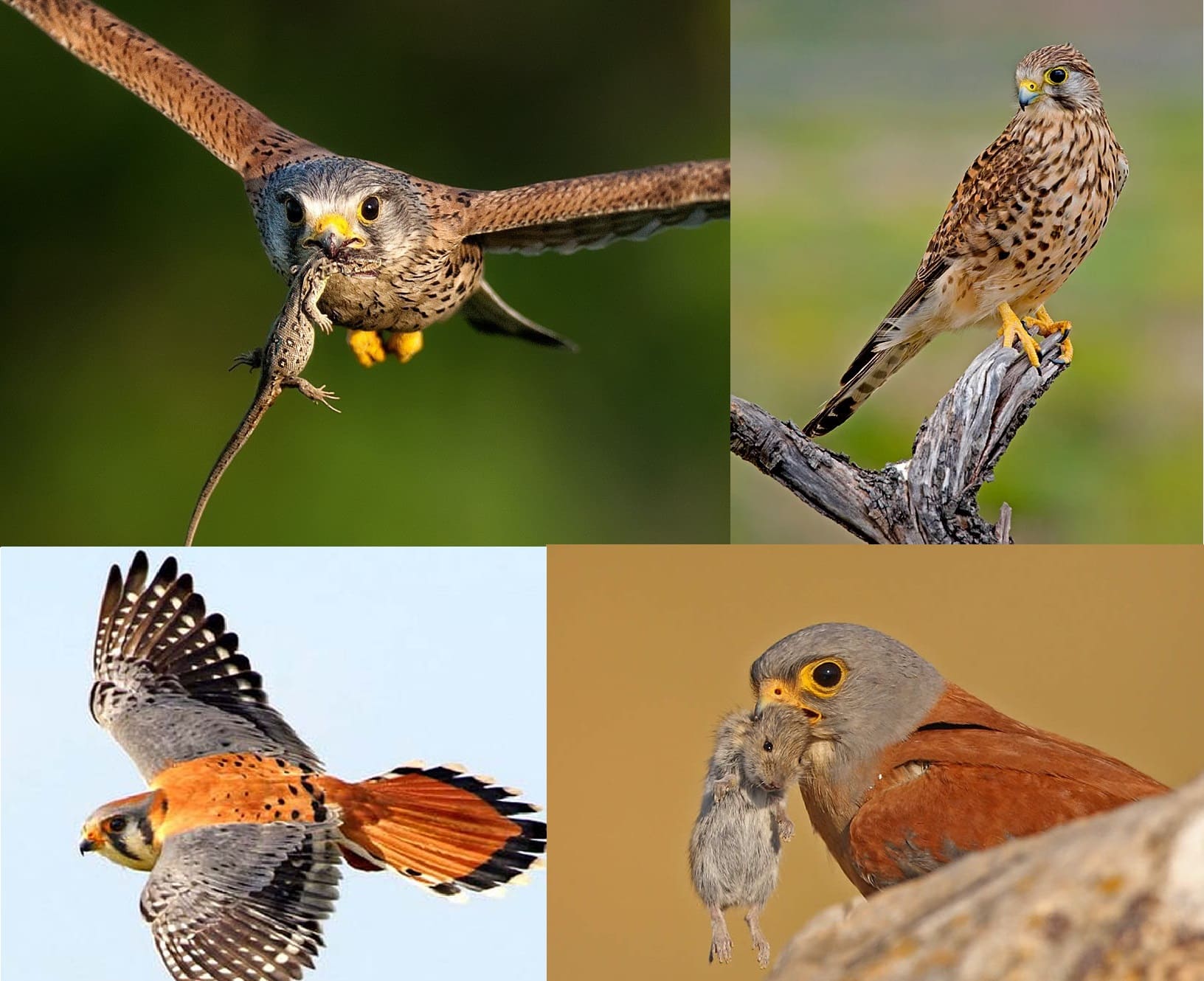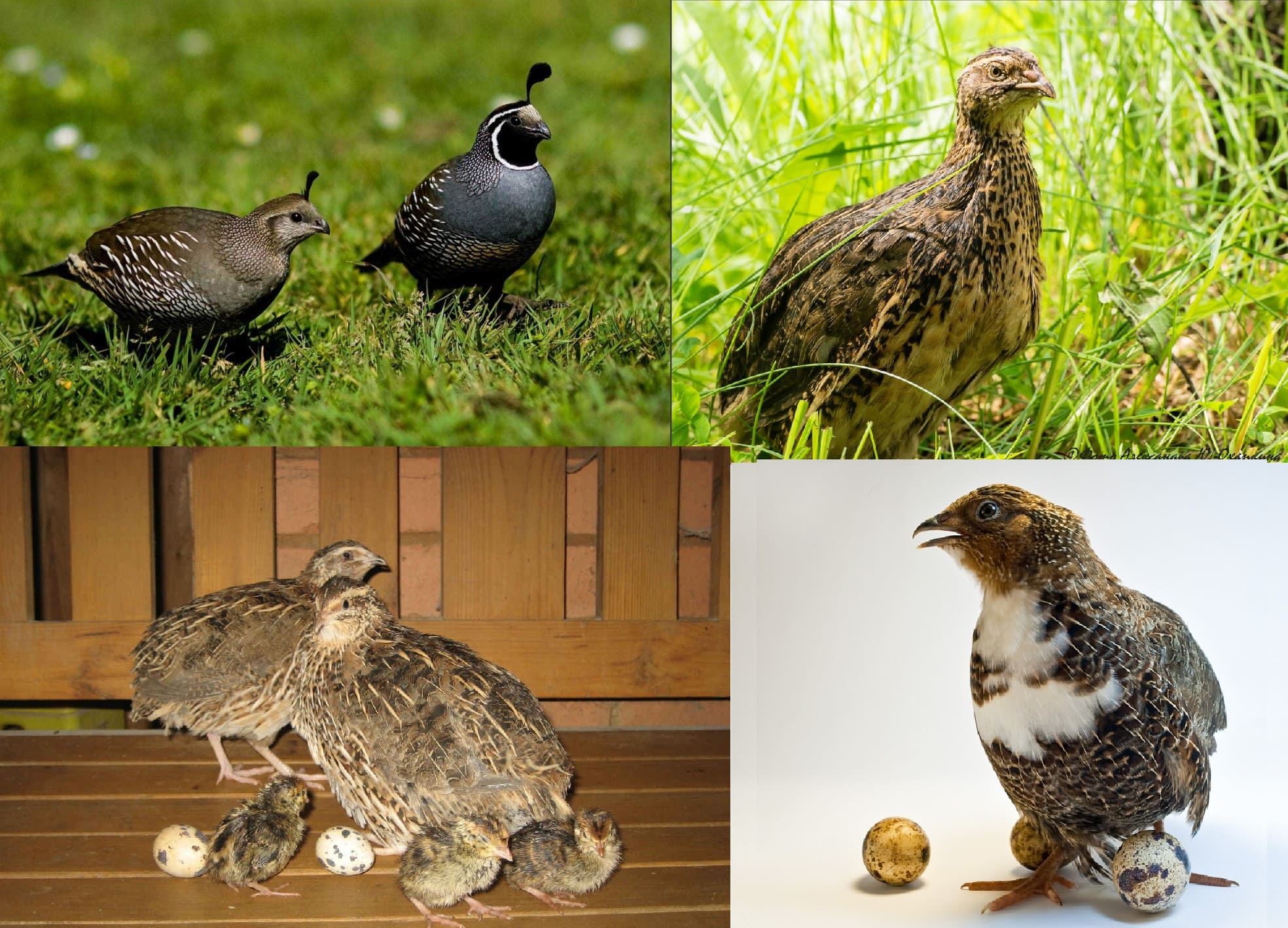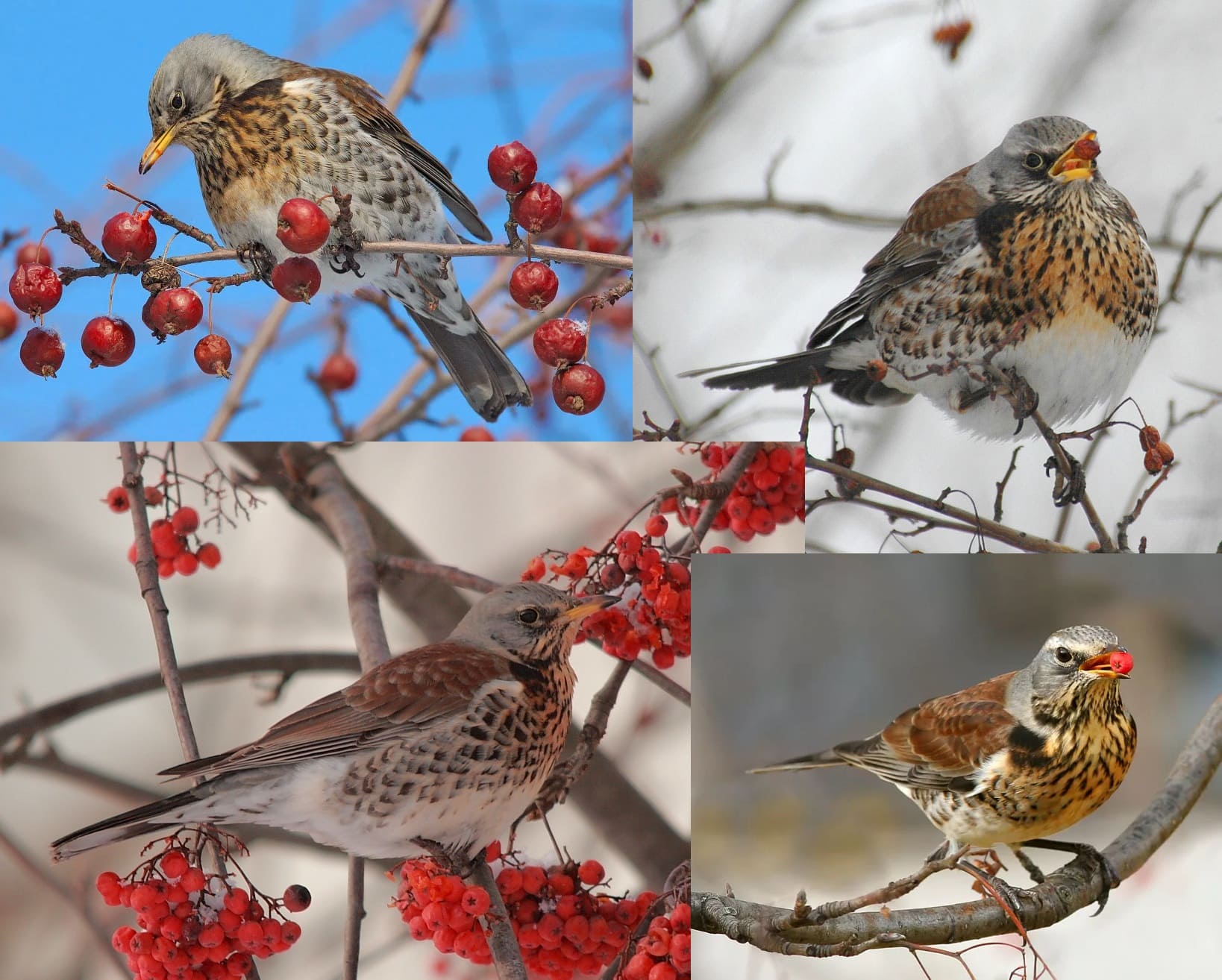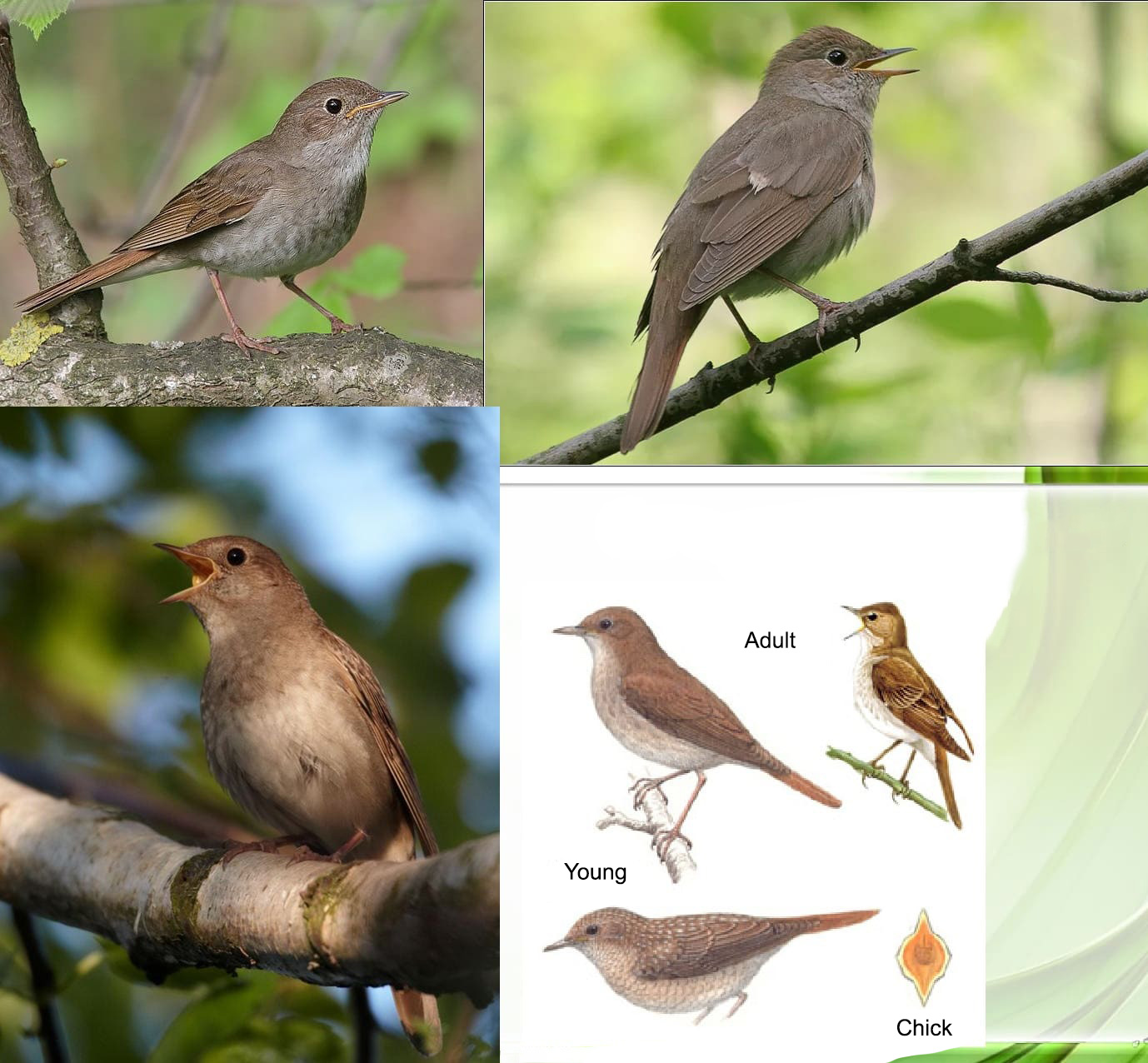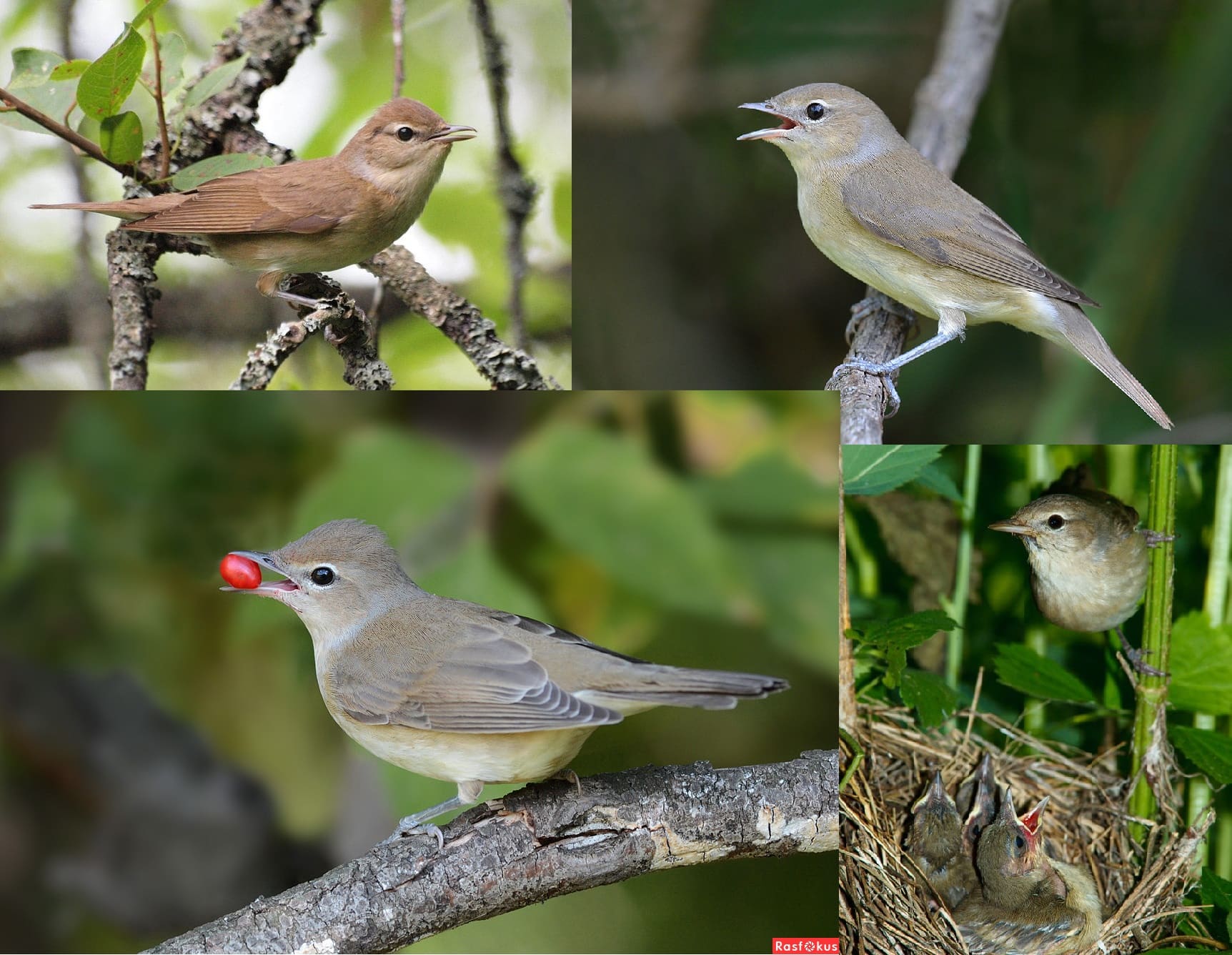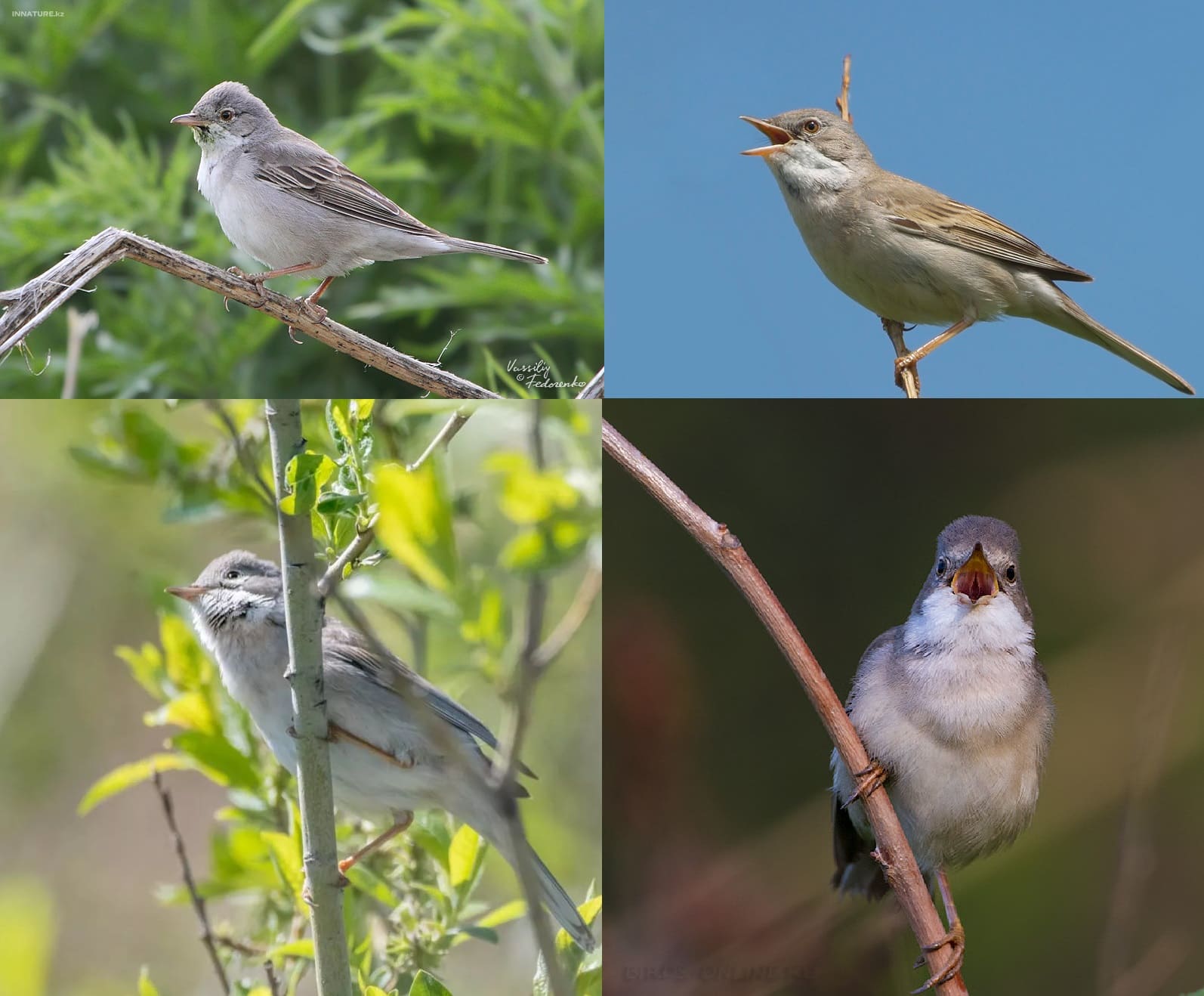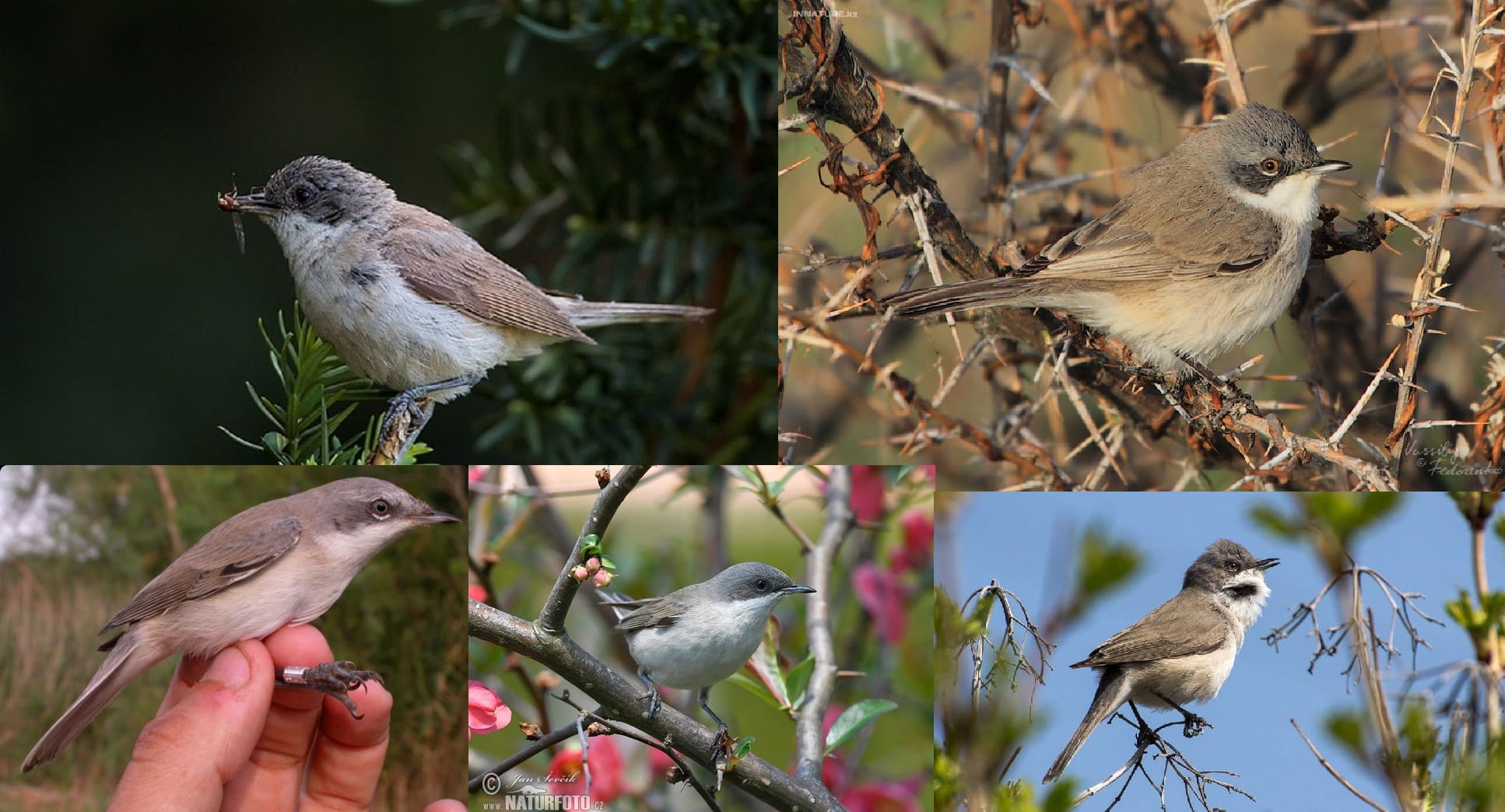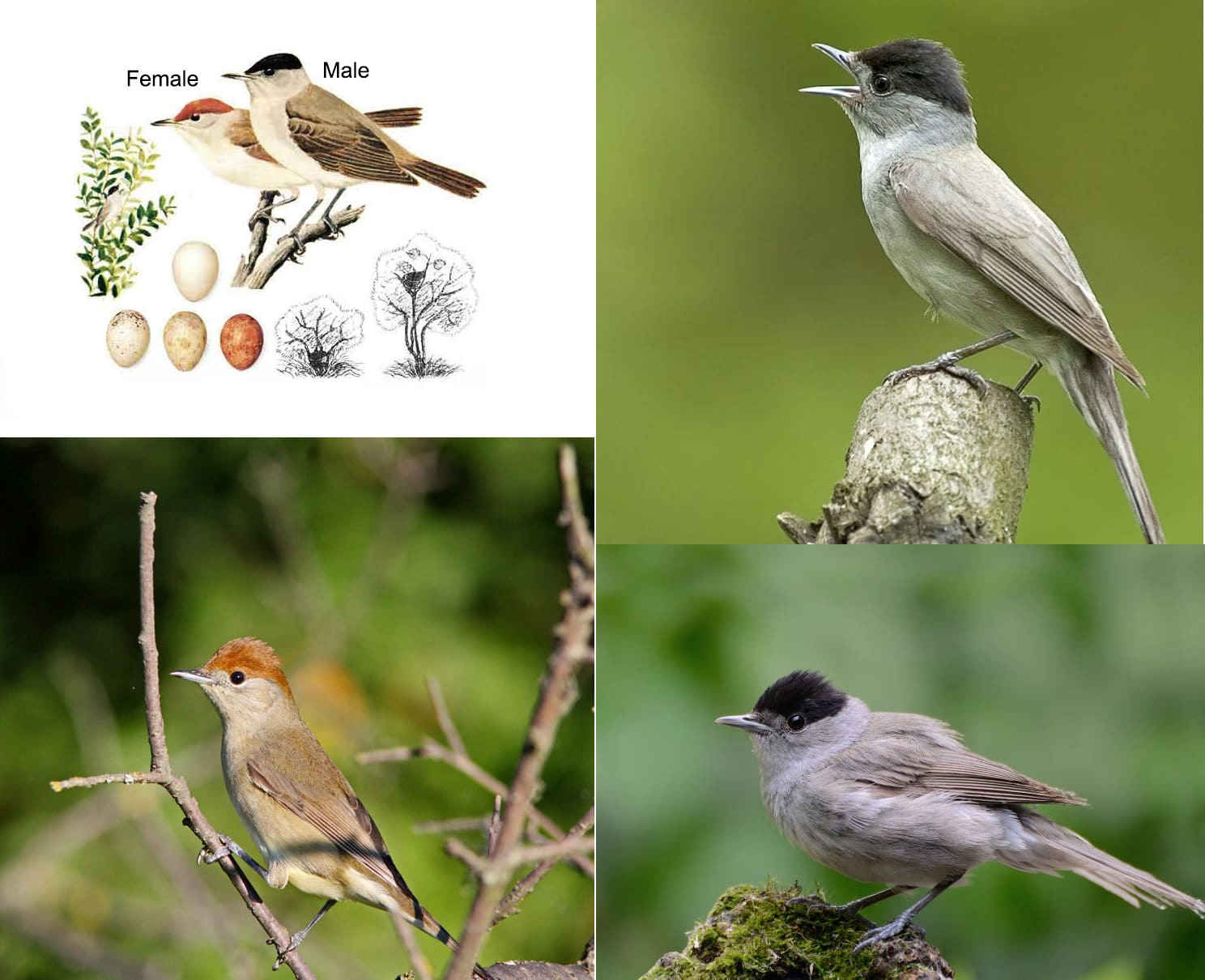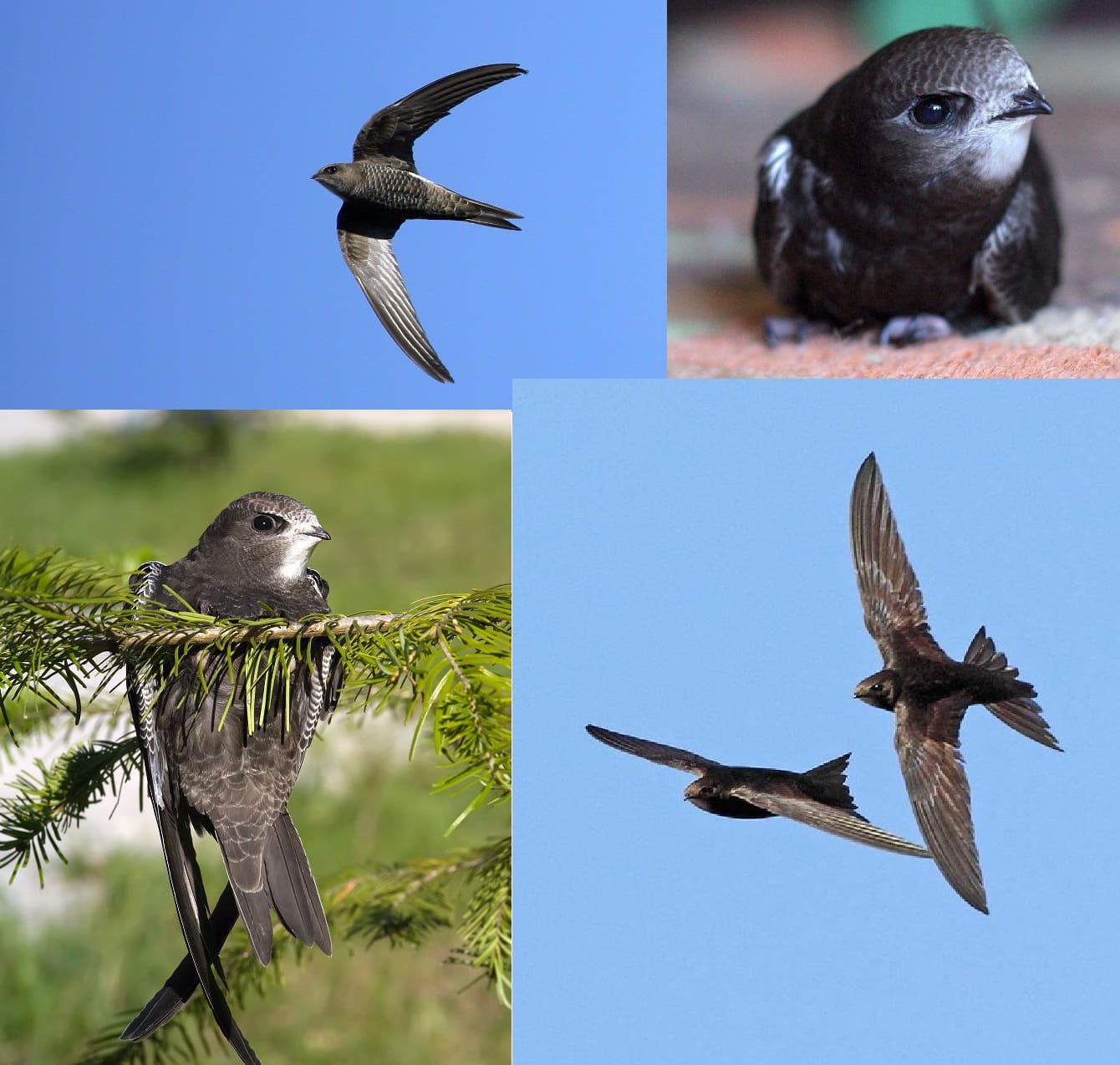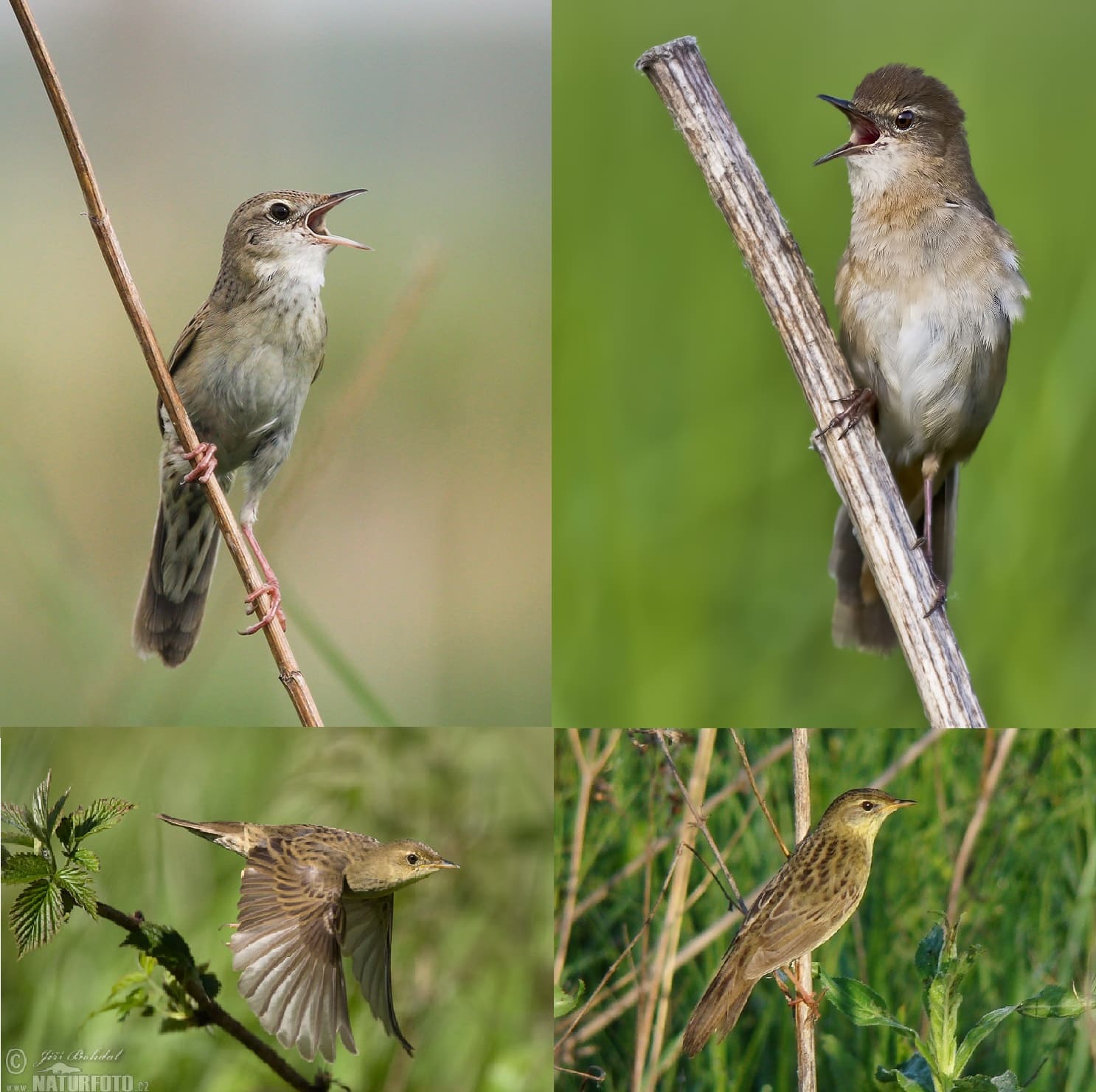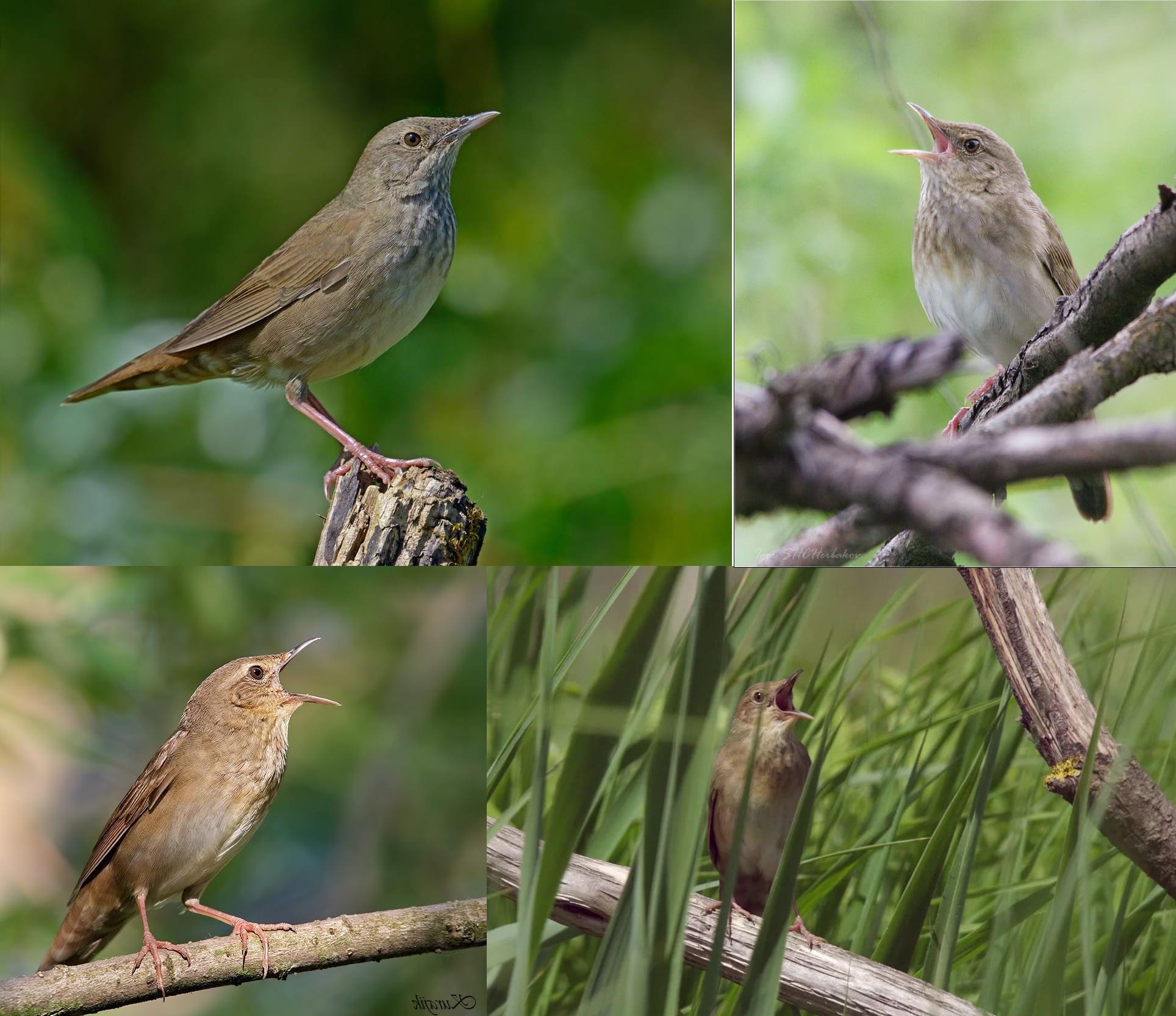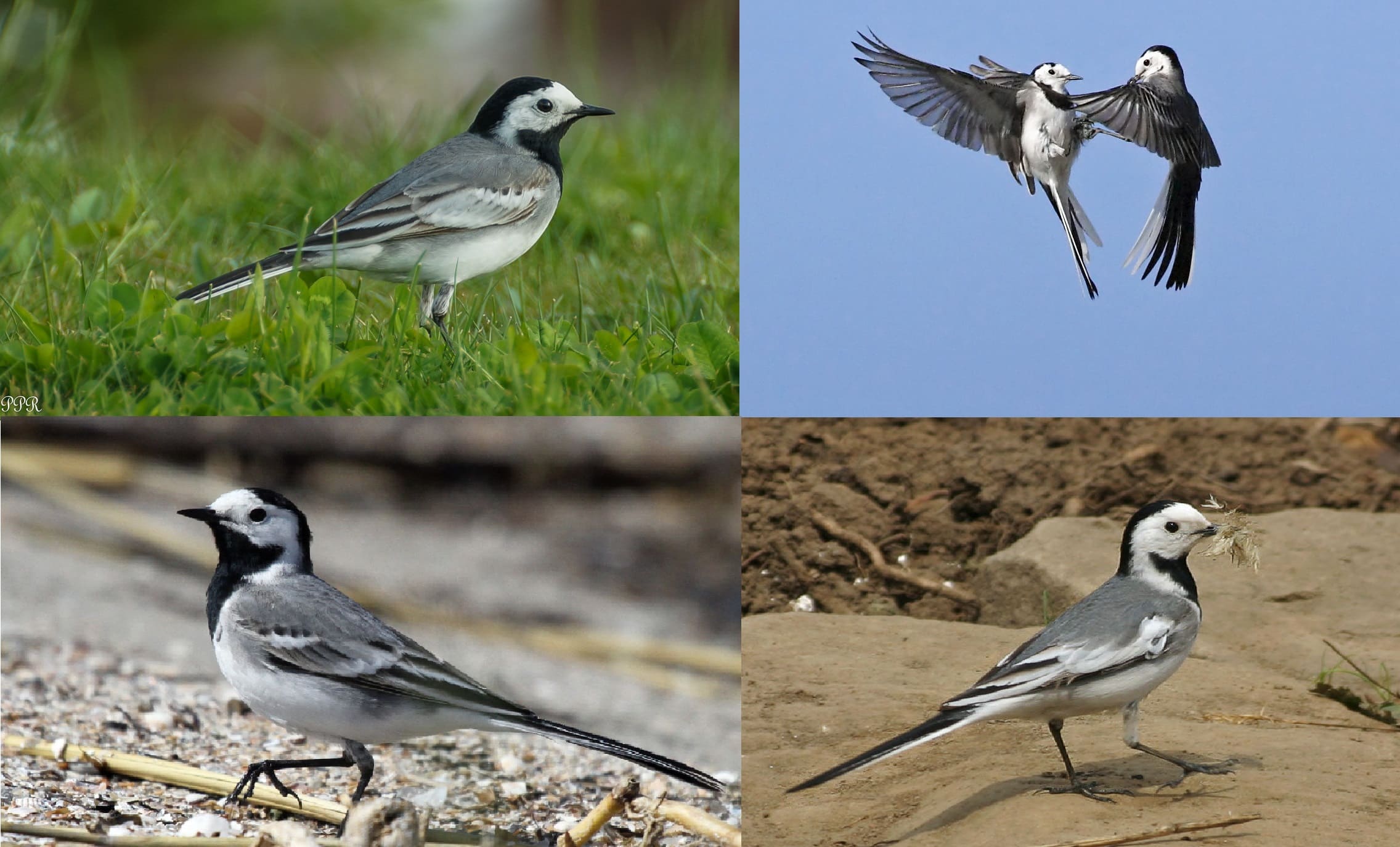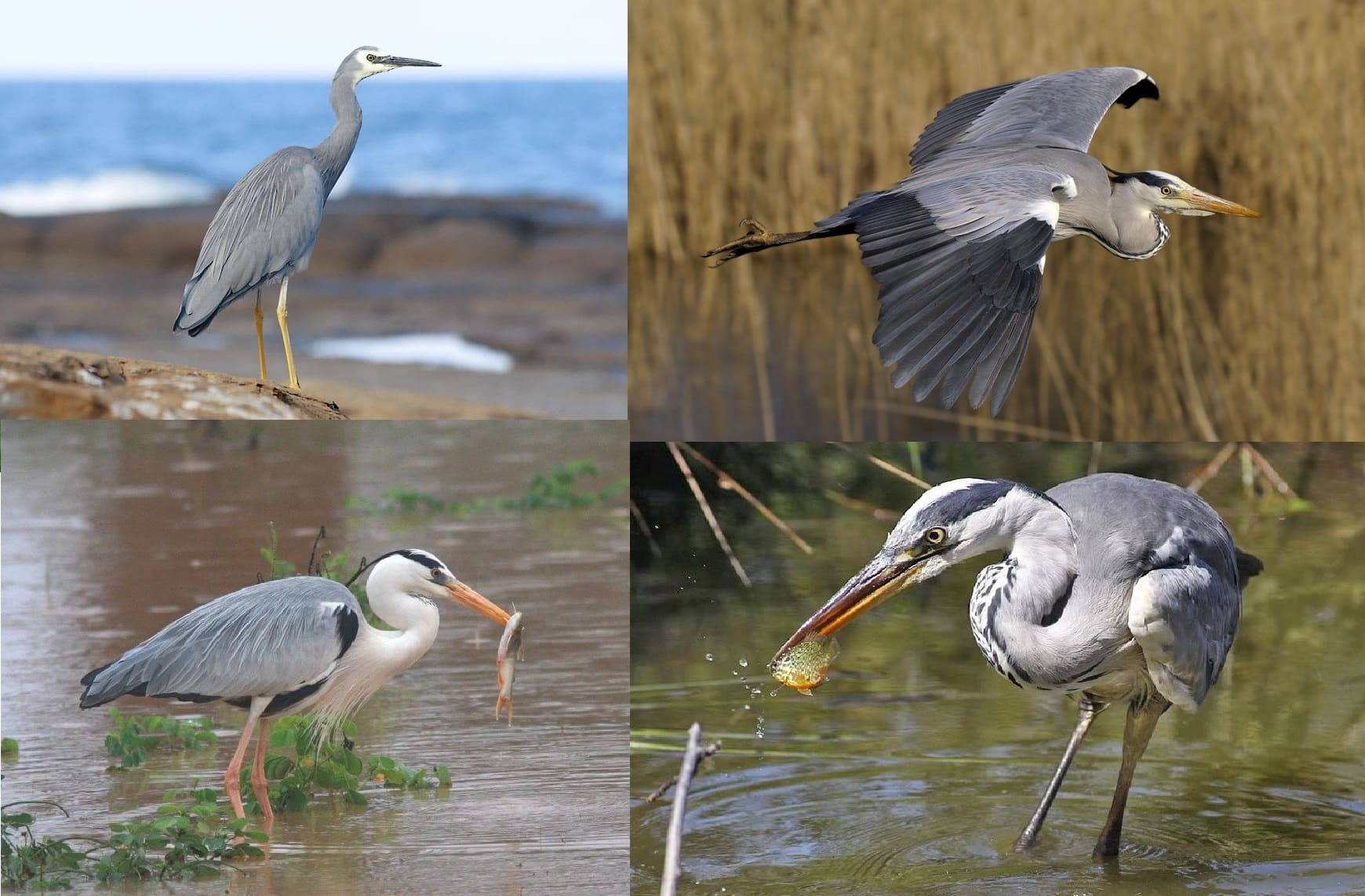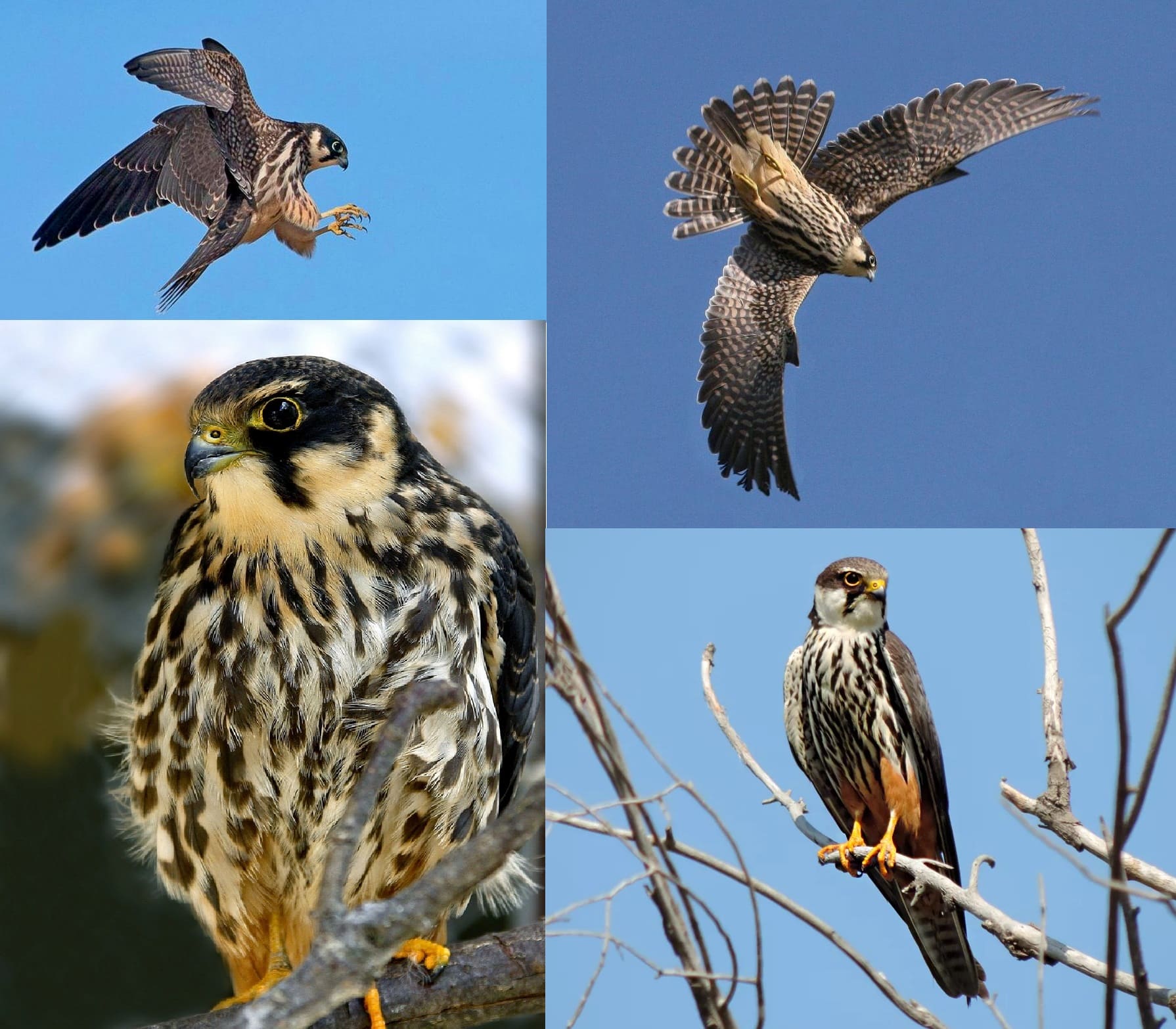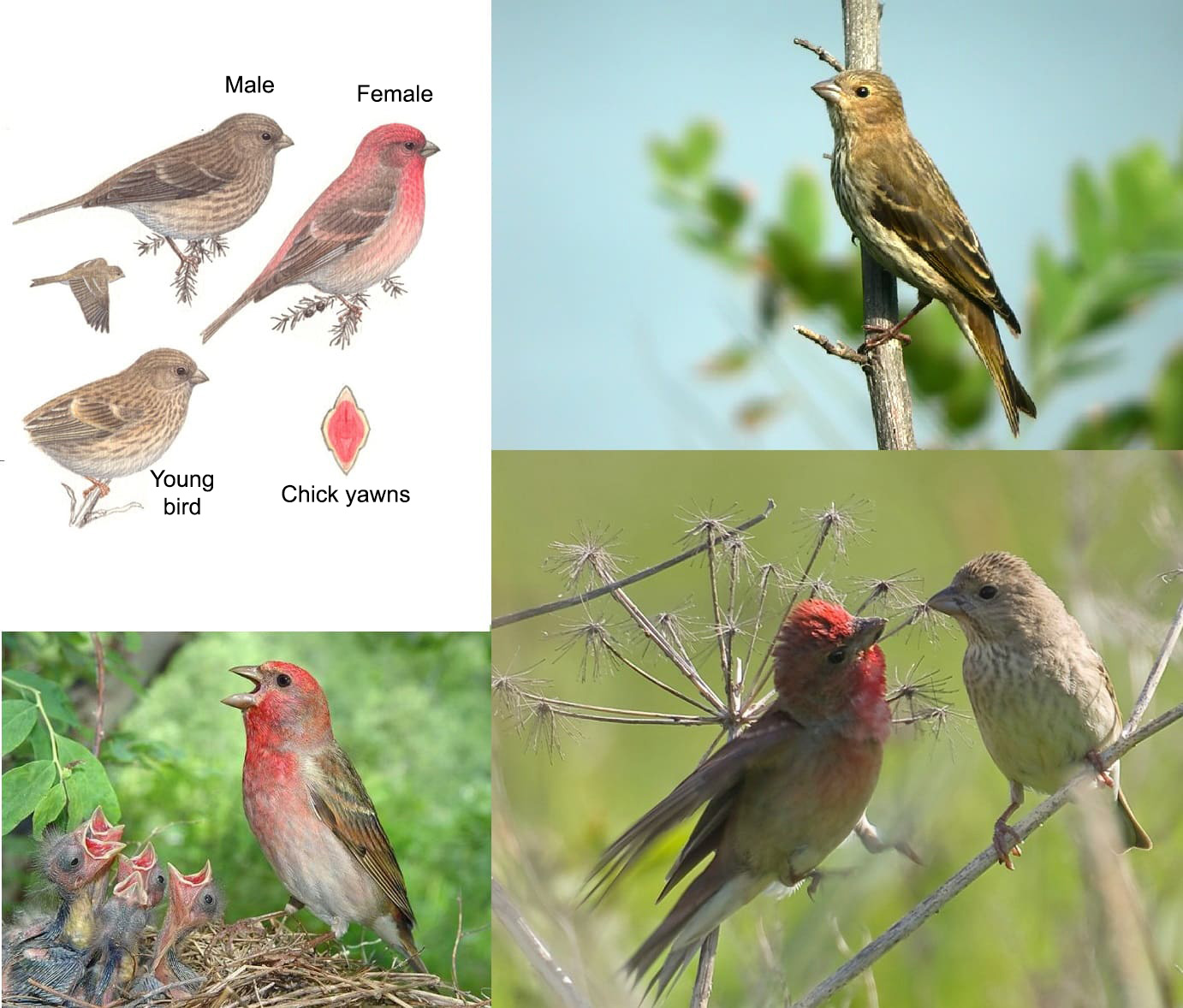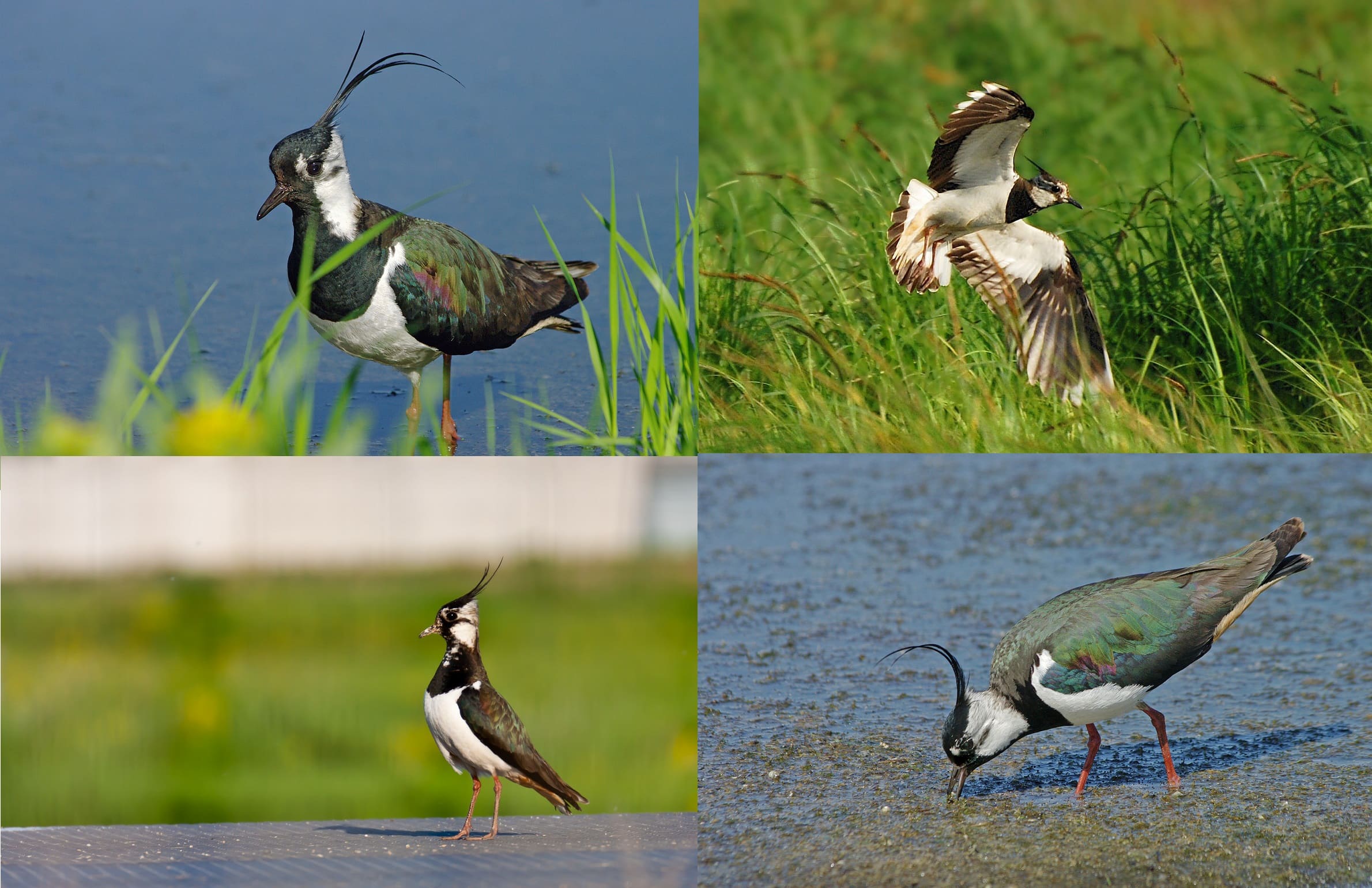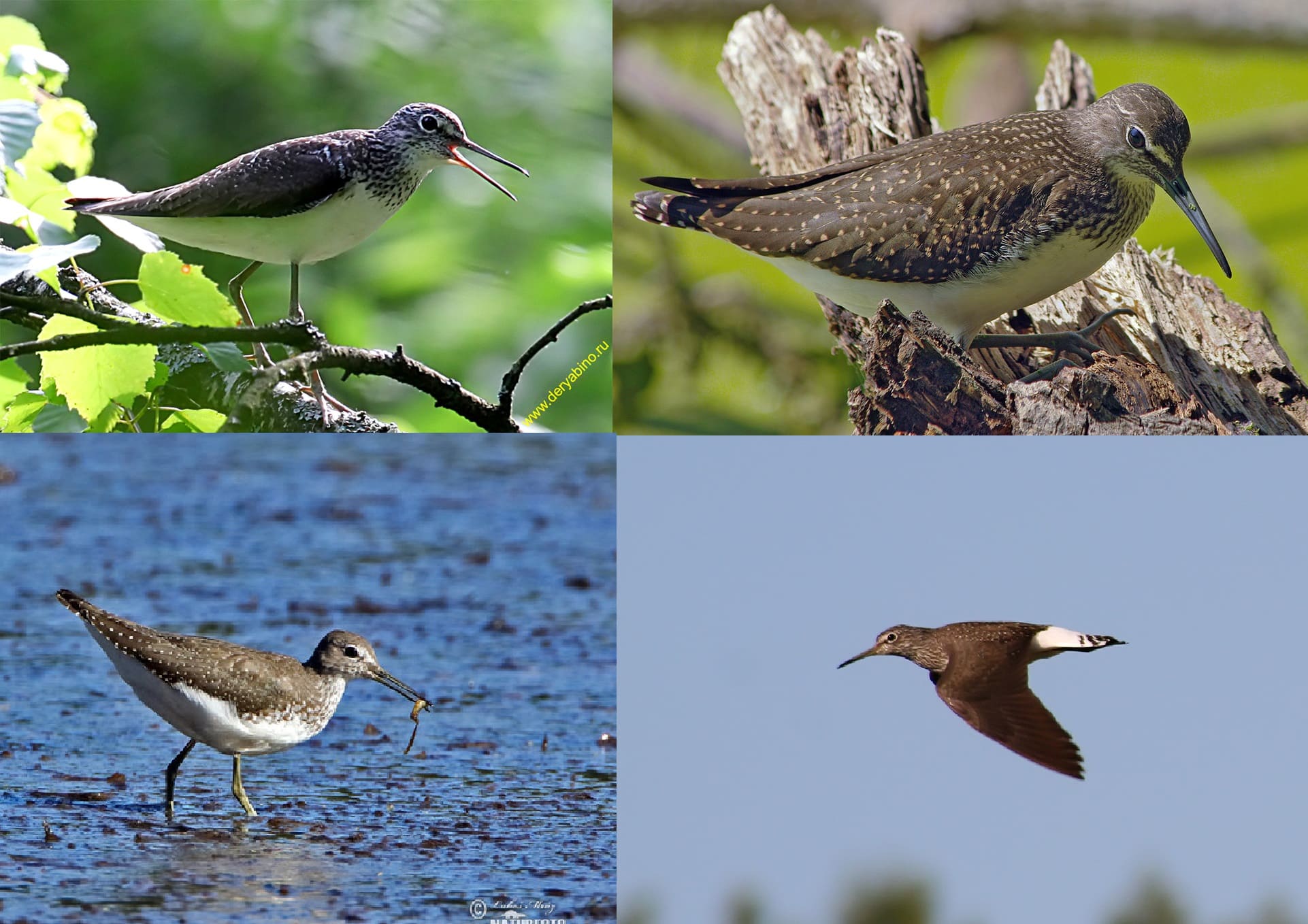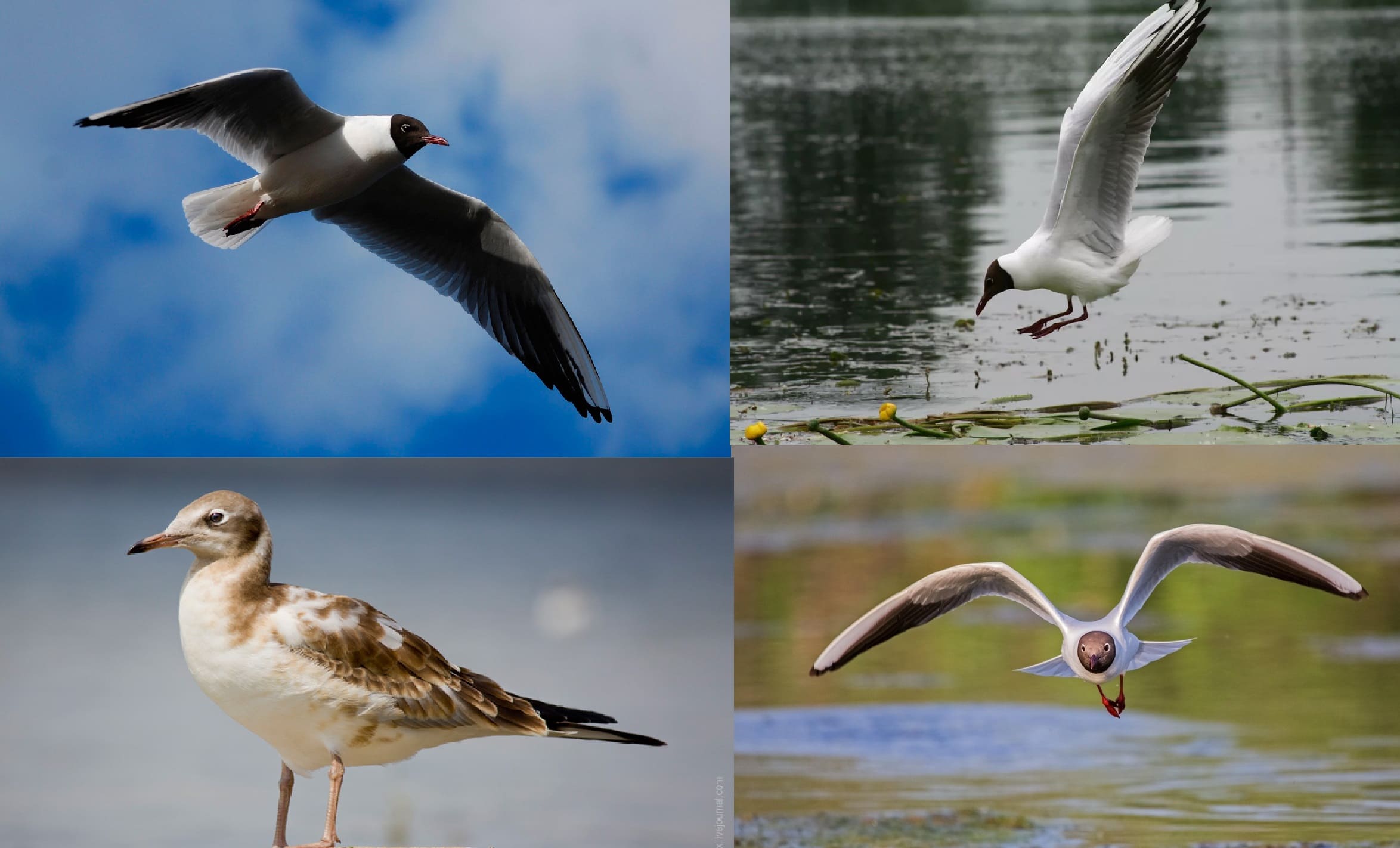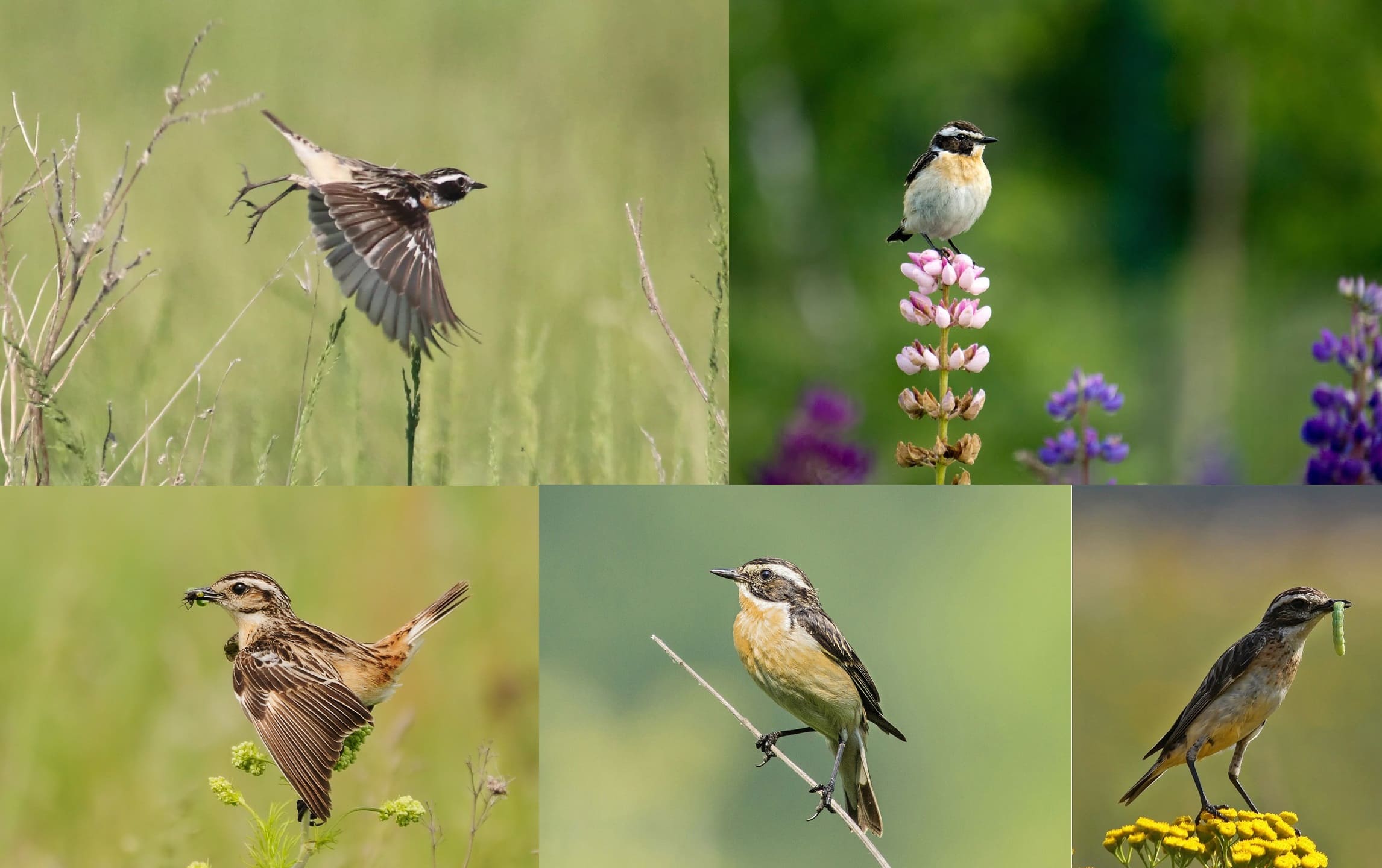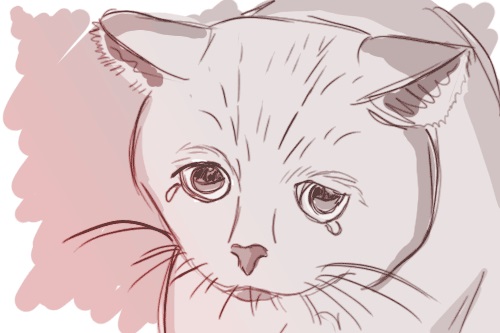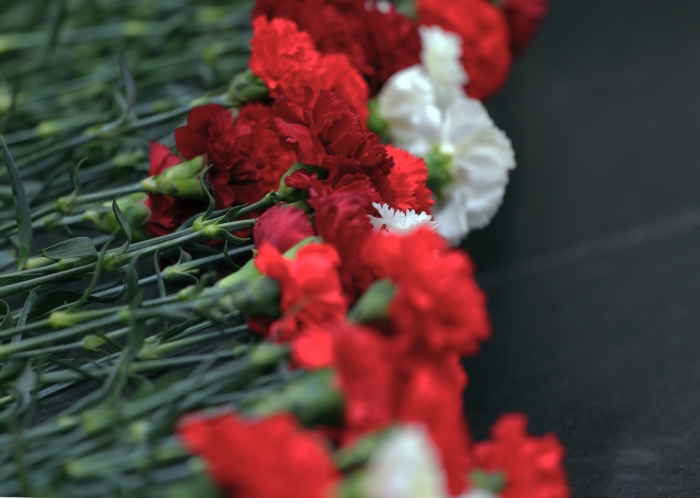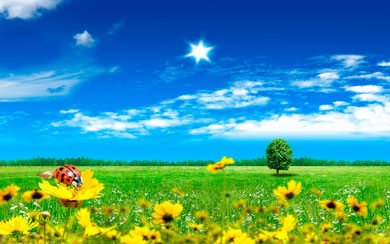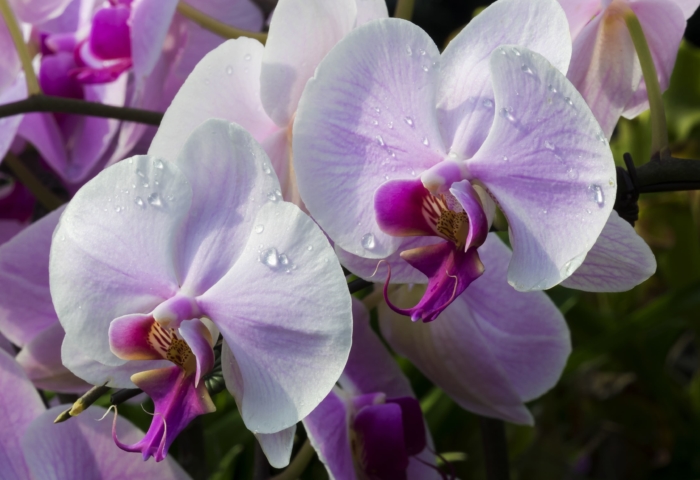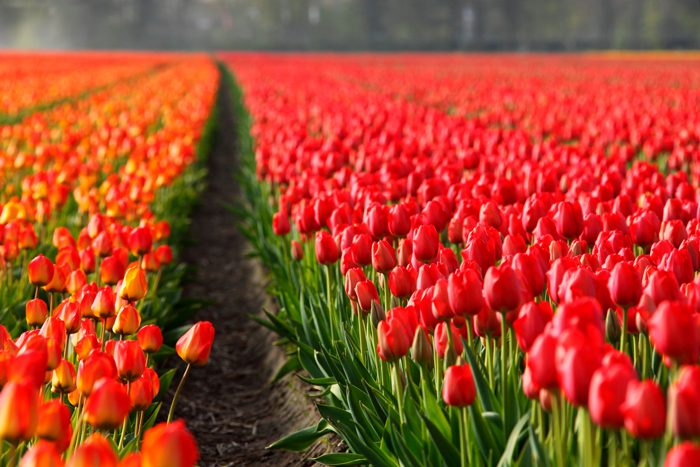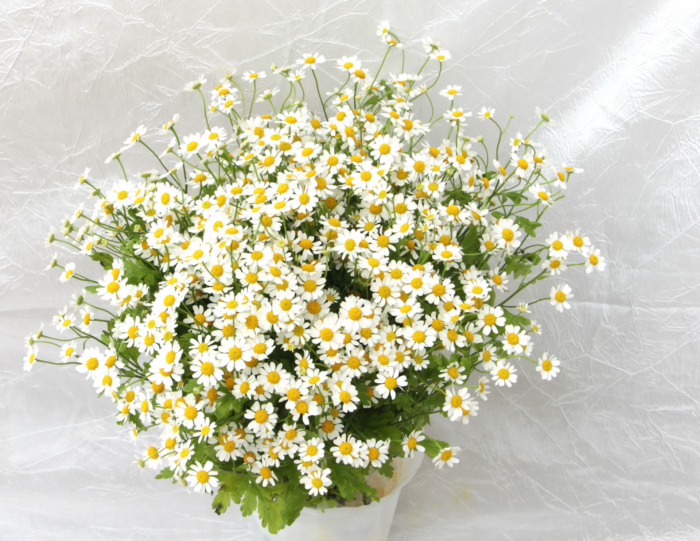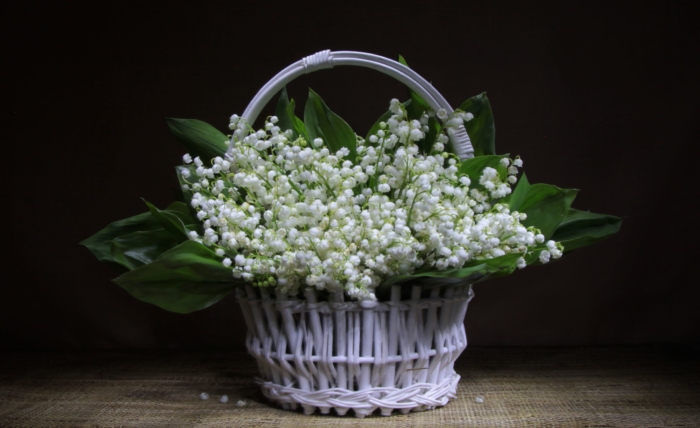Migratory birds are those that fly south with the onset of cold weather. For each type of migratory bird, the need for migration is determined in its own way. If one bird already feels the need to travel and flies away, then the other will think: “There is a lot of food around me. It looks like I can stay.” Here you will find images and photographs of migratory birds, their names and descriptions, and much more. This knowledge will help you educate your children! You can also use this to prepare a report, homework, or simply to develop your erudition. You will find out where migratory birds live, what they like to eat, as well as the size of these birds. We will also give you some general information about these winged travelers.
Why is there a seasonal bird migration?
Birds do not migrate because they freeze. They are warm thanks to feathers, but they need to eat something and maintain metabolism. It is the presence of food that determines the time of migration of birds. If winter promises to be warm, then food in some species of birds may be enough for wintering, so some species sometimes remain in their usual habitat.
Which migratory birds fly away earlier, which migrate later?
- Birds feeding on insects are the first to fly away. Their food at some point becomes insufficient: insects hide, and birds go south to feed themselves.
- Then the soil freezes. Those birds fly away that eat seeds, grains of trees and plants.
- Large waterfowl are the most patient. They remain in place until the ponds begin to become covered with ice crust.
Photos, Names and Descriptions of All Migratory Birds
Redwing, a species of Thrush (Turdus iliacus)
Redwing thrush is the smallest among thrushes, and the most common species in Russia and the CIS countries. Not very afraid of the cold: he flies out late for the winter, and returns one of the first. Prefers to nest in a sparse birch forest.
- Dimensions: 22 cm in length, weight almost never exceeds 60 grams.
- Habitat: Eurasia, Himalayas. In winter, flies closer to Africa.
- Food: insects, butterflies, caterpillars. It does not disdain worms, which it brings to its chicks with whole bundles in the nest.
Sand Martin (Riparia riparia)
These tiny representatives of the swallow family love to fly quickly over the water surface itself, and settle near water bodies. Sand Martin does not change their housing habits even on a warm vacation. Favorite places for nests are the steep banks of rivers with soft soil, near sand pits, wherever they can dig a cave-nest near a pond.
- Sizes: length – 12-13 cm, wingspan – 25-28 cm, weight 11-16 g.
- Habitat: the entire territory of Eurasia, as well as part of North America. Migrates to the south, depending on the zone of the original habitat, closer to the reservoir.
- Nutrition: almost only insects. He likes to hunt right in flight, quickly grabbing insects with his beak. Small size and great air mobility make Sand Martin a successful hunter.
Eurasian woodcock (Skolopax rusticola)
The bird is medium in size and belongs to the Sandpiper family. It has a direct beak and camouflage color in rusty black colors. The singing of this bird can be heard infrequently, only during the mating season. He likes moist, marshy soils, dense deciduous and mixed forests. Always do not mind moving around looking for places with richer food. They are found alone. Eurasian woodcock is often hunted.
- Sizes: length – up to 38 centimeters, an average of 33-35. Wingspan reaches 65 cm, weight – 460 g. Beak 7-9 centimeters long.
- Habitat: forests and forest-steppes of Eurasia. It is also found in the Canary, Azores, British Isles, and Japan.
- Nutrition: earthworms. Eurasian Woodcock chooses a place of residence based on the size of their population. It can also feed on insects and their larvae.
Eurasian wryneck (Junx torquilla)
The bird of the woodpecker family got its name for its long neck, which is constantly in motion. He prefers to settle in the hollows abandoned by other woodpeckers and does not build his own housing. Can drive smaller birds out of the hollow. When her house is attacked, the Eurasian wryneck fluffs its tail, hangs its wings, hisses and twists its neck like a snake, misleading the attacker.
- Sizes: about 17-20 cm long, wingspan 25-30 cm, weight 32-48 g.
- Habitats: in the forests of the Mediterranean, Eurasia from France all the way to Japan, and south to China. It also lives near humans, in squares and parks.
- Food: larvae of ants and beetles, as well as these insects.
Bluethroat (Luscinia svecica)
A small bird of the family Thrush detachment of the Passeriformes. Males have a bright color on the breast and under the beak. They like to sing, sitting on the bushes in the morning, sometimes making flights along a special trajectory.
- Dimensions: about 15 cm long. Males weigh from 15 to 23 g, females – from 13 to 21 g.
- Habitats: banks of rivers, streams, ravines, lakes, etc., where it is wetter and denser. Nest right on the ground in thickets of grass and shrubs. Large population in Eurasia.
- Food: insects and their larvae. In autumn, he switches to a berry diet.
Common Redstart (Phoenicurus phoenicurus)
A small bird of the flycatcher family. Often found in urban parks in the European part of Russia, as well as in eastern Europe. If you look at the photo of this migratory bird, you can easily understand where its name came from.
- Size: approximately 10-15 cm of adult length.
- Habitat: Europe, the European part of Russia, fly away to Africa for the winter.
- Food: Usually eats insects, but can switch to berries if there is no more food.
Common Ringed Plover (Charadrius hiaticula)
Common Ringed Plover is a small migratory bird, dark gray-brown in the upper torso and white below. The name received for the circle around the neck. They nest in the sand. Usually the house of these birds looks like a hole in the sand, sometimes covered with stones.
- Dimensions: usually about 20 cm long.
- Habitat: sand, pebble, silt coastal zone. Eurasia, North America. Flies to the southern parts of the mainland, but most often – to Africa to wait out the winter.
- Food: mainly worms and other invertebrates that are found in the waters and off the coast of inhabited reservoirs.
Mistle thrush (Turdus viscivorus)
This migratory songbird belongs to the blackbird family. These birds prefer to fly to the southwestern region of Europe. Mistle thrush nests high in the trees, arranging nests on the forks of branches. The cubs fledge in a couple of weeks, and after 3-4 days of active feeding, yesterday’s chicks are already looking for their own food.
- Size: length up to 27 cm with a weight of 140 grams.
- Habitat: central Europe, bright forests. Often can be seen in parks and squares of cities.
- Nutrition: mainly earthworms and the fruits of Mistletoe – a plant parasitic on trees, thereby contributing to its spread. Also, Mistle thrush is not averse to eating berries, clams, insects, larvae.
Common blackbird (Turdus merula)
A large bird of the blackbird family, males are completely black with an orange beak and a yellow halo around their eyes. Females and newly hatched individuals are brown in color with light patches on the throat, breast and abdomen. This is a singing migratory bird, loving to delight listeners with intricate melodies at dawn and sunset. Singing is like flute sounds.
- Size: up to 26 cm in length. The weight of an adult is from 80 to 125 grams.
- Habitat: In Europe and the western part of Russia, in coniferous and mixed forests with moist soil and undergrowth, because worms can be found there. He loves forest ravines. Do not mind settling in abandoned gardens and parks. Also lives in the Caucasian mountain forests. Flies south when the undergrowth freezes.
- Food: it is easier to list what the blackbird does not eat. This is an omnivorous bird that can be fed with worms, bugs, insects, larvae, seeds, berries and fruits.
Song thrush (Turdus philomelos)
The songs of this migratory bird of the thrush family are rightfully recognized as especially beautiful, caressing the ear. The songbird sings quite a variety of songs in a leisurely manner. They can sing all day long! Song thrush is most active in the morning and evening hours. Popularization of his work is facilitated by his performances in city parks. But nevertheless, the songbird prefers the outskirts of dense forests and glades as a permanent residence.
- Size: average length from 21 to 25 cm, average wingspan of 35 cm, but reaches 39. It weighs 55-100 grams.
- Habitat: any kind of forest in Europe, Asia Minor, Siberia
- Diet: invertebrates (worms), in the autumn, it goes on a berry diet.
Eurasian skylark (Alauda arvensis)
Larks are known for their beautiful morning singing. They have a fairly wide chest for their size, which holds a lot of air for continuous singing. The Eurasian Lark nests right on the ground, masking a nest in the grass. It also hunts on the ground, never catches insects on the fly. It does not fly far from the habitats in winter, returns early.
- Size: 11-20 cm in length, body weight up to 45 g.
- Habitat: meadows, steppes, fields, mountains of Eurasia, North Africa. You will not find him in the woods.
- Nutrition: seeds of plants, especially likes wild species of millet. Eats bugs, spiders, butterflies and their larvae.
Red-backed shrike (Lanius collurio)
This is a small carnivorous bird of the family of forty-footed order of the Passeriformes. Males differ from females in a brighter color, as can be seen in the photo. Doesn’t really like to sing. Flights of this bird take place at night. Hunts, crouching on a branch. He likes to prick the thorns of trees or barbed wire.
- Size: 16-18 cm body length, 28-31 cm wingspan, 28 g body weight.
- Where dwells: Almost all of Europe and western Asia. Wintering flies in the tropics of Africa.
- What it eats: large insects, smaller birds, lizards, voles.
European robin (Erithacus rubecula)
Migratory bird from the flycatcher family. These birds are painted a pale gray-green color on top. The chest and part of the head has a bright orange color. Long-legged bird, returns to the habitat after wintering among the first. Females and males sing, but males can do it better.
- Size: body length can reach 16 cm, but the average value is about 15 cm, the average weight is 17-18 grams.
- Habitat: North West Africa, Western Eurasia. They love dense and moist deciduous / mixed forests. Settle in parks and gardens.
- Food: worms, snails, insects. They can eat berries when there is no main source of nutrition. In winter, they eat soft food in the feeders.
Dunnock (Prunella modularis)
This is a songbird, not too big. Refers to a separate family in which it is the most common species. It differs from its neighbors in that it nests on the plain, not only in the mountains. After all, she is very agile and elusive, very quickly moving through shrubs.
- Size: 13-14.5 centimeters, weight up to 20 g.
- Habitat: Eurasia: continental Europe, the Mediterranean, can be found in the Swiss Alps, the Caucasus Mountains, the Pyrenees. It prefers a temperate climate and forests overgrown with shrubs, especially closer to the water.
- Food: insects, worms, arachnids. In autumn, he changes his diet to plant foods: seeds, berries, fruits. Willingly feeds from feeders if there is bread crumbs or lard.
Common chaffinch (Fringila coelebs)
This is a bright, beautiful songbird, similar in size to a sparrow. In a natural habitat, lives an average of 2 years, but being tamed by a person, lives up to 12 years. Males and females differ significantly in color, especially in spring. In the upper right picture above you can see the male and female of this bird.
- Size: length about 14 cm. Wingspan from 24.5 to 28.5 centimeters. Weight from 15 to 40 grams.
- Habitat: in all types of forests, both coniferous and deciduous, including artificial. Prefers not too dense forests with tall mature trees and a cool climate. Often settles near human houses in parks, squares or even near residential buildings. One of the most common birds in Russia.
- Nutrition: seeds, shoots of plants, harmful insects, worms.
Eurasian golden oriole (Oreolus oreolus)
This is the only species of the Oriole family, as well as a common migratory bird in Europe and Asia. They love the crowns of deciduous trees, they are not inclined to gather in large flocks, more often you can see a couple of these birds. Not afraid of long flights for the sake of heat, migrates right up to tropical Asia and Africa south of the Sahara. Bright black and yellow appearance.
- Size: 24-25 cm in length, weight varies from 50 to 90 grams.
- Habitat: Eurasia, covers almost the entire territory of Europe and western Asia. He likes to settle in high deciduous forests, which can not be said about the dense shady forests, Taiga. Often nests near humans, in parks and squares.
- Food: tree insects, caterpillars, large and small insects. Do not mind eating in the nests of smaller birds. It can also eat berries, which it does with pleasure during their ripening period.
Sedge warbler (Acrocephalus schoenobaenus)
This is a migratory bird of the order Passeriformes. Males and females do not differ in color, have a black-gray pattern on top and a light abdomen with a yellowish tinge. They build a nest on a small elevation above the ground, the male hatches eggs in turn with the female. In less than two weeks, the chicks are ready for an independent life.
- Size: average length – 13 cm, wingspan up to 21 cm. Weight up to 15 grams.
- Habitat: in thickets of reeds and shrubs near rivers, lakes and other reservoirs throughout Europe. With the onset of cold weather, it overcomes an average of 6,000 km to reach sub-Saharan Africa.
- Diet: insects and berries, as well as shellfish.
Marsh warbler (Acrocephalus palustris)
Similar to the previous family, Marsh warbler has similar sizes and also do not differ in color depending on gender. It shows good ability to move in the thickets of shrubs and reeds, as well as imitate the singing of some other birds. Nine years is a considerable life expectancy by the standards of a bird of this size!
- Size: Length 13 cm, wingspan reaches 21 cm, weight 11 to 14 grams.
- Habitat: European in summer, prefers to winter in Africa south of the equator. It settles near reservoirs in dense thickets.
- Food: spiders, insects and their larvae, mollusks.
Eurasian coot (Fulica atra)
Eurasian coot, Common coot or Australian coot are all waterfowl migratory birds. A distinctive feature of this bird is a white leathery growth over the beak. It should be noted that it becomes white in adult birds, and in captives it is red. The shell of the eyes is bright red. The animal feels great in the water, where it spends a huge part of its life.
- Size: 36-38 cm in length, wingspan 19.5-23.5 cm, weight from 0.5 to 1 kg. Individual individuals can gain up to 1.5 kg
- Where dwells: in reservoirs with both fresh and slightly salted water. He loves quiet water places, without strong currents. Nests can be found in coastal vegetation. During winter migration does not change habits, often found in sea bays, lakes, reservoirs.
- What it eats: for the most part, plant foods, aquatic plants and their fruits. Carnivorous food (insects) is not more than 10% of the diet. It can take food from swans and ducks. Sometimes dives in search of food to a depth of 1.5 m.
Common buzzard (Buteo buteo)
This is a carnivorous migratory bird, found in almost the entire Old World: both in Africa during migration, and in Eurasia. They like to settle in forests located near meadows or glades, where they like to hunt. They attack prey either from a leisurely hover above the ground, or from an elevation. They form large flocks during winter migration. Rabbits and gophers shun these flocks.
- Size: 51-57 cm long, wingspan 110-130 cm. Females are usually larger than males.
- Habitat: in almost all of Europe, in the forests of Asia, migrate to Africa in winter, but they may not fly anywhere.
- Food: Small mammals such as rats, mice, gophers, small birds, even rabbits. During hunger, it can eat carrion
Common tern (Sterna hirundo)
This water-loving bird, refers to migratory. Outwardly, it is very similar to the polar one, but smaller in size. Excellent divers, find food in the water. Easily recognizable by a bright orange beak with a black tip, black top and bright legs-flippers.
- Size: adult body length 31 to 35 cm, wingspan – 70-80 cm, weight from 97 to 175 grams.
- Habitat: on the coastline of the seas, oceans, as well as rivers and other inland waters of Europe, Africa, New Guinea, Phillipin, western South America.
- Diet: small fish. Also, do not mind eating insects and mollusks.
Stock dove (Columbia oenas)
This pigeon is very similar to the Gray Pigeon, well known to city dwellers. But unlike him, this bird prefers a forest lifestyle away from civilization. Males and females look almost the same, but males are larger. It prefers a settled way of life if it nests in a warm area, but the north the nest, the more likely it is that this species of pigeon will fly away from its place to winter in warm lands.
- Size: length 32-34 cm, male weight 303-365 grams, female weight 286-290 grams, wingspan 63-70 cm
- Habitat: deciduous, mixed forests and forest-steppes of Eurasia. Usually does not nest above 500m above sea level.
- Nutrition: seeds of plants and trees, sometimes insects, mollusks.
Common Cuckoo (Cuculus canorus)
This is a known species of migratory birds of the cuckoo order according to the recognizable singing of the male bird. Does her voice already sound in your head? This means that you were near the forest and heard this singing. For most of their lives they remain silent, only in the spring do they begin to sing during mating games. According to the observations of ornithologists, in one approach, the cuckoo can make up to 360 sounds.
- Size: cuckoo length can reach 34 cm, wingspan from 55 to 65 cm, weight 80-190 grams.
- Habitat: almost everywhere, in all climatic zones and landscapes you can meet this bird. Prefers to spend winter in Africa and the tropics of Asia.
- Food: mainly insects and their larvae.
European nightjar (Caprimulgus europaeus)
This is a nocturnal carnivorous migratory bird, the size is slightly larger than a thrush. A characteristic feature is the color, which allows the bird to camouflage well against the background of tree bark or forest litter. Squinting her eyes, she merges even more with the outside world. They do not have long legs, they can not grab hold of the branches. Therefore, it sits along the branches, and not across.
- Size: length 24.5-28 cm, wingspan 52-59 cm, weight of males 51-101 g, and females 67-95 g.
- Habitat: Eurasia, North Africa, in open areas, as well as rare forests. Avoids dense forest. He likes a warm or temperate climate.
- Food: mainly nocturnal insects, catches bees and wasps, mosquitoes.
Tree pipit (Anthus trivialis)
This migratory bird is smaller than a sparrow in size. It has a gray-brown color of the top with black-brown blotches, the chest and bottom are lighter, but also with dark blotches. The younger the bird, the more distinct the black streaks on the top are visible.
- Size: body length reaches 16 cm.
- Habitat: in Europe, North and Central Asia.
- Food: insects and their larvae, spiders. In the fall begins to eat plant seeds.
Eurasian wren (Troglodytes troglodytes)
Wren is a tiny migratory bird of the Wren family, its only representative. A small lump of feathers with a standing tail, this bird is very mobile and loud. Males sing, flying up a tree or other elevation, indicating their territory. They have unusual habits of nesting, the entrance to their nest is located on the side, which makes it look like a cave. Therefore, this species was given the name troglodytes.
- Size: one of the smallest birds in Europe. Body length 9-10.5 cm, almost 2 times less than a sparrow! Wingspan 15-17 cm, weight 8-12 g.
- Habitat: Eurasia, North Africa, North America. Mostly a settled bird, only northern inhabitants migrate south in winter. They love dense and moist coniferous and dark mixed forests, densely overgrown understory.
- Food: invertebrates, worms, bugs, grasshoppers, larvae, wood lice, etc. Sometimes they can hunt small fish in the water. In the fall, they switch to berries.
Blyth’s reed warbler (Acrocephalus dumetorum)
This bird is slightly different from other species of its order. Male and female look almost the same. The main difference is the bird singing. Often imitates the voices of other bird species, but mostly at night.
- Size: length from 11 to 17 cm, length of wings from 5.8 to 6.5 cm. Weight from 9 to 15 grams.
- Habitat: east of southern Finland and the Baltic states, south of the extreme northern point of Ukraine. Winters in India.
- Diet: insects.
Corn crake (Crex crex)
A small bird does not like flying, but during the winter flight to warmer climes it easily covers distances of thousands of kilometers. It lives in tall herbs and almost never protrudes from there. Secretive bird, sings only during the mating season, the rest of the time remains silent. The meat of this bird is appreciated for its good taste.
- Size: a little larger than a thrush. Body length 27-30 cm, wingspan 46-53 cm, weight 80-200 grams.
- Habitat: in meadows and steppes with tall herbs, in damp thickets, fields. Winters in Africa.
- Food: everything, but mostly worms, insects, bugs, snails. Less commonly, it feeds on small mice and lizards, plant seeds.
Hen harrier (Circus cyaneus)
A medium-sized carnivorous migratory bird belonging to the hawk family. It has large wings and a tail, allowing them to hunt quietly and with long hovering above the ground at low speed. Females are noticeably larger than males.
- Size: length 46–47 cm, wingspan 97–118 cm. Weight of females 390–600 g, males 290–390 g.
- Habitat: in open landscapes: fields, lawns, steppes, etc., in the north – in the forest-tundra.
- Food: mainly rodents – hamsters, mice, rats, ground squirrels, voles. Can catch rabbits.
Barn swallow (Hirundo rustica)
Migratory bird with a long tail, which has a fork-shaped tip. These are social animals, they get together in large flocks. Surely many saw such flocks on power wires.
- Size: body length from 14.6 to 19.9 cm, wingspan from 31.8 to 34.3 cm. Weight from 17 to 20 grams.
- Habitat: almost everywhere except Antarctica and Australia. Easily adapt to life wherever there is food.
- Food: insects caught on the fly.
Common house martin (Delichon urbica)
Originally an inhabitant of the rocks, this migratory bird of the swallow family perfectly adapted to life in the concrete jungle. It differs from the village color, which is more black and white, but has a bluish tint in the upper part of the body. In flight, it flaps its wings very quickly: it performs an average of 5.3 flaps per second.
- Size: body length from 12 to 17 cm, wingspan from 20 to 33 cm, weight from 18 to 19 g.
- Where he lives: you can often see under the eaves of residential buildings, high-rise buildings, on balconies. In the wild, they settle on rocks, but they are less and less found there, giving preference to being next to a person.
- What it eats: insects caught in flight.
Spotted flycatcher (Muscicapa striata)
This inconspicuous bird of the flycatcher family is about the size of a sparrow, has a long tail, gray or gray-brown plumage, short legs and a beak. Recognizable vertical landing on a branch. It knows how to distinguish its own eggs from the eggs of other birds, so it never becomes a victim of deception of the cuckoo and other birds.
- Size: body length 15.5 cm, weight 15 grams.
- Habitat: almost everywhere in Europe and West Asia. Flies in the winter to Africa and southwest Asia.
- Food: insects hunted with typical trembling tail and wings, after which it soars into the air, trying to catch the insect.
European pied flycatcher (Ficedula hypoleuca)
Singing migratory bird. Males and females differ in color: females are inconspicuous, gray-brown. Males are more contrasting, black top, white bottom. Favorite nesting places are in hollows, crevices, under awnings. Does not build nests in the open. Females and males are paired to breed and care for them. Both parents feed the chicks, making up to 500 flights and returning to the nest.
- Size: body length about 16 cm, weight 15-19 grams.
- Habitat: in the forests of Europe, both on the continent and on the islands, in Western Siberia. With the onset of winter flies to North Africa. He loves deciduous light forests or mixed, sparse forests.
- Food: larvae of sawflies, flies, caterpillars, spiders. Moreover, flies make up no more than 1/3 of the diet of the flycatcher. In autumn, it also eats berries and fruits.
Red-breasted flycatcher (Ficedula parva)
Another migratory representative of the flycatcher family, inferior to the others in size. A distinctive feature of males is an orange goiter, framed by a gray stripe. Young males after the first molt in their life look like females, and only by the second spring become attractive to females.
- Size: 12 cm in length, weighs 11 grams.
- Habitat: all forests of Eurasia, from Eastern Europe to the western slopes of the Ural Mountains. Prefers south Asia for wintering.
- Food: insects, spiders, small mollusks, in the autumn also feeds on berries.
Common reed bunting (Emberiza schoeniculus)
Adult males of these birds are characterized by black plumage on their heads. He moves on the ground in leaps, but prefers to move through the air in gusty throws up and down. With ease grabs and holds legs even on very thin stems.
- Size: body length up to 16 cm, wingspan reaches 23 cm.
- Habitat: in coastal thickets of reeds, bushes near lakes, rivers, swamps and other reservoirs. Europe and western Asia, with the exception of highlands.
- Food: in the main time it feeds on seeds, but during the breeding season it switches to insects, snails, worms.
Willow warbler (Philloscopus trochilus)
Migratory singing bird of the order of the Passeriformes. Outwardly difficult to distinguish from Philloscopus trochiloides (below), the main difference lies in singing. Males of this species do not differ from females. According to studies by ornithologists, this is the most numerous species of birds migrating from Europe to Africa: each year approximately 300 million birds make this trip.
- Size: body length from 11 to 13 cm, wingspan from 17 to 22 cm. Weight – from 8 to 11 grams.
- Habitat: almost all of Europe, flies south of the Sahara in winter. It prefers deciduous and mixed rare forests, shrubs, humid areas, gardens and parks.
- Food: insects and their larvae, spiders, snails, as well as berries and fruits.
Greenish warbler (Philloscopus trochiloides)
A distinctive feature that influenced the name of this species is the green color of the plumage on the back, head, wings and withers, a little on the chest. Females and males differ slightly from each other. Nests are built in natural landscape shelters – caves, burrows, space under stones, hollows of trees not very high above the ground.
- Size: body length about 10 cm, wingspan from 15 to 21 cm, weight up to 8 grams.
- Habitat: the main habitat of the green warbler is the southern and middle taiga, mixed forests, starting from the east of Central Europe and ending with the Pacific Ocean.
- Food: small insects, spiders, mollusks.
Common chiffchaff (Phylloscopus collybita)
A tiny bird, got its name for its manner of singing, in which the repeated sounds of “tien-tin” are guessed. It differs from a spring fly by singing, and darker legs. Another difference is that this bird sometimes lowers its tail.
- Size: 10-12 cm in length, males weigh 7-8 grams, females weigh 6-7 grams.
- Habitat: in sparse, high forests with undergrowth, prefers deciduous and mixed. Breeds in Eurasia, winters in the south of the continent, as well as in Africa.
- Food: similarly with other representatives of the detachment, eating insects, caterpillars, snails, larvae, as well as berries and fruits. A day eats about 1/3 of its weight.
Wood warbler (Philloscopus sibilatrix)
The top of this bird has a green tint, and the bottom is white. Males and females do not differ in color. They hide their nest on the ground in dense thickets of shrubs. Migration habits, direction and duration of flight are inherent in nature.
- Size: body length from 11 to 13 cm, wingspan 19-24 cm. Weight is approximately 8 to 13 grams.
- Habitat: in deciduous and mixed forests of Central Europe, beech parks.
- Food: spiders, insects and their larvae, small mollusks, berries.
Common kestrel (Falco tinnunculus)
This carnivorous bird is distinguished by its hunting method – it soars in the air at an altitude of 10-20 meters above the ground in search of a prey. It also has a brown plumage color. Prefers to migrate one by one. Often chooses a neighborhood with a person.
- Size: males are up to 34.5 cm in length, have a wingspan of an average of about 75 cm with an average weight of 200 grams. Females are 36 cm long with a wingspan of up to 76 cm, and are heavier than males by an average of 20 g, but the weight varies depending on the season. Most of all, the weight changes during the egg laying period.
- Habitat: easily adapts to a variety of conditions, which contributed to their distribution in various regions of the Earth. These birds do not like dense forests and fully open steppes.
- Food: small mammals, lizards, large insects.
Common quail (Coturnix coturnix)
Quail is the only migratory bird from the order of chickens. In the past, quail was often planted in cages as a songbird, and also organized quail fights. Now it is in the past, but quail eggs are still valued for their beneficial properties. In captivity, the quail feels great.
- Size: Body length 16-20 cm, weight 80-145 grams.
- Habitat: in Europe, Asia and West Africa, in Russia it is distributed to the East up to Lake Baikal in fields, plains, in the mountains.
- Nutrition: plant seeds, sprouts, rarely insects.
Fieldfare (Turdus pilaris)
Fieldfare is a species of thrush numerous in Europe. It differs from the majority of thrushes in a more social way of life. Fieldfare gather in flocks of 60-80 birds, although some still prefer hermitage. In winter they like to eat mountain ash. They defend themselves from enemies by bombarding them with their poop. They glue the plumage of the attacking bird, and it risks being unable to fly.
- Size: 24-28 cm in length, wingspan 39-42 cm.
- Habitat: practically throughout Europe, as well as in Siberia.
- Nutrition: both animal and plant foods, loves mountain ash, sea buckthorn and other wild berries.
Thrush nightingale (Luscinia luscinia)
This is a well-known singing migratory bird, glorified in many tales. His song is a repeating set of trills, clicks, whistles. The first nightingales returning from warm countries appear in early May.
- Size: length up to 20 cm, males weigh 22.4-27.5 grams, females 23.8-25.2 grams.
- Habitat: where it is humid, it loves floodplain forests, lowland oak forests. Often nests in dense thickets of viburnum, bird cherry trees near rivers and streams, in thickets of grass. The range is from western Russia to the Yenisei, and from the north – from southern Taiga to the semi-deserts of Kazakhstan.
- Nutrition: various insects, worms.
Garden warbler (Sylvia borin)
A small singing migratory bird. It nests low – usually on thickets of shrubs or low trees. It takes an average of 6-10 days to build a nest. Male and female hatched offspring alternately and forage for food. Life expectancy is up to 14 years.
- Size: body length 13-14.5 cm, weight 16-22 grams
- Habitat: forest edges, glades, as well as shrubs near rivers in Europe, central and southern regions of Western Siberia.
- Food: insects and caterpillars, in the fall switches to a berry diet of blueberries, elderberries, raspberries and other berries.
Common whitethroat (Sylvia communis)
Another small bird of the family Slavkov is gray in color. It is smaller in size than a sparrow. Often sings in flight, not sitting on a branch. It differs from other species of the family in the habit of building a nest: in gray warblers it turns out to be deeper, with an increased content of field cereals.
- Size: 14-20 cm.
- Where he lives: in Europe, Asia Minor, Western Siberia, winters in Northwest Africa, Israel.
- What it eats: insects and berries.
Lesser whitethroat (Sylvia curruca)
This species of migratory birds has a special brownish color. After arriving from warm countries, the males immediately begin to sing and build several nest frames. After pairing, one of the nests is completed together.
- Size: Body length 11.5-13.5 cm, wings – about 6.5 cm, weight 12-16 grams.
- Habitat: almost everywhere where there are bushes, hedges, including in human gardens. Winters in Africa.
- Food: insects and their larvae, spiders, mollusks, berries.
Eurasian blackcap (Sylvia atricapilla)
A typical singing migratory bird, but with black plumage on the head of males. In females this place is redder. Able to sing from dusk to dawn. Cubs are grown in sloppy built nests located in bushes or lower branches of trees. After the withdrawal of the first offspring for the season, they begin to build a new nest for the second brood.
- Size: body length 13.5-15 cm, wings 7-8 cm; weight is 15-22 grams.
- Habitat: practically throughout Europe, even Western Siberia, except for the Far North. Nests even in northwestern Africa. Favorite habitats of these birds are undergrowth forests, forest edges, clearings, thickets along river banks, mountains, as well as city gardens and parks.
- Food: In the summer it feeds on bugs, insects, caterpillars, butterflies, flies, etc. With the ripening of berries in late summer and autumn, the diet changes significantly in their direction.
Common swift (Apus apus)
A relatively small bird of the swifts family, one of the fastest birds during a dive: 111 kilometers per hour! Tail with a fork-shaped neckline, similar to a dovetail. Males do not differ from females in color. The black swift gradually loses its ideally black color under the influence of sunlight.
- Size: up to 18 cm long, wingspan reaches 40 cm.
- Habitat: in Europe, North and Central Asia. He prefers to spend the winter in southern Africa, flying the entire continent to be there. Builds nests both in forests and next to humans.
- Food: insects that are caught in flight.
Common grasshopper warbler (Locustella naevia)
Small migratory bird of the order Passeriformes. They got their name for their characteristic singing. They sing even in August-September, when the rest of the birds have already stopped doing this. Females do not differ from males in color. He prefers to move on the ground, without flying, but easily overcomes distances during winter migration.
- Size: 12 to 14 cm and weighing 14 to 20 grams
- Habitat: in Europe. Winters in the topics of Africa. This bird can be found in moist meadows, swamps, near rivers, as well as in the plains.
- Food: insects and their larvae, spiders, mollusks.
River warbler (Locustella fluviatilis)
Monogamous representative of the Passeriformes. Nests on the ground. The female is mainly involved in the construction of the nest, but both parents hatch the chicks. Sings sitting in a tree. More often you can hear it early in the morning or evening. Often the male sings at night while the female builds a nest.
- Size: length from 14.5 to 16 cm.
- Habitat: from Western Siberia to the east of Central Europe. He loves the undergrowth and swampy forests, meadows. He needs a cover from above and room for movement down.
- Food: insects and their larvae.
White wagtail (Motacilla alba)
The bird has a long tail, which loves to wiggle, shake, for which it got its name. It nests in natural and artificial depressions.
- Size: 16-19 cm, weight 20-23 grams.
- Habitat: in Europe, Asia, North Africa.
- Nutrition: mainly insects, very rarely – berries and seeds.
Gray heron (Ardea cinerea)
Carnivorous bird. The long neck, long legs and beak make this bird perfectly suited for hunting in shallow water. A large bird, but the size of the females is smaller than the males. There are no more external differences between the sexes. Usually they live with relatives in a colony of up to 20 nests, but sometimes there are even more, up to 1000 individuals.
- Size: large variation in the size of individuals. Body length up to 102 cm. Wingspan from 1.5 to 1.75 meters, sometimes up to 1.95 meters.
- Habitat: widespread in Eurasia near suitable reservoirs, where the water is not covered with ice for 5 months a year or more, where there is shallow water and enough food.
- Food: mainly fish, but also rodents and all animals that can be swallowed. If the heron did not manage to digest something, then she burps it with compressed lumps.
Eurasian hobby (Falco subbuteo)
A relatively small bird of the Falcon family, carnivorous. Belongs to the noble falcons, which were used in hunting as opposed to unsuitable for this.
- Size: Length 28-36 cm, wingspan 69-84 cm, weight 130-340 grams.
- Habitat: in forest-steppes and well-lit, sparse forests. It prefers areas where the forest alternates with open spaces.
- Food: small birds no larger than a thrush and large insects.
Common rosefinch (Carpodacus erythrinus)
Bright migratory bird. It will be more accurate to say that only males are bright. Females have a less catchy color. They fly south very early, already in mid-August. These birds laid the route first to Siberia, and only then to the south.
- Size: 16.5 cm, weight in the region of 20 grams.
- Habitat: in the forest zone of Eurasia, flies to the southern part of Asia for wintering.
- Nutrition: seeds of plants, berries, sometimes insects.
Northern lapwing (Vanellus vanellus)
Lapwing is a small migratory bird. Males have a pronounced feathery crest on their heads and a distinct metallic green luster of feathers on the sides and top. For females, this is also characteristic, but much weaker expressed. During migration, they flock to large flocks of many hundreds of birds. Nests are built directly on the ground, noting them with a small plant laying. Male and female hatch eggs alternately.
- Size: about 30 cm in length.
- Habitat: from the Atlantic to the Pacific Ocean near ponds.
- Food: bugs, larvae, worms.
Green sandpiper (Tringa ochropus)
These birds have an active lifestyle at dusk, constantly swing their tail. Likes to sit on trees. When they are looking for food, you can often hear their urge, sounding like something like “tween.” It does not nest on the ground, prefers ready-made housing left by other birds, such as thrushes.
- Size: 21-24 cm, weight is from 50 to 80 grams, and wingspan from 41 to 46 cm.
- Habitat: in humid sparse forests, in swamps.
- Food: insects from the water, crustaceans and small fish.
Black-headed gull (Larus ridibundus)
Bird of prey, one of the most common types of gulls on the planet. Social animals gather in large flocks in which they constantly and actively discuss something, without ceasing to cast their voices. Depending on the habitat, it can be either a settled bird or a migratory one.
- Size: Body length 35-39 cm, wingspan 86-99 cm, weight 200-350 grams.
- Habitat: on water bodies of a significant part of Eurasia, the coast of the Atlantic Ocean of Canada, it is often found in Russia near water bodies.
- Food: worms, insects, including large ones, and their larvae, as well as small rodents and fish. The regulars of landfills and fish processing sites where they feed on waste.
Whinchat (saxicola rubetra)
This is a songbird, life expectancy is up to 8 years. Males are distinguished by a darker and contrasting appearance, while females are more brown. They are not in a hurry to build nests, they are waiting for more growth of meadow grass closer to June. Sings and hunts, climbing high stems of bushes or herbs.
- Size: 13-14 cm long, weight 15-20 grams.
- Habitat: across Europe from April to September, then flies to Africa south of the Sahara. He loves grassy meadows, pastures, swamps, wastelands.
- Food: worms, insects and their larvae, spiders, berries.
ThyPix.com / Lifeo.ru ©
